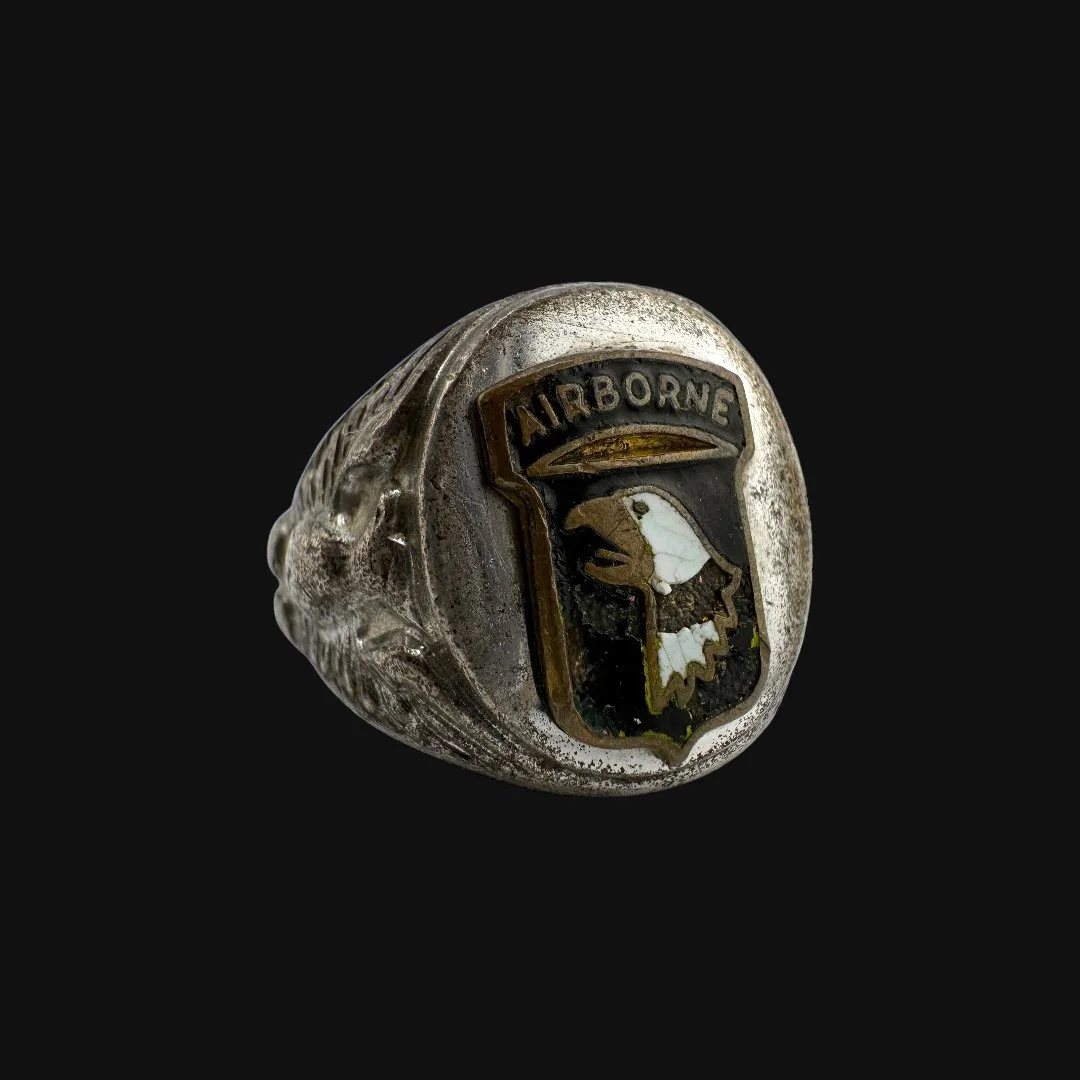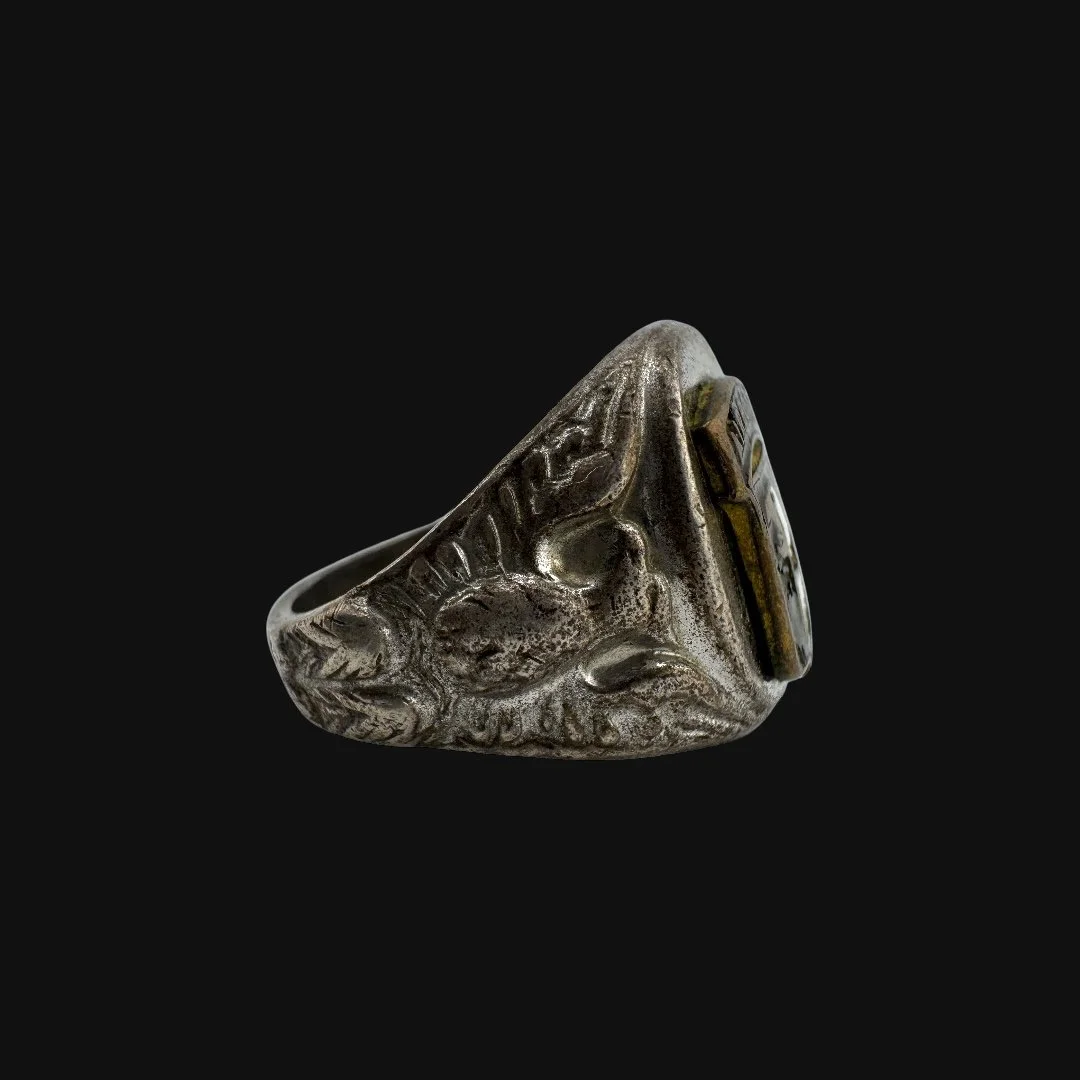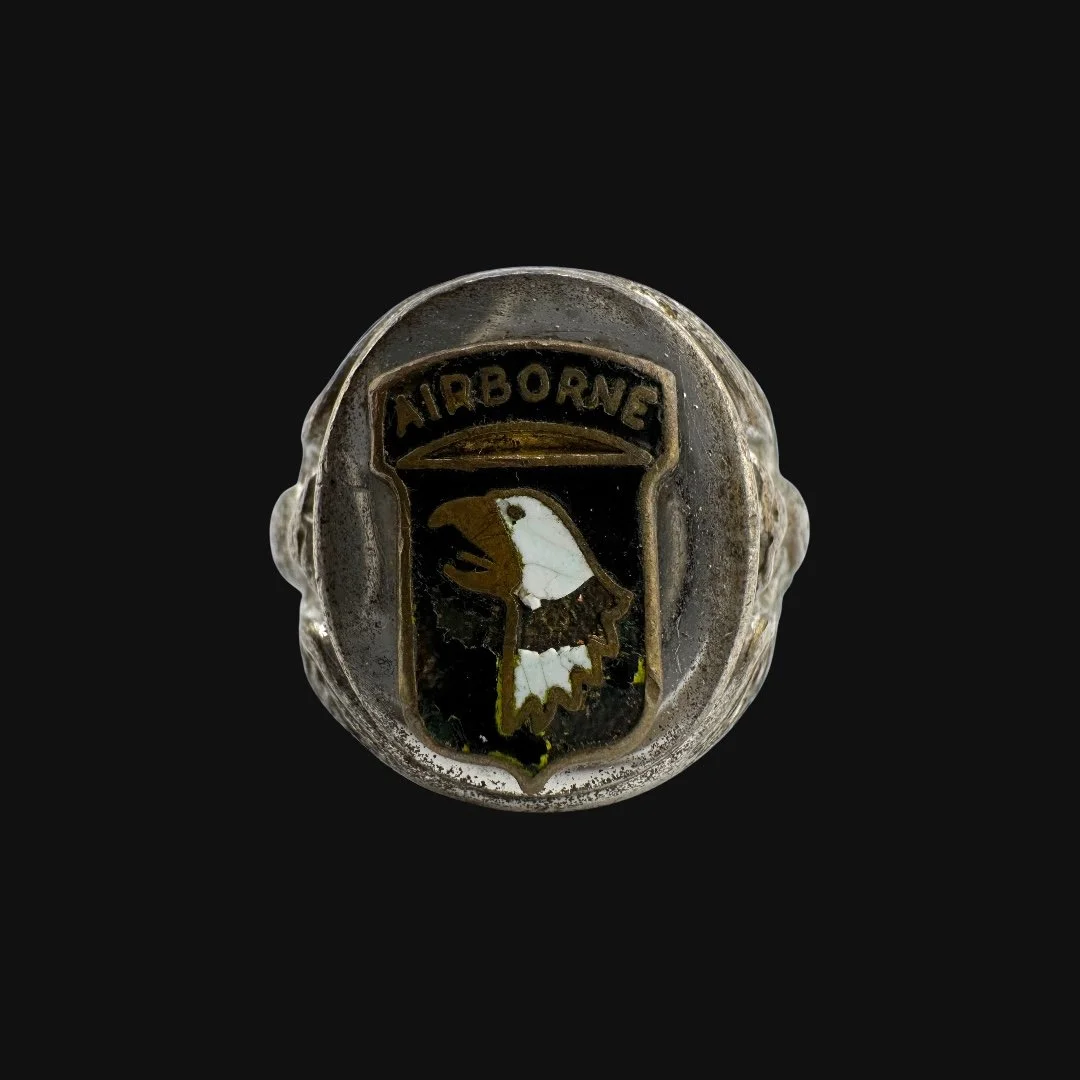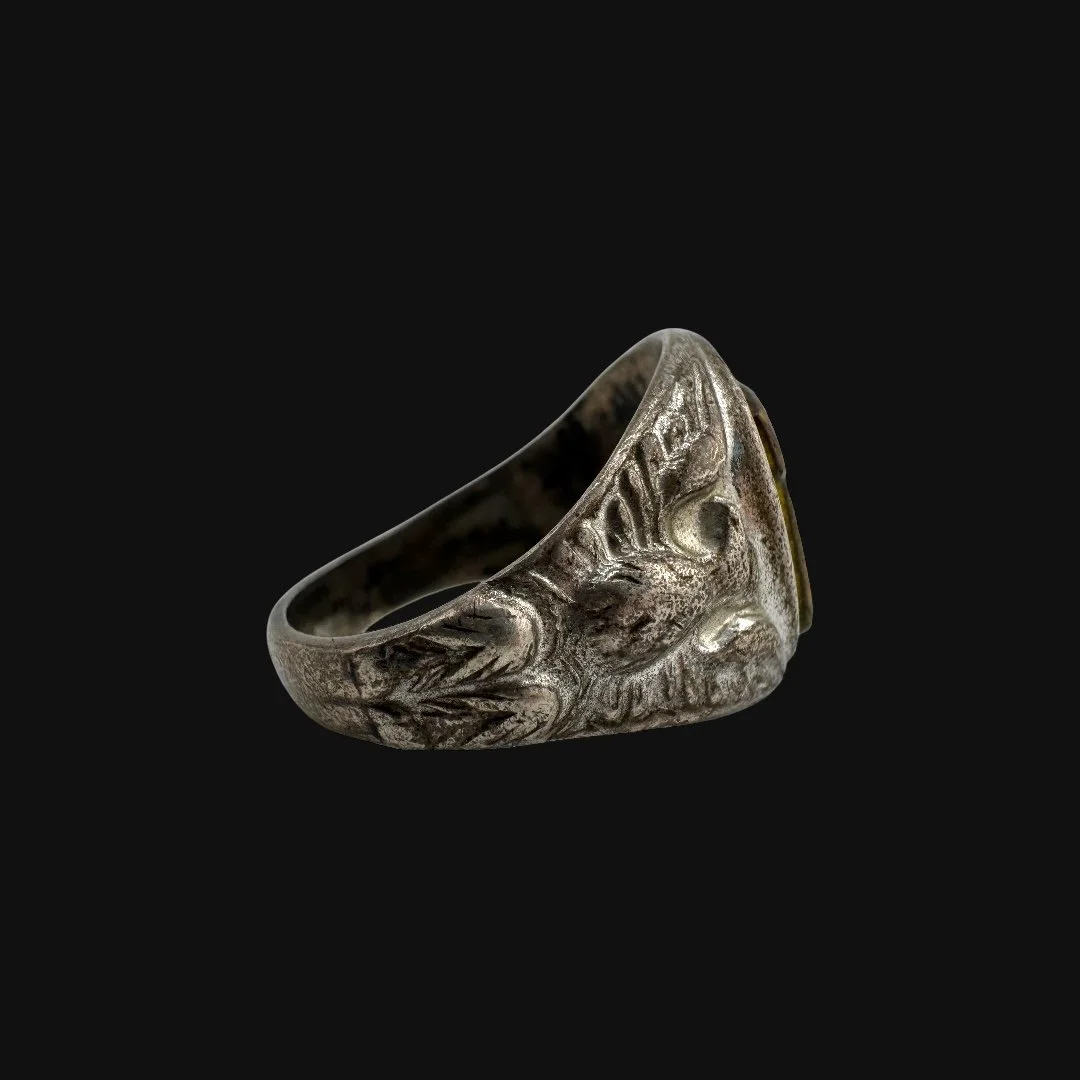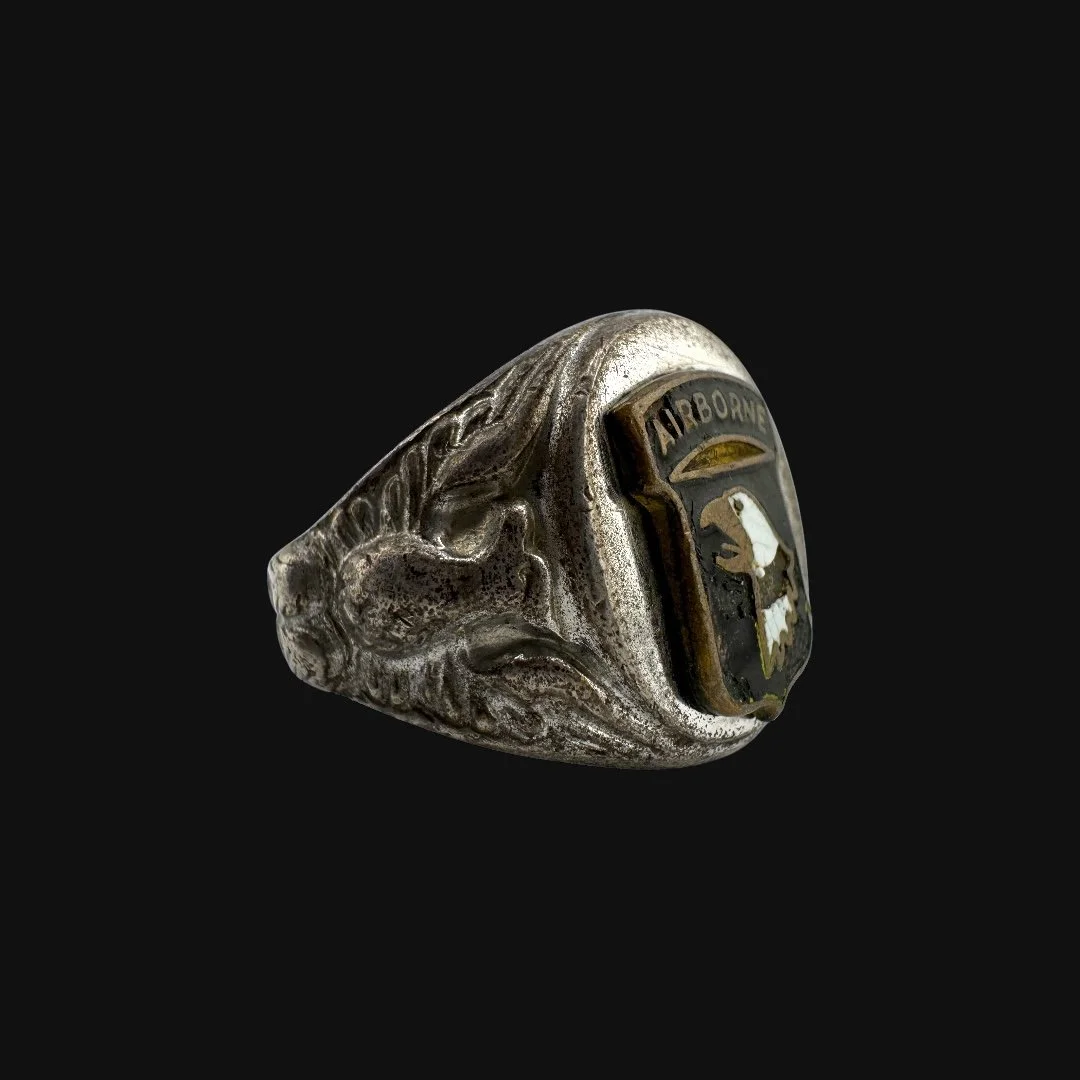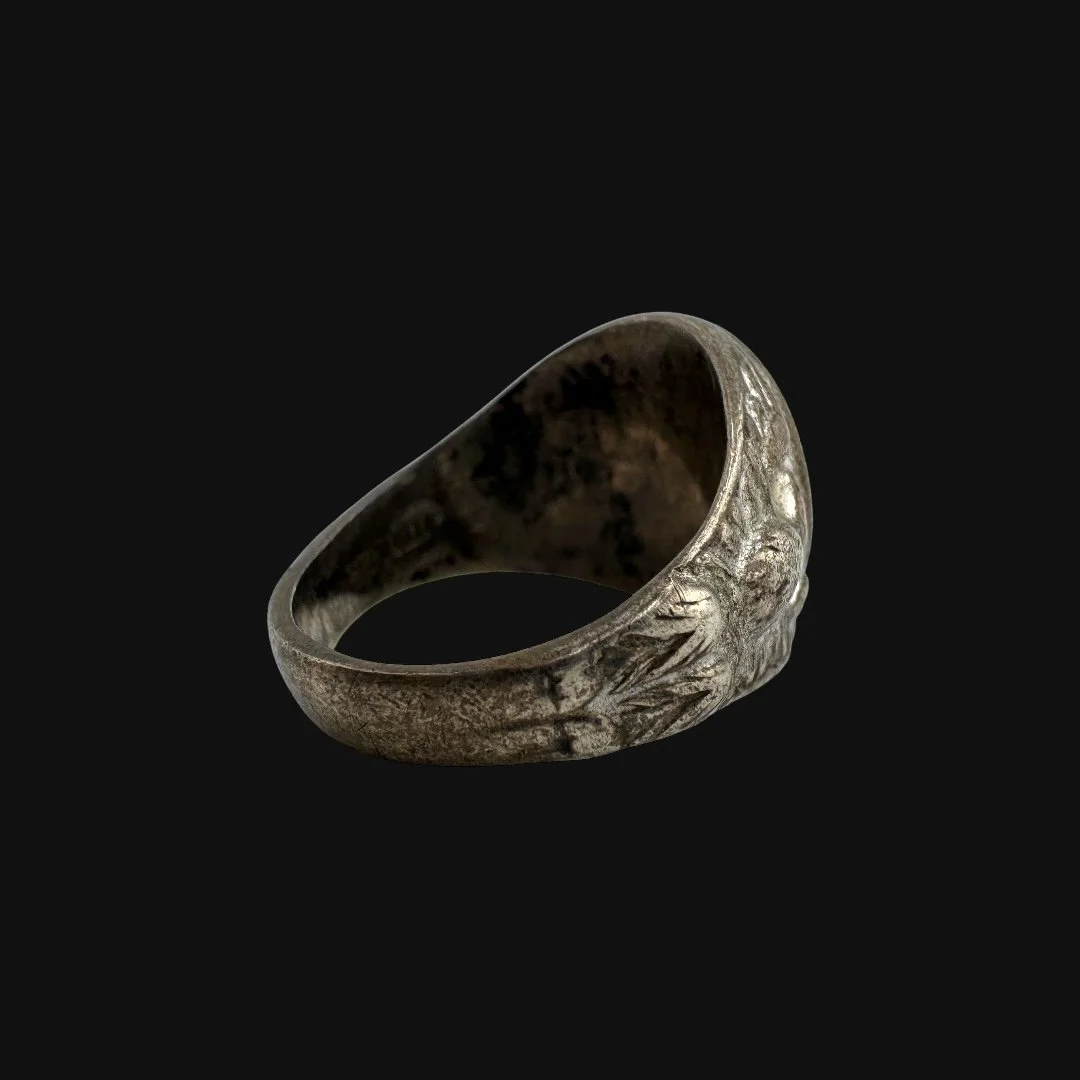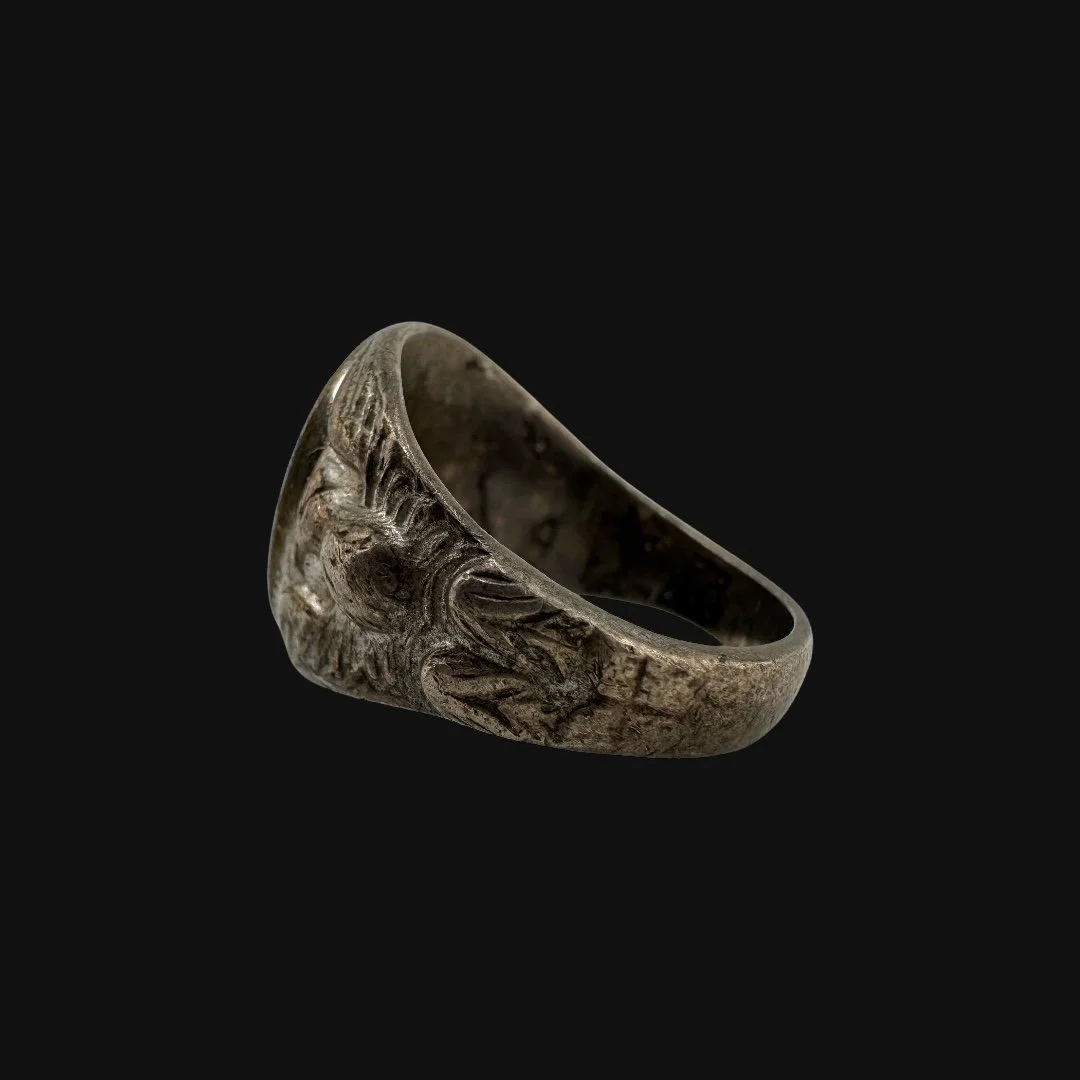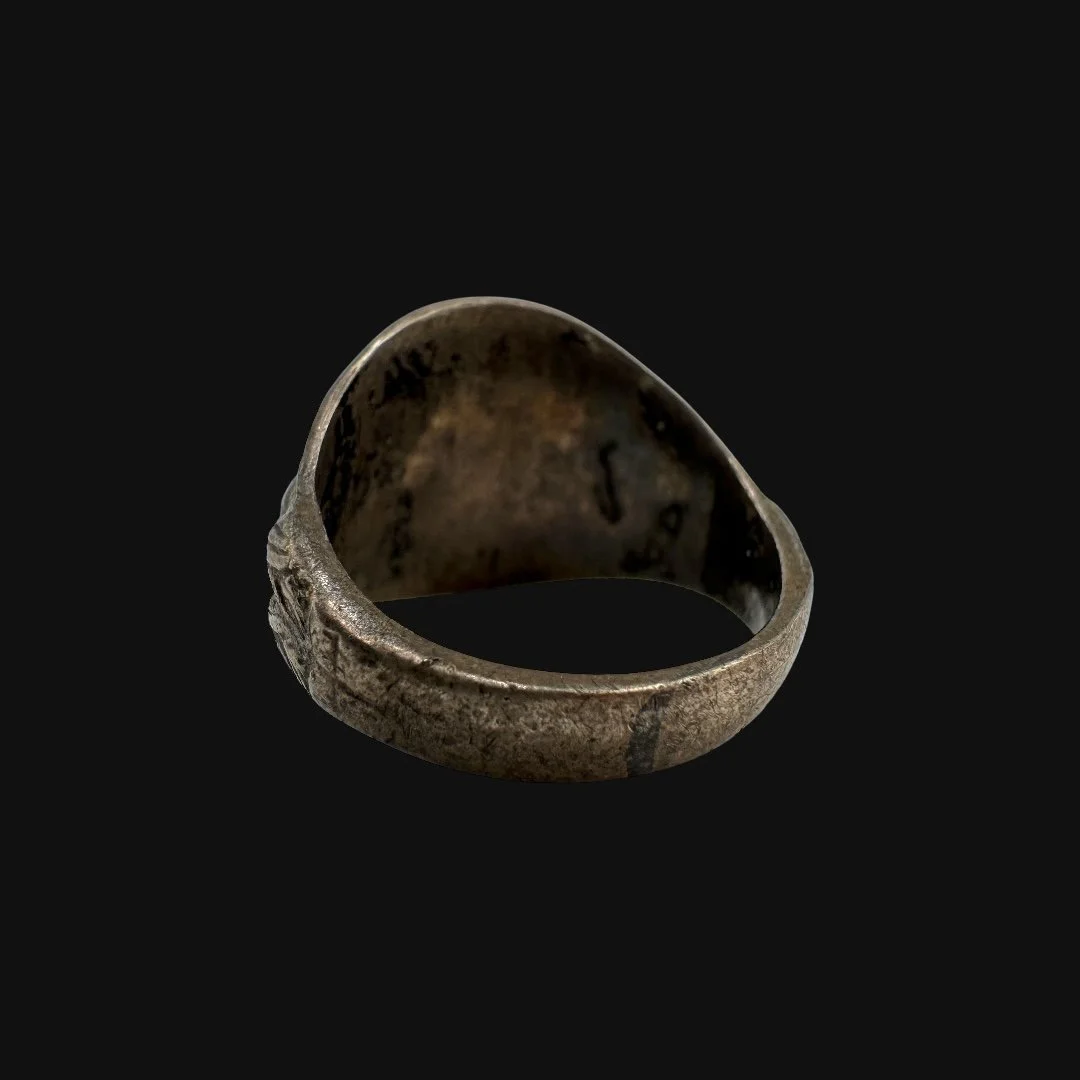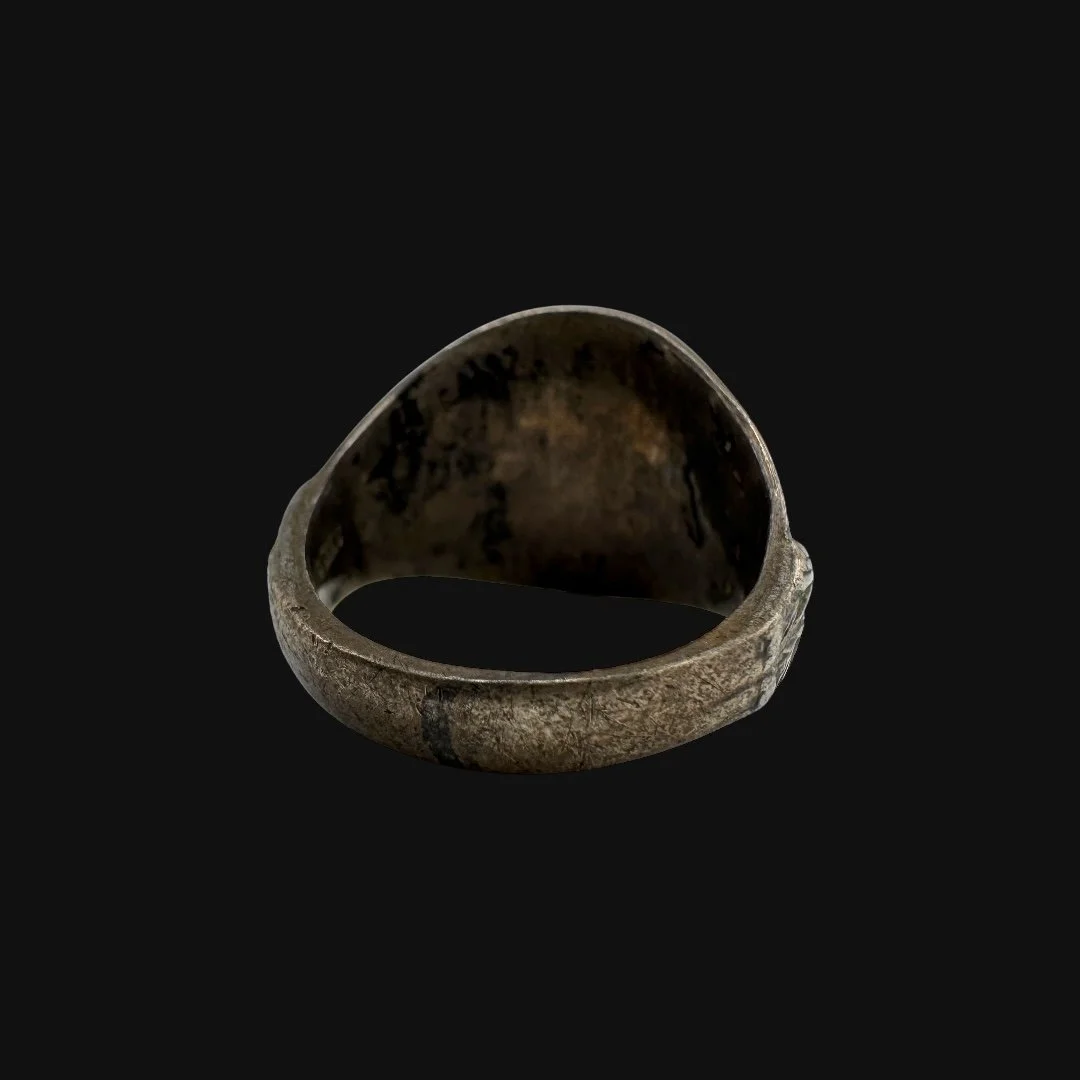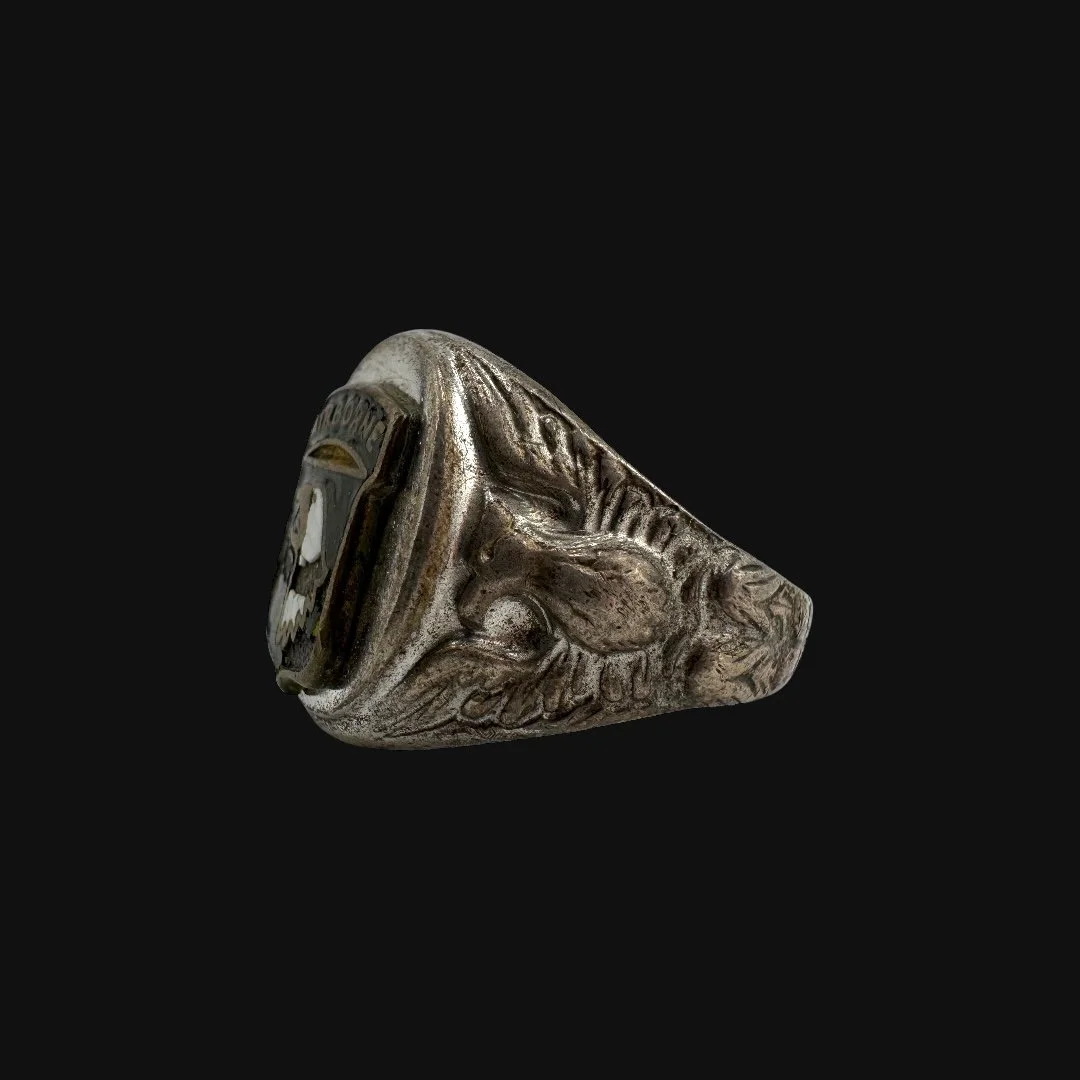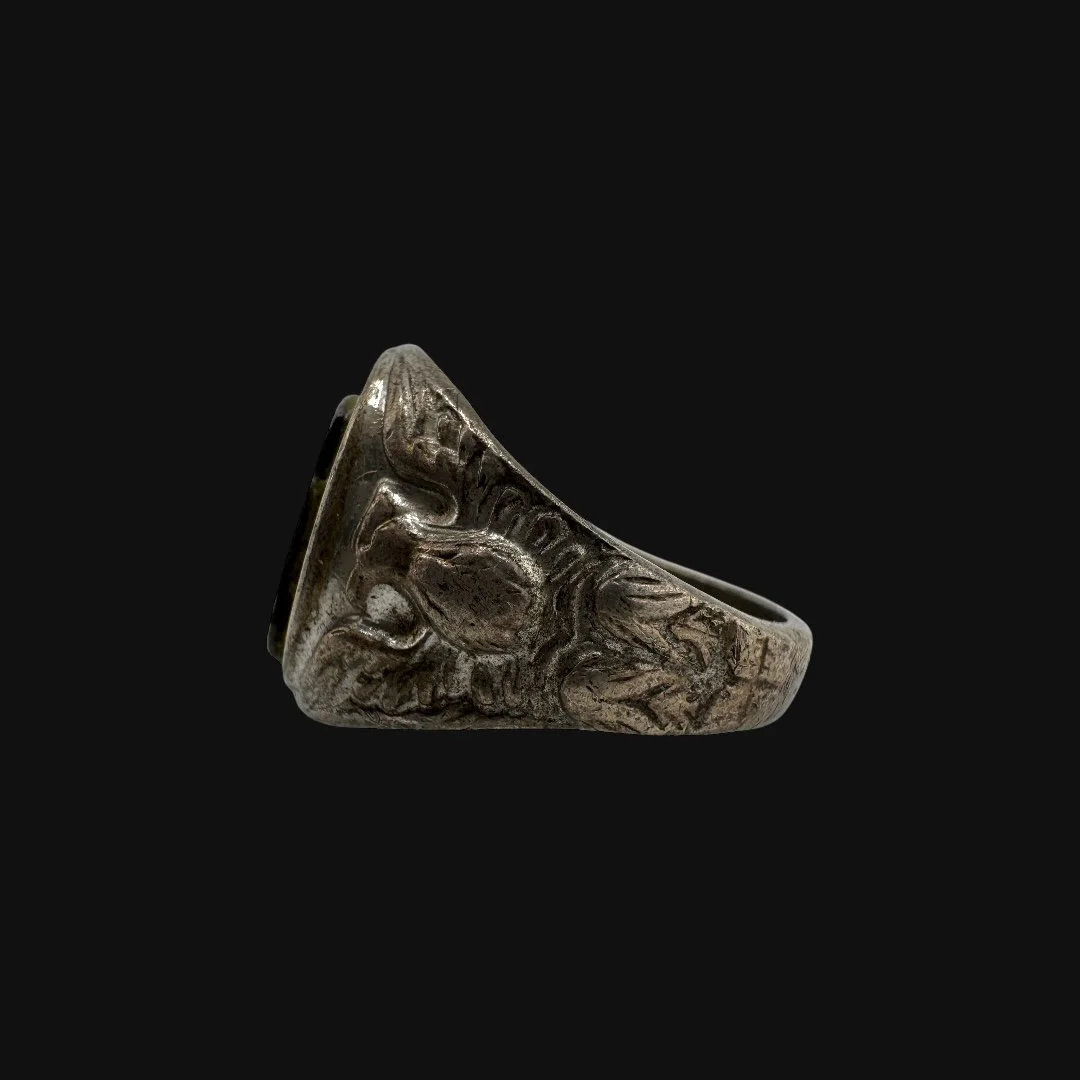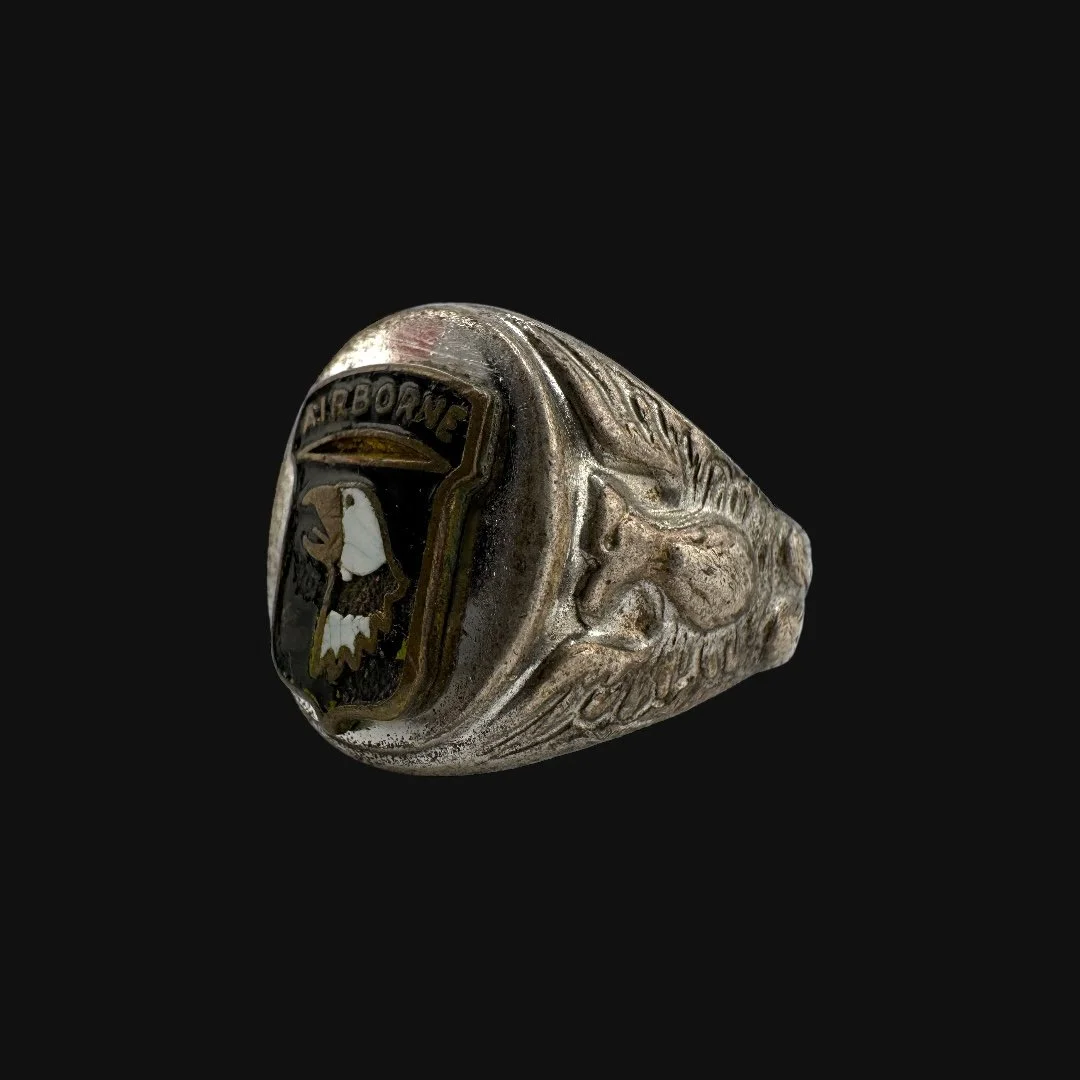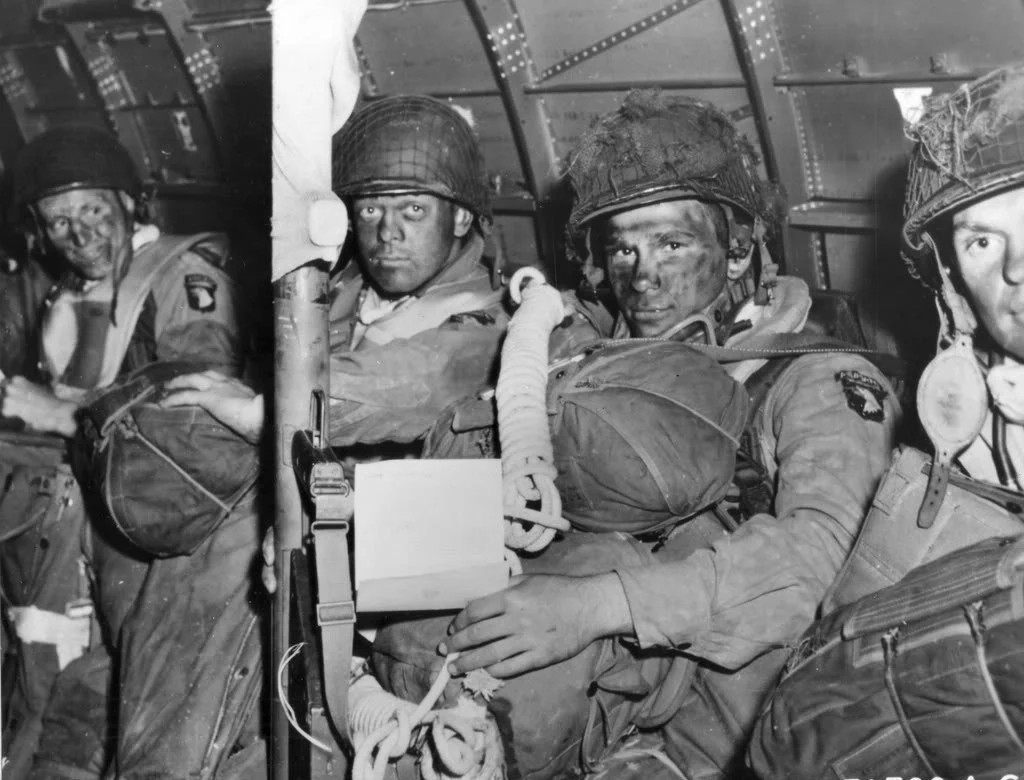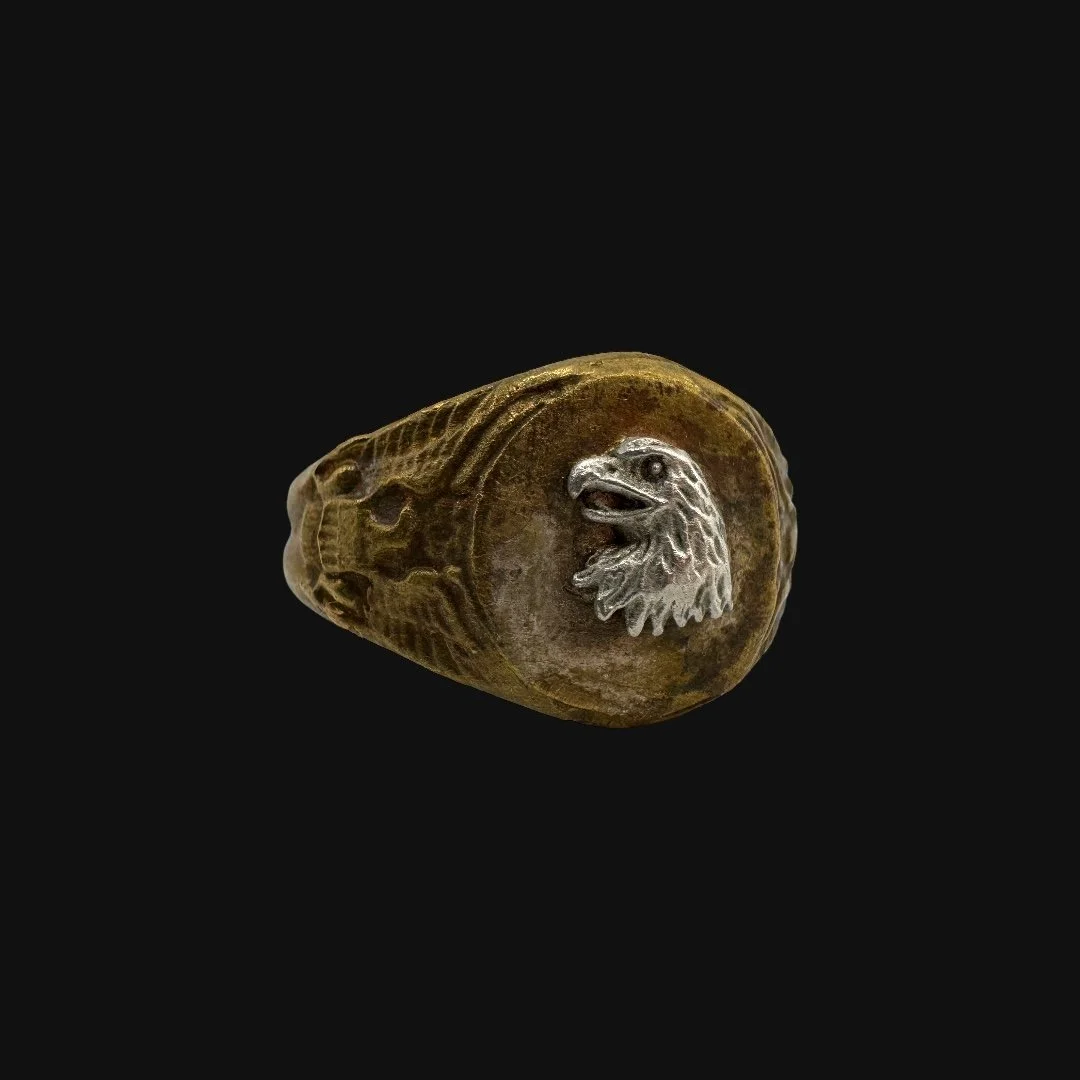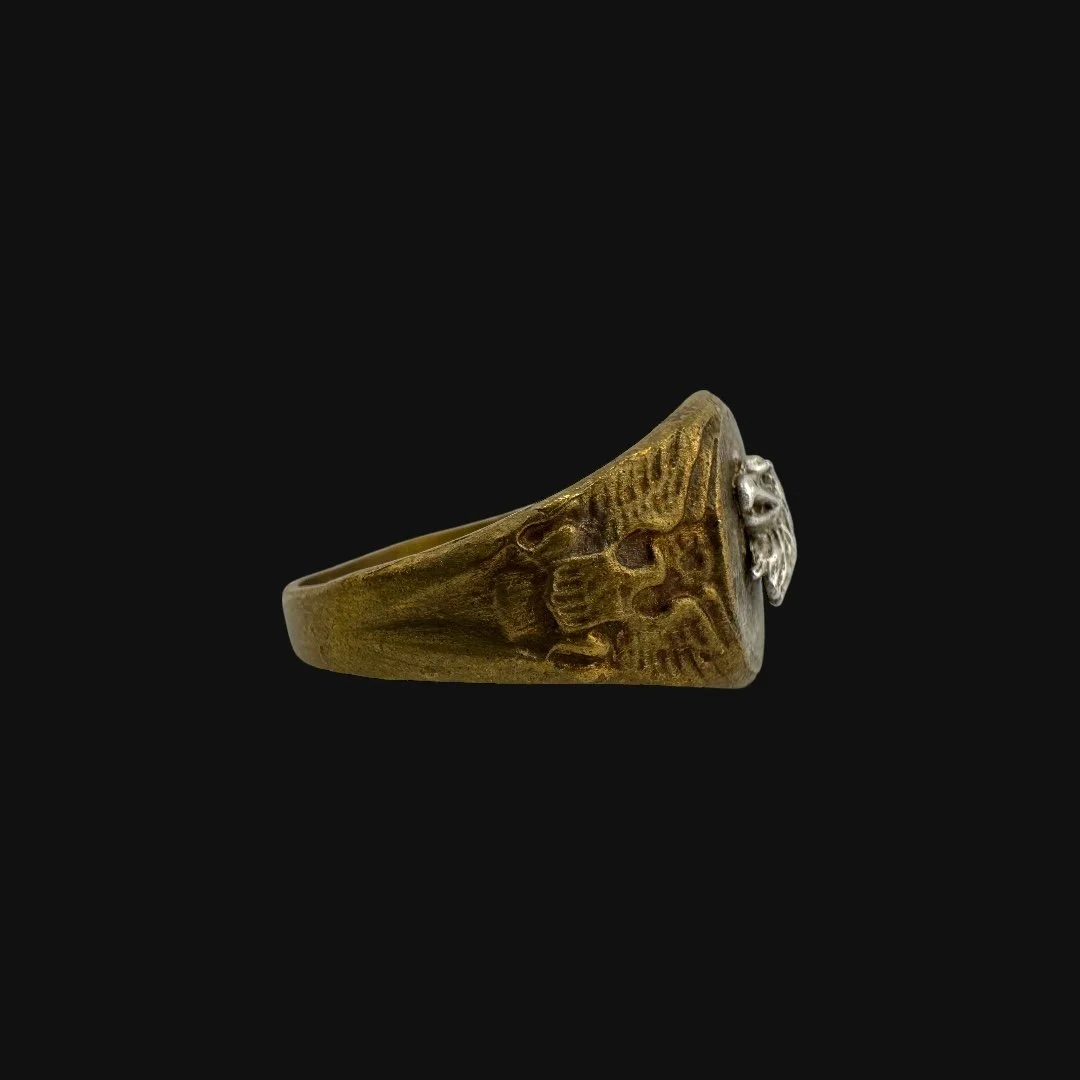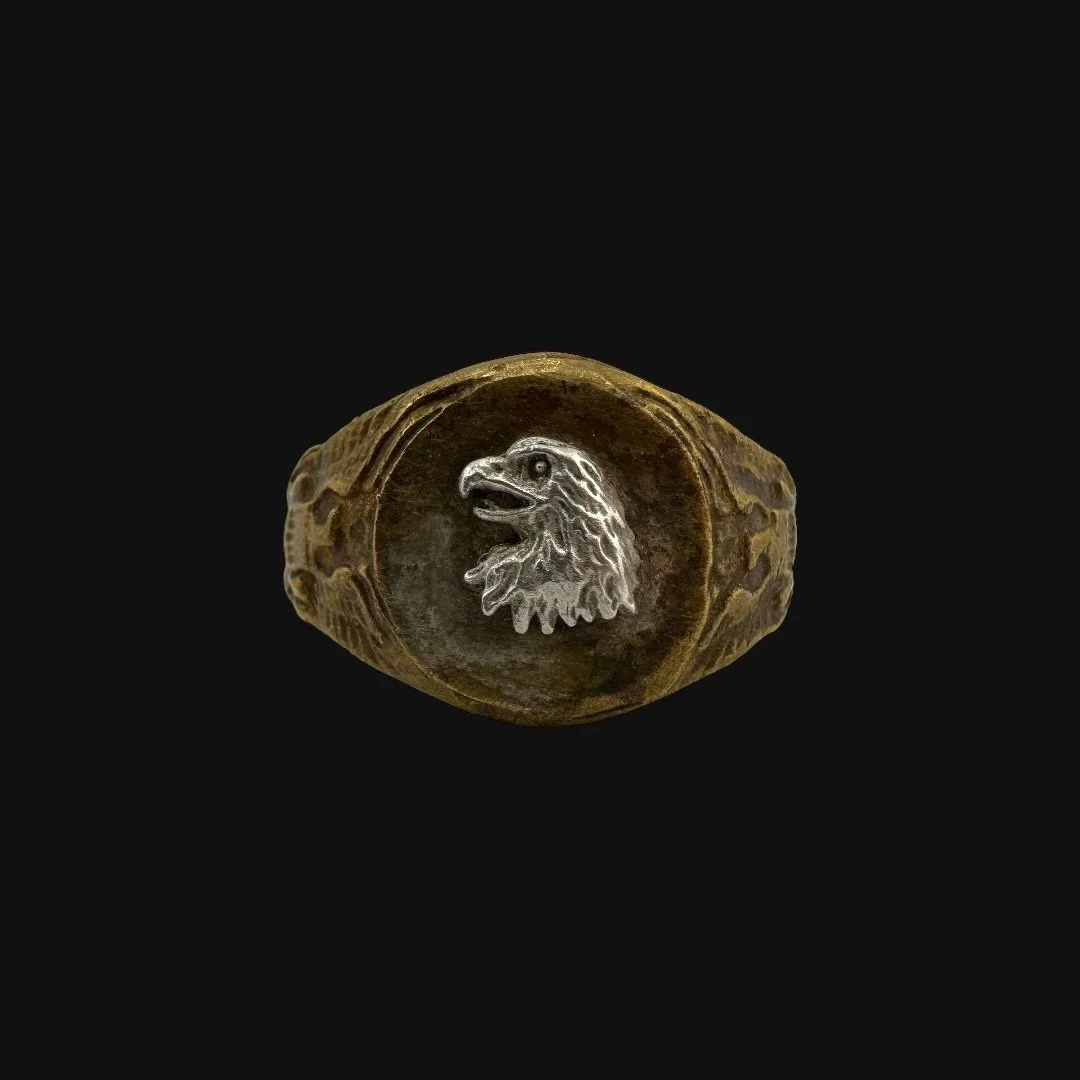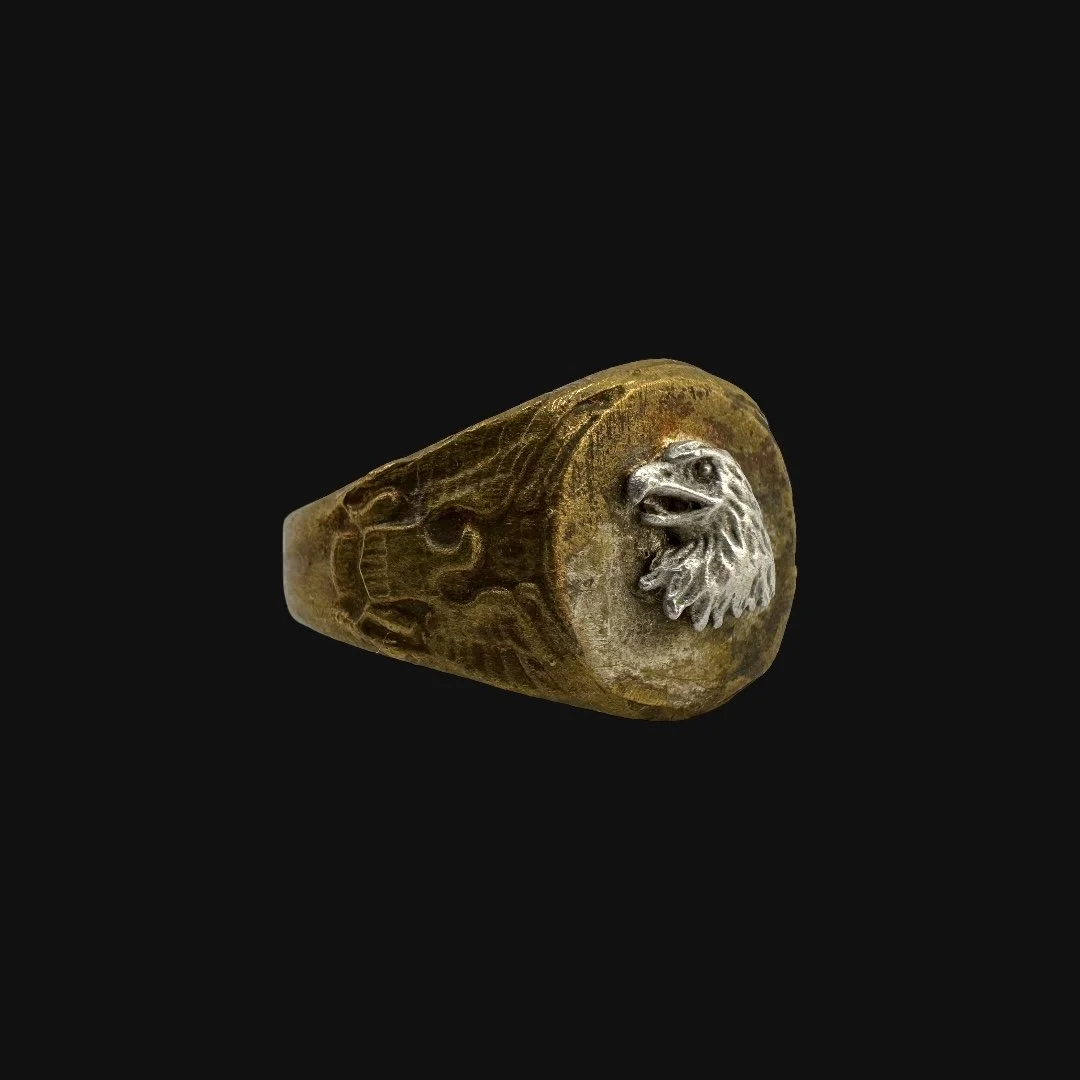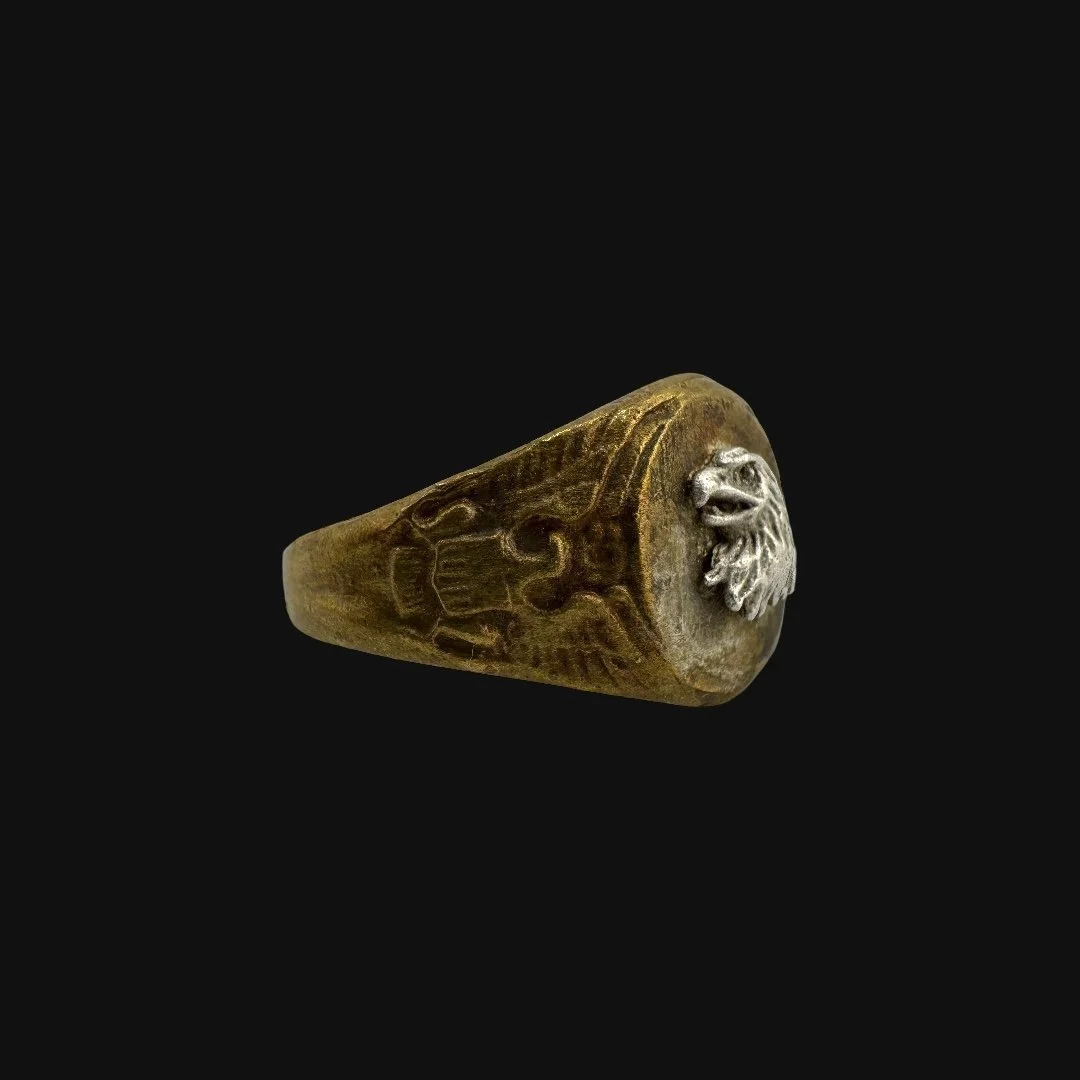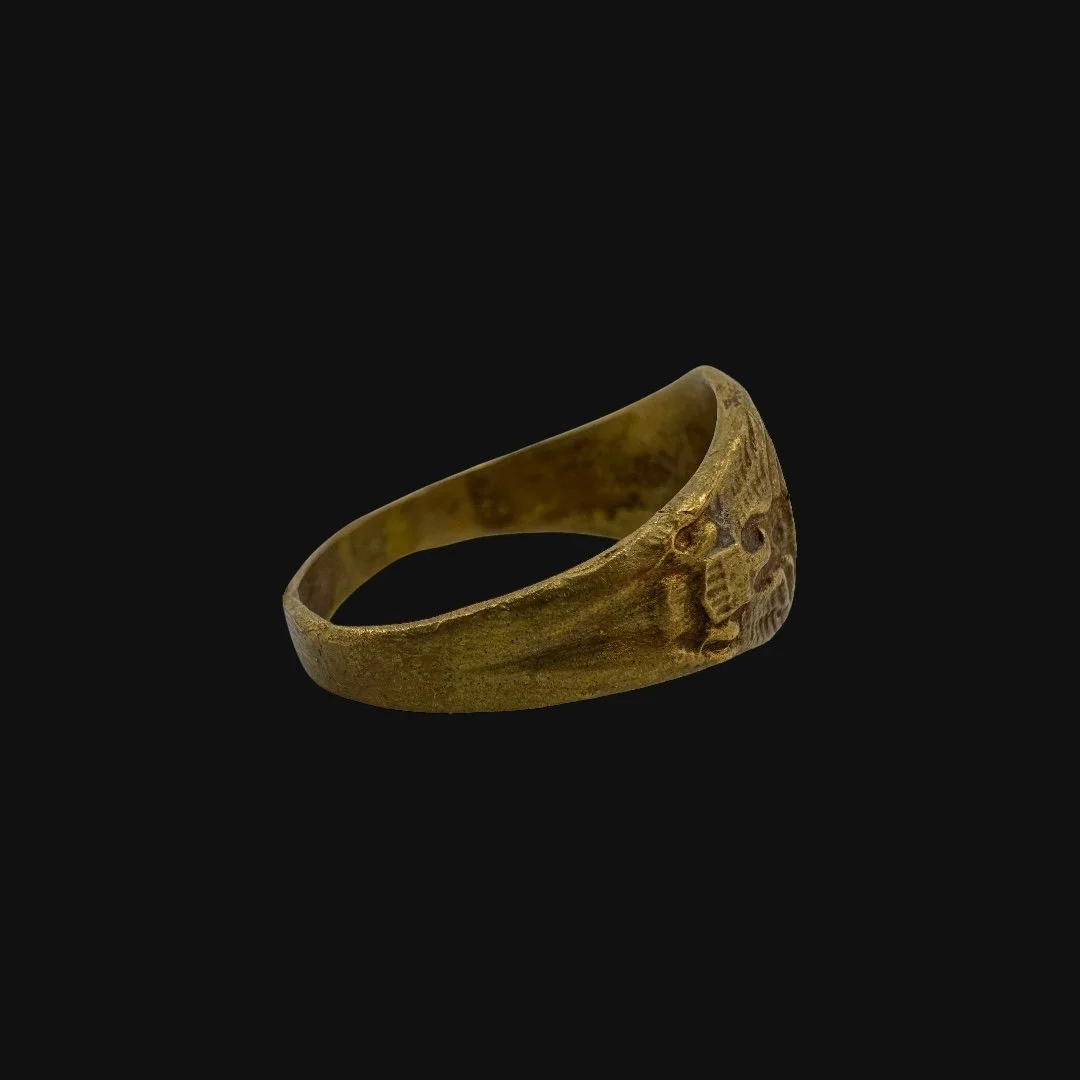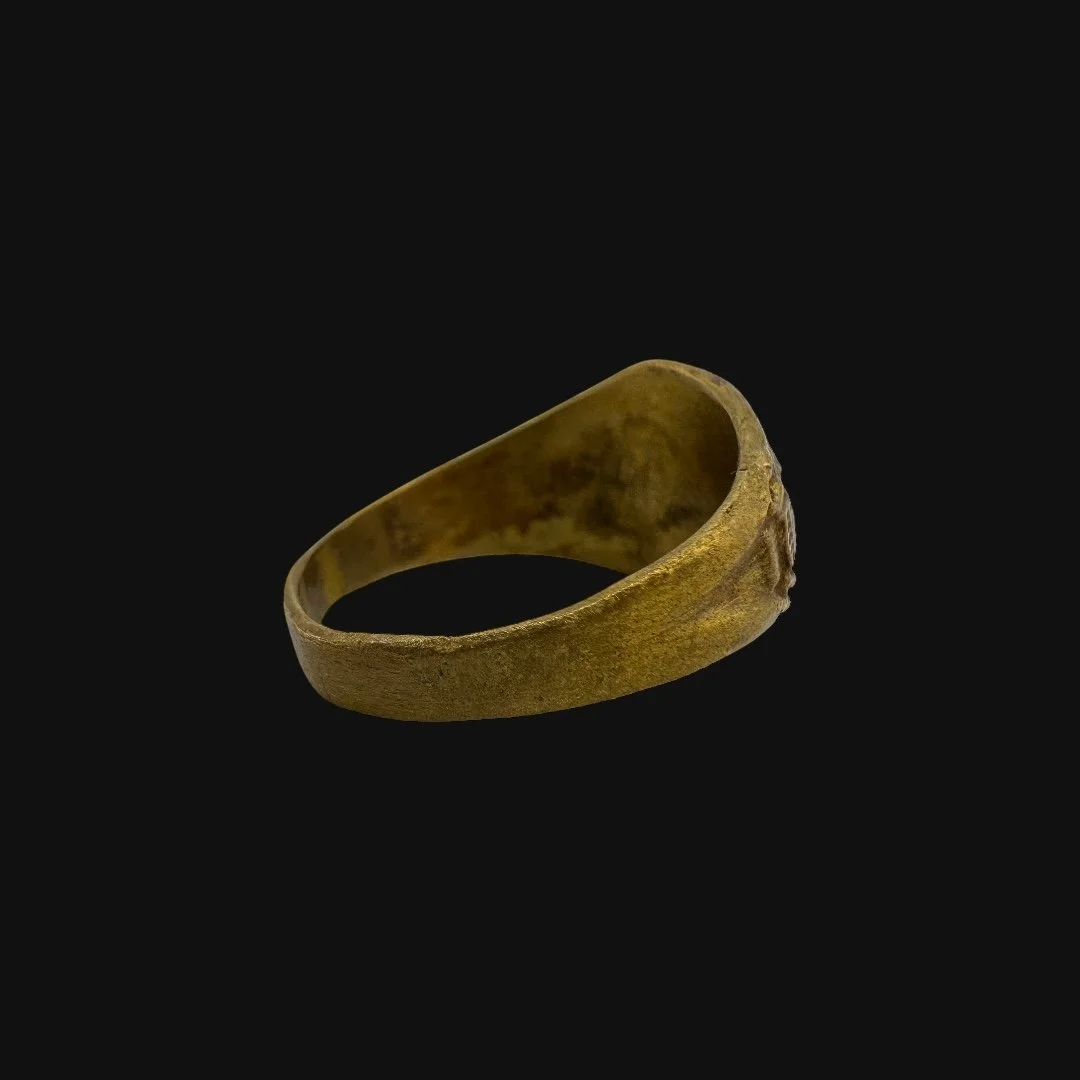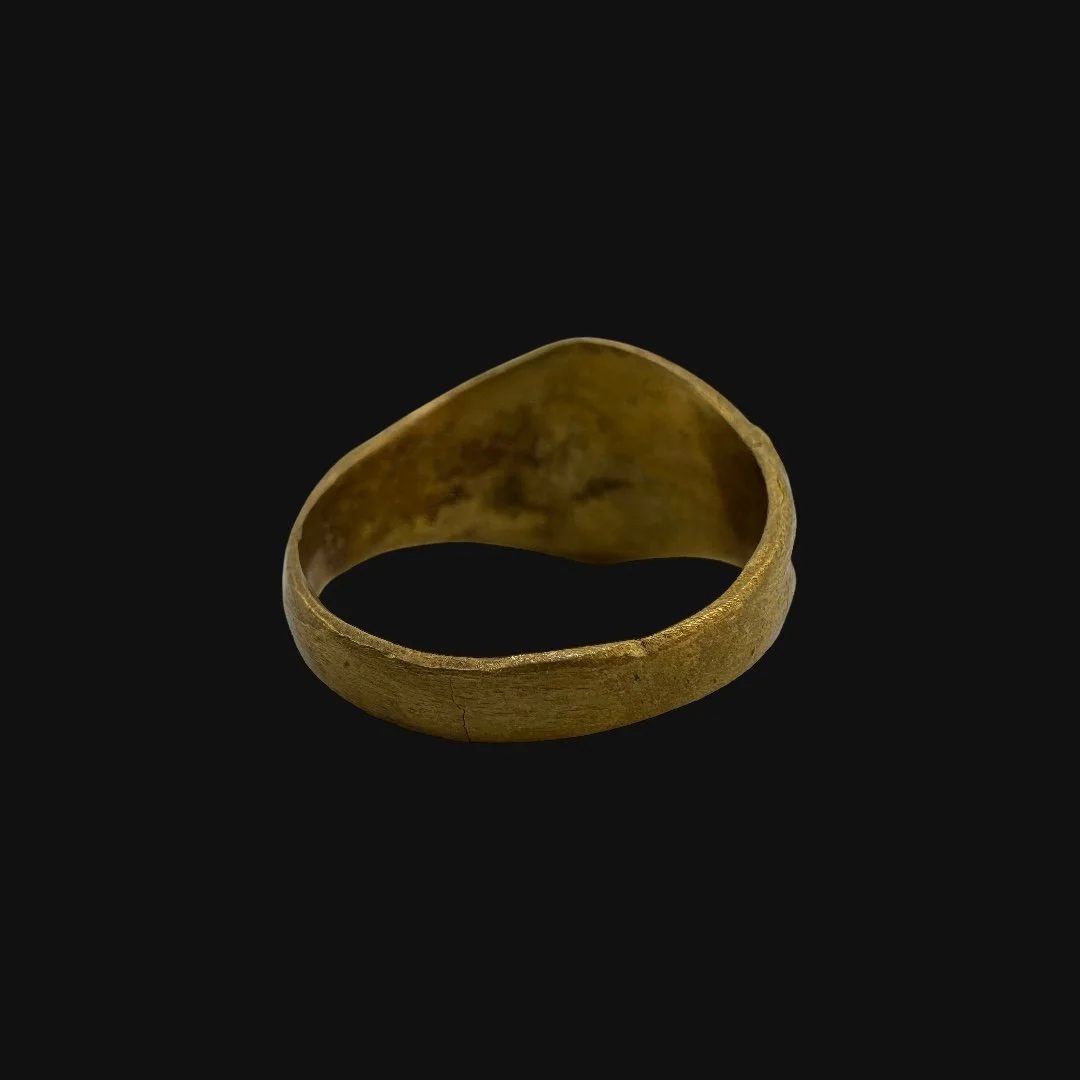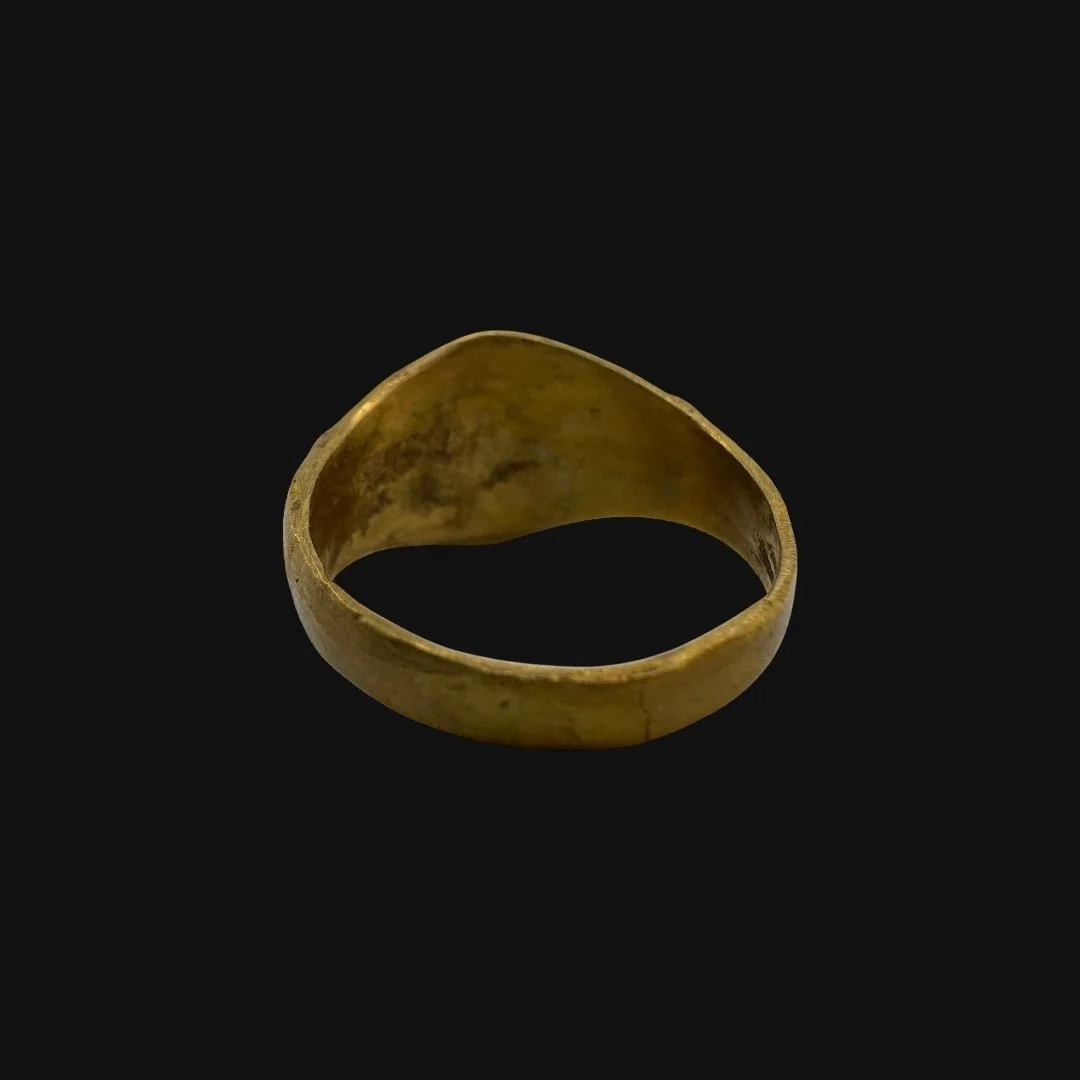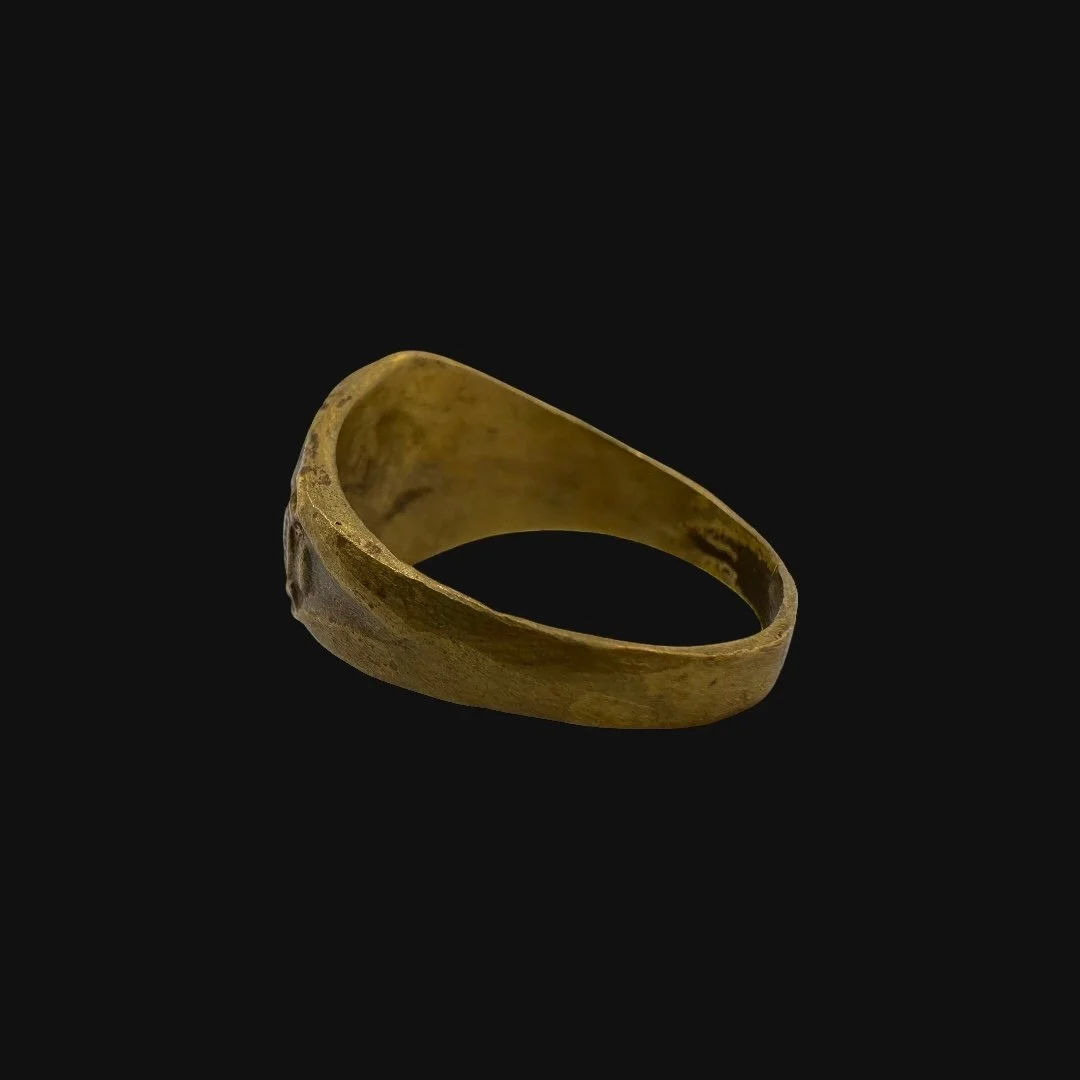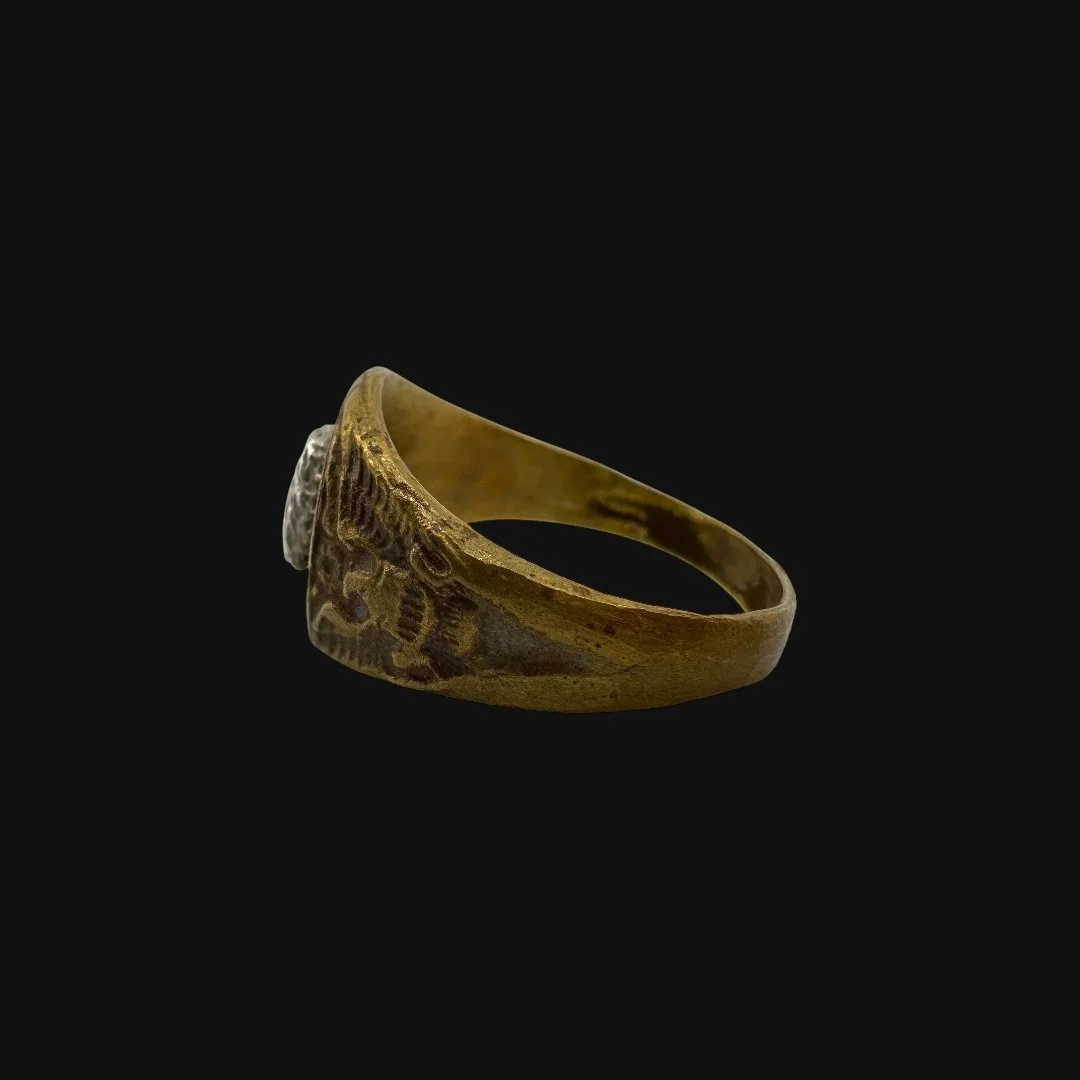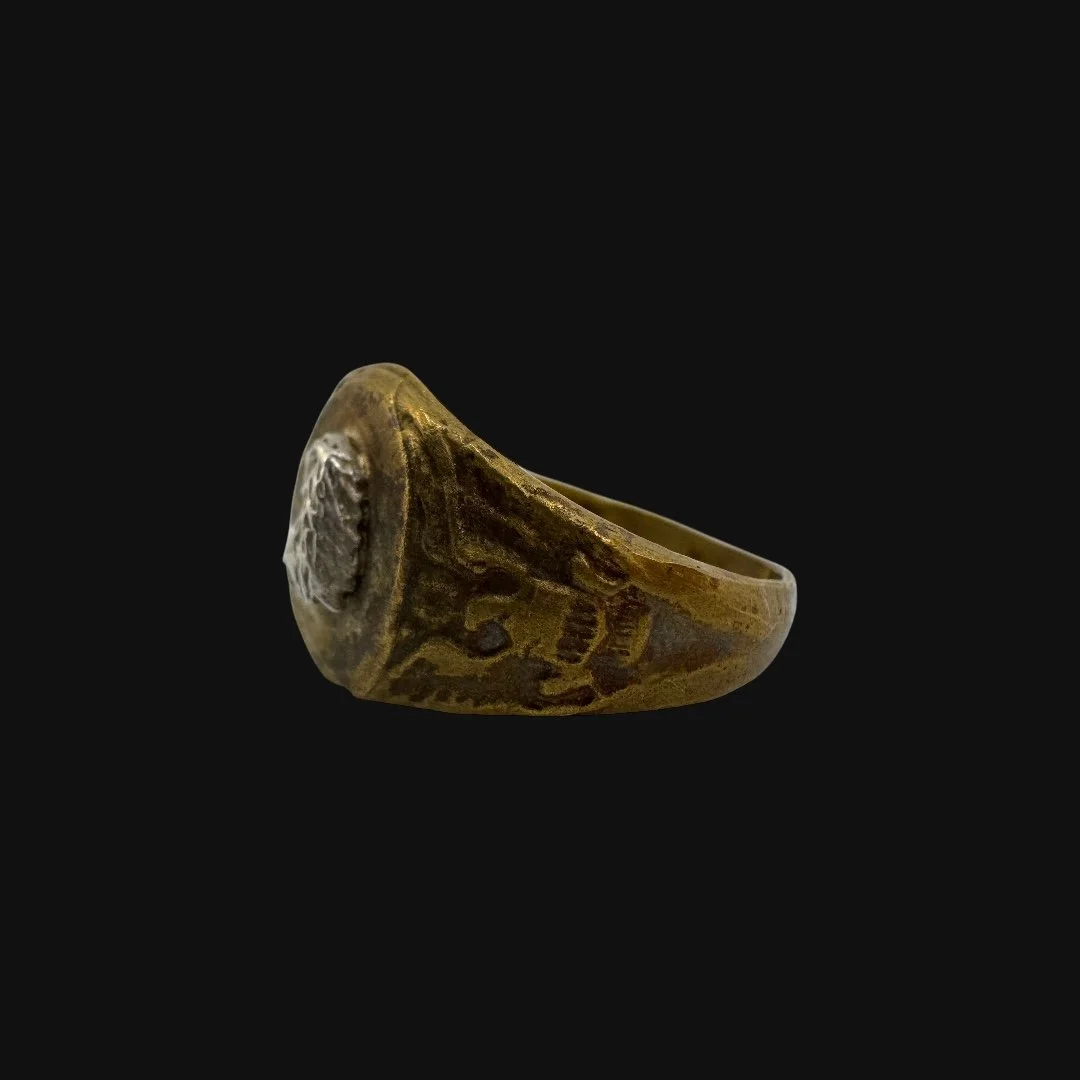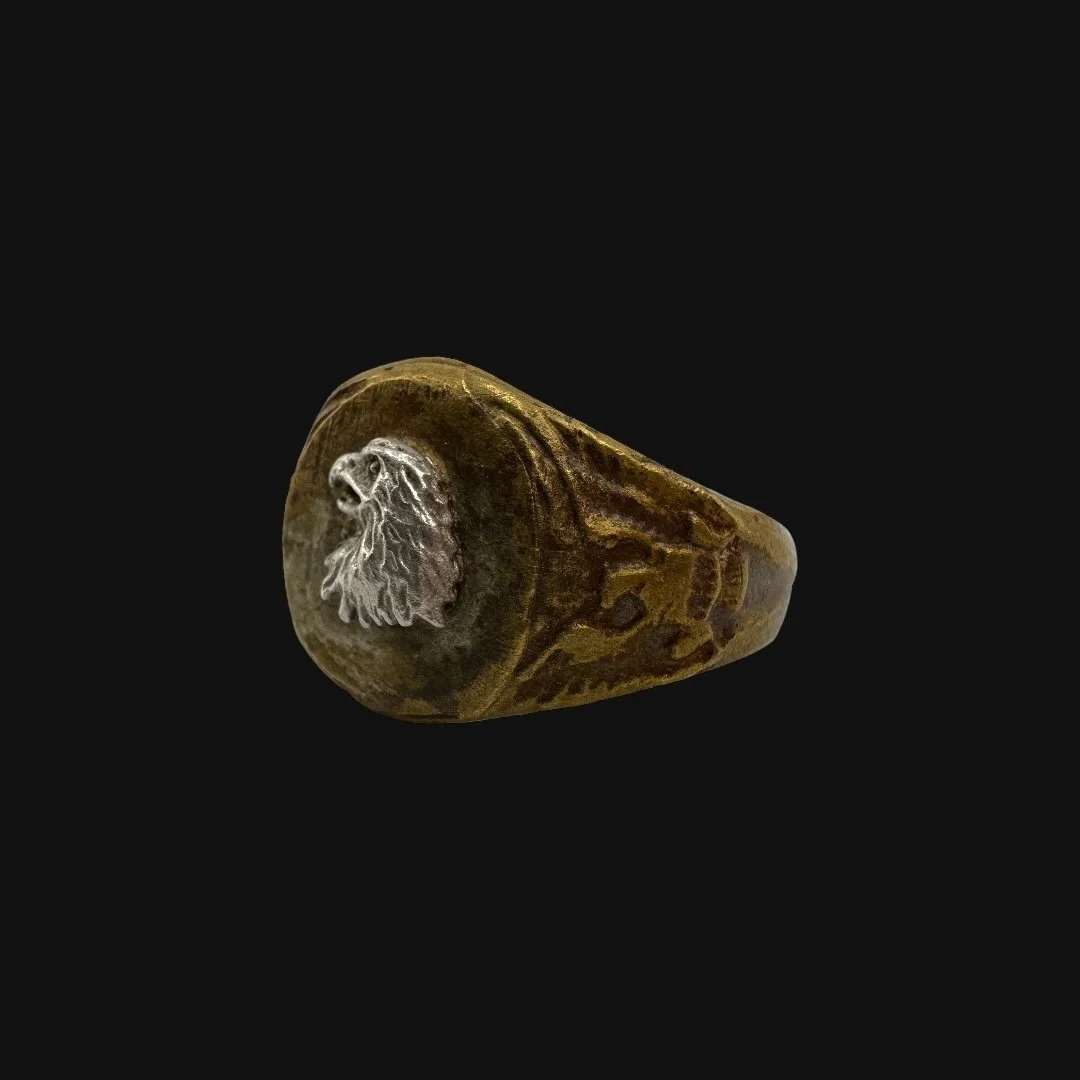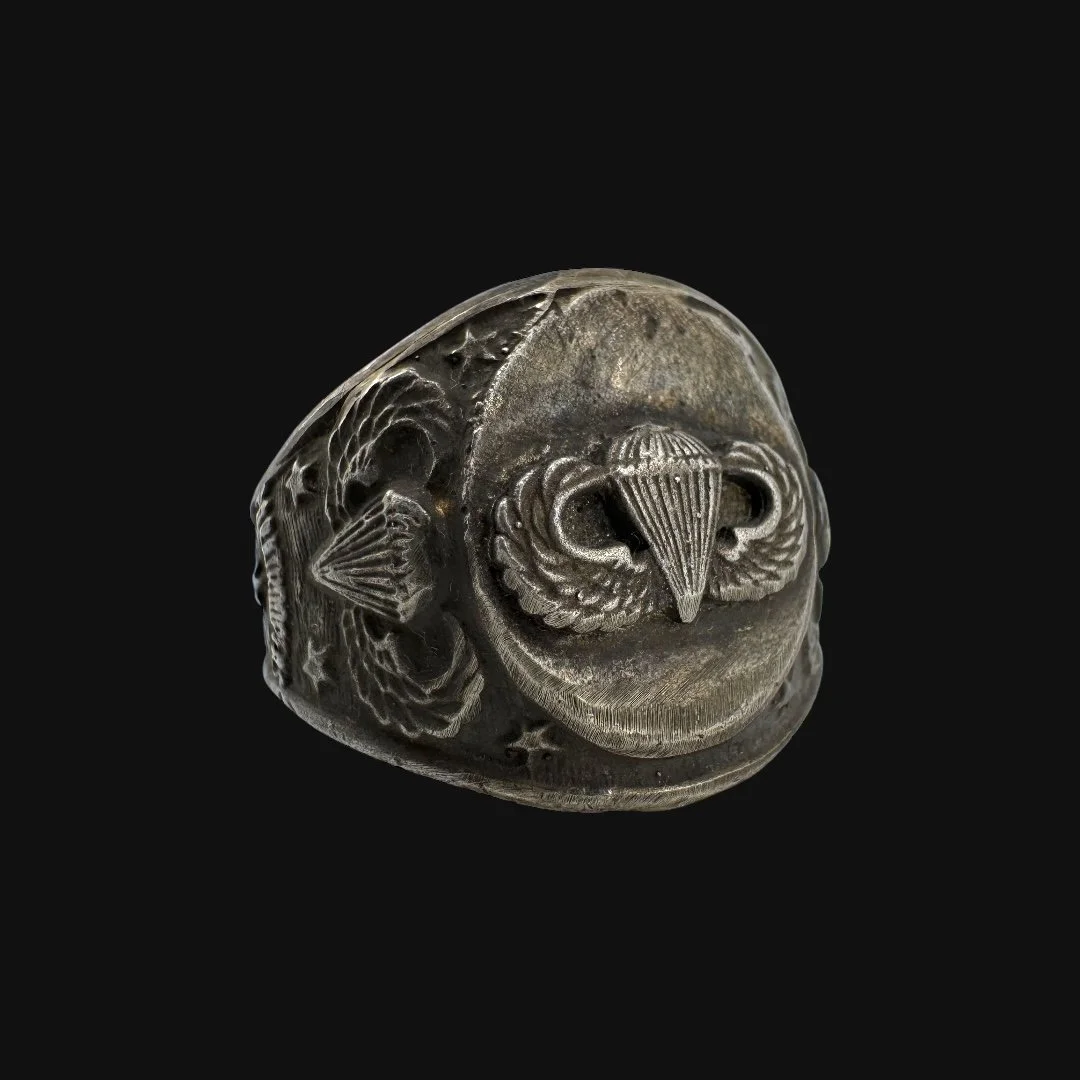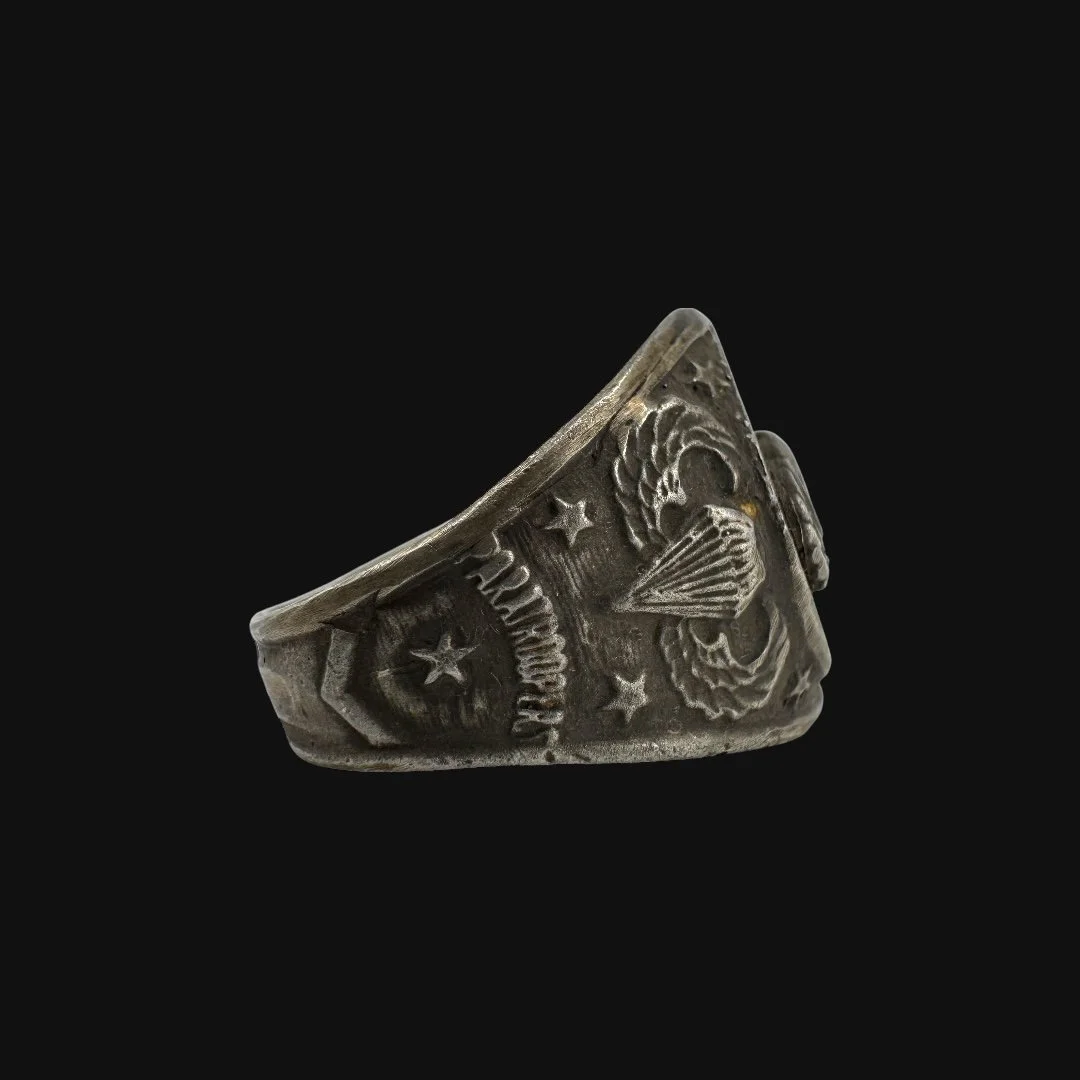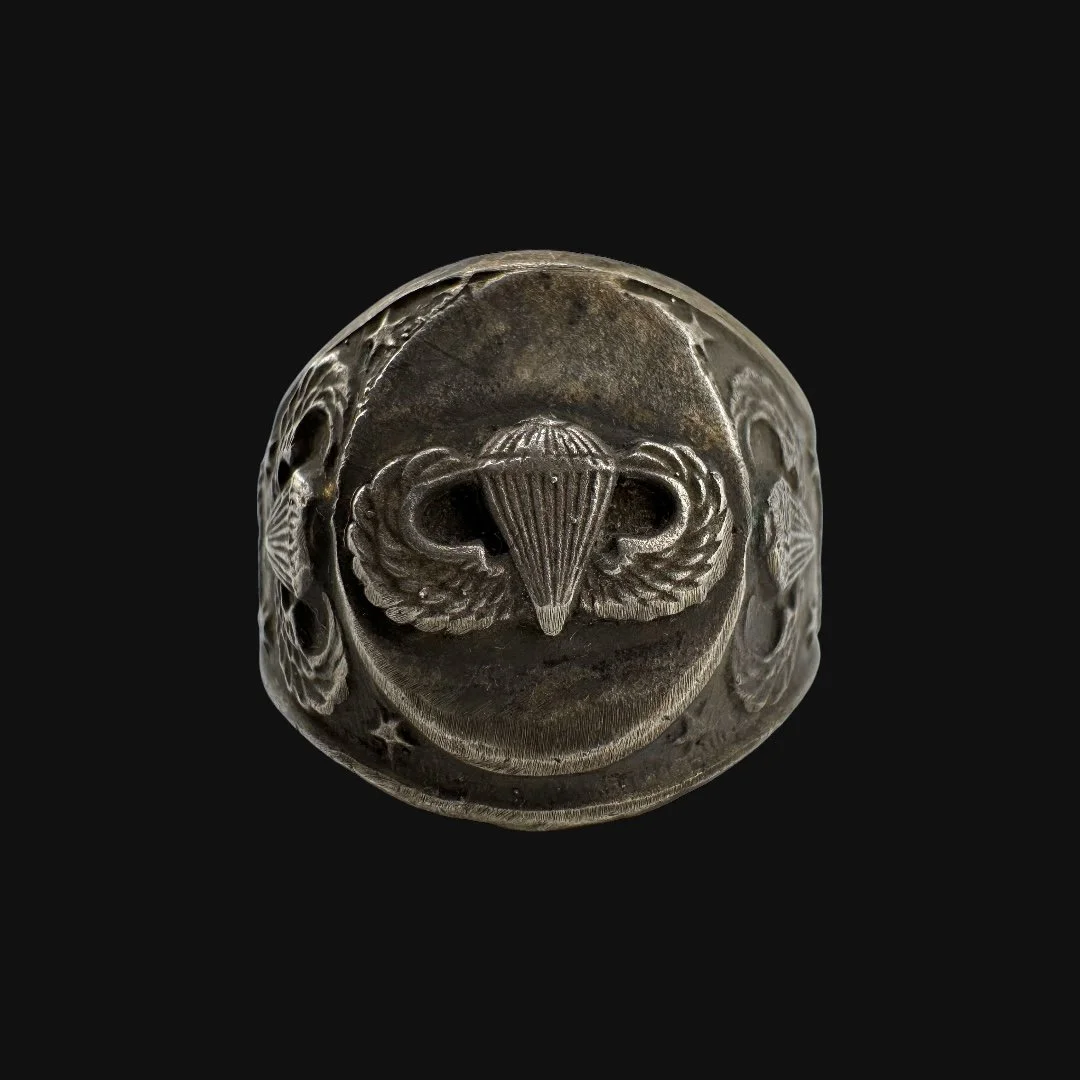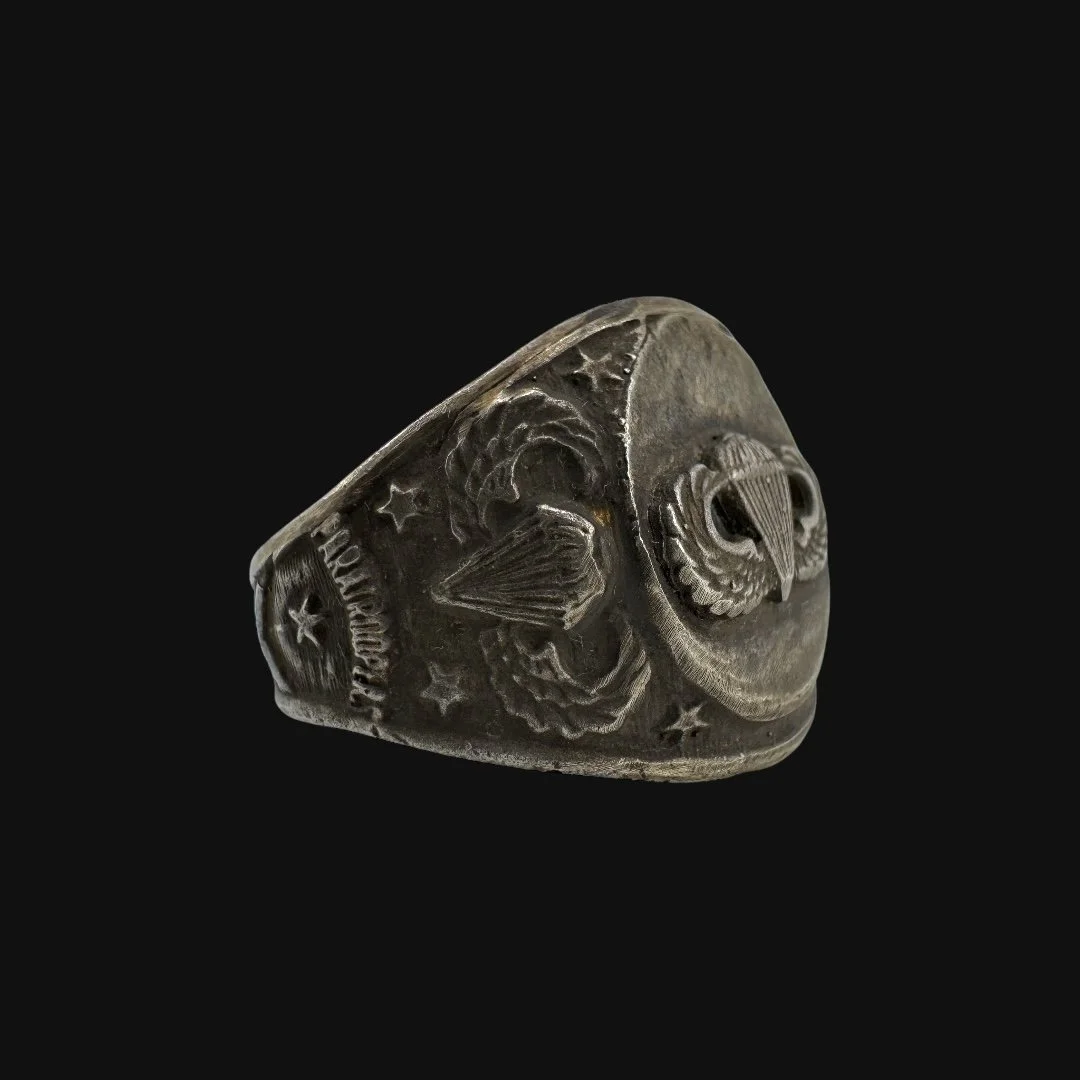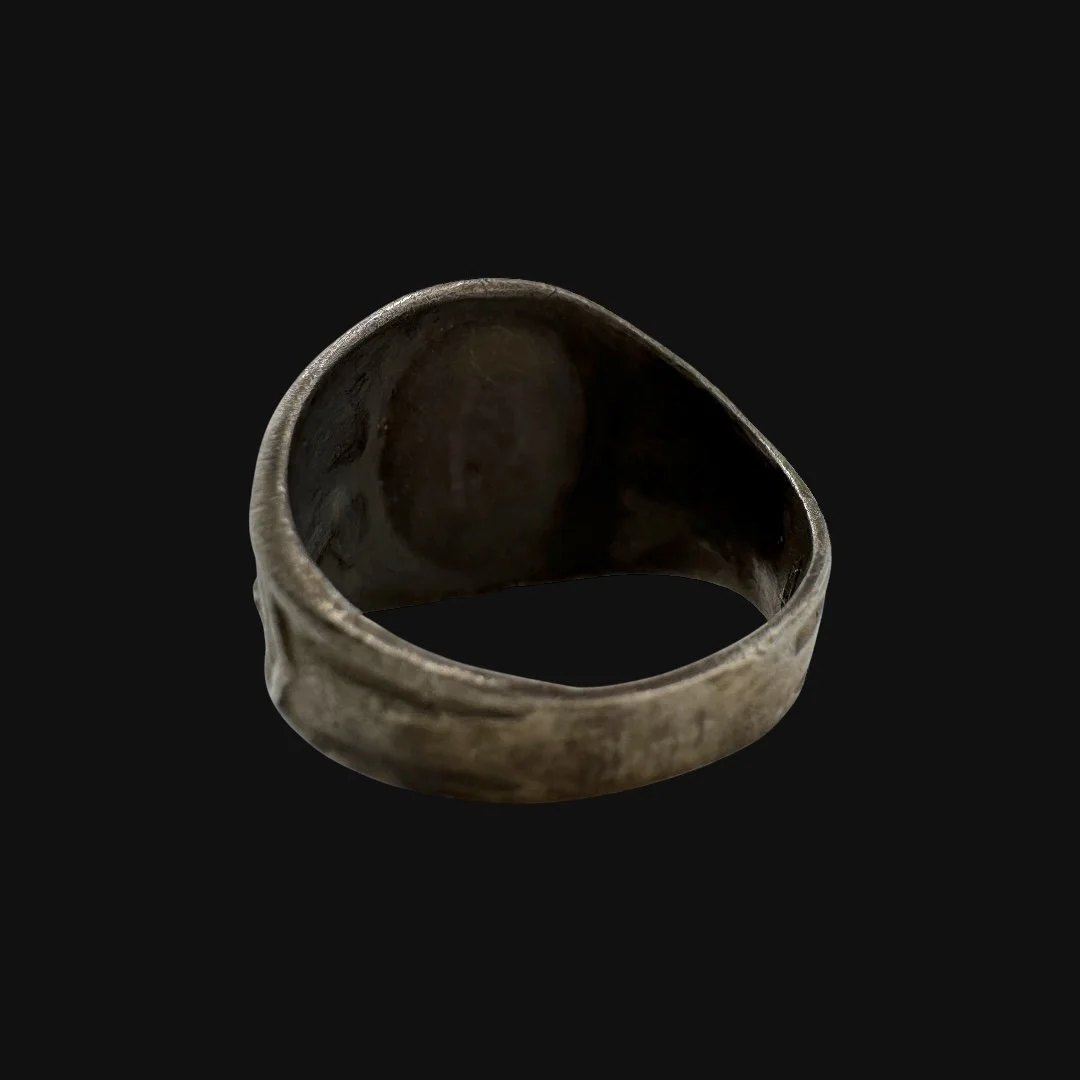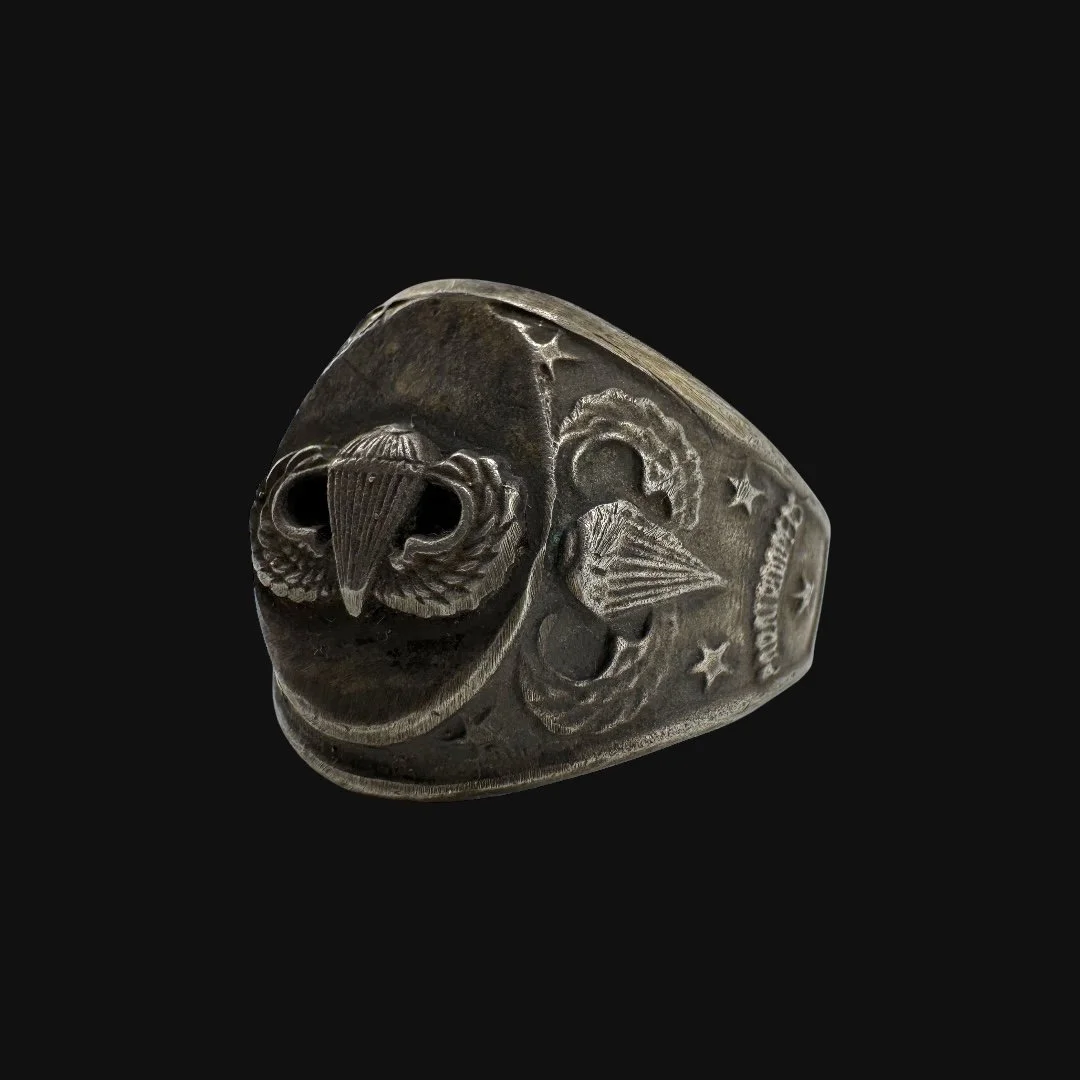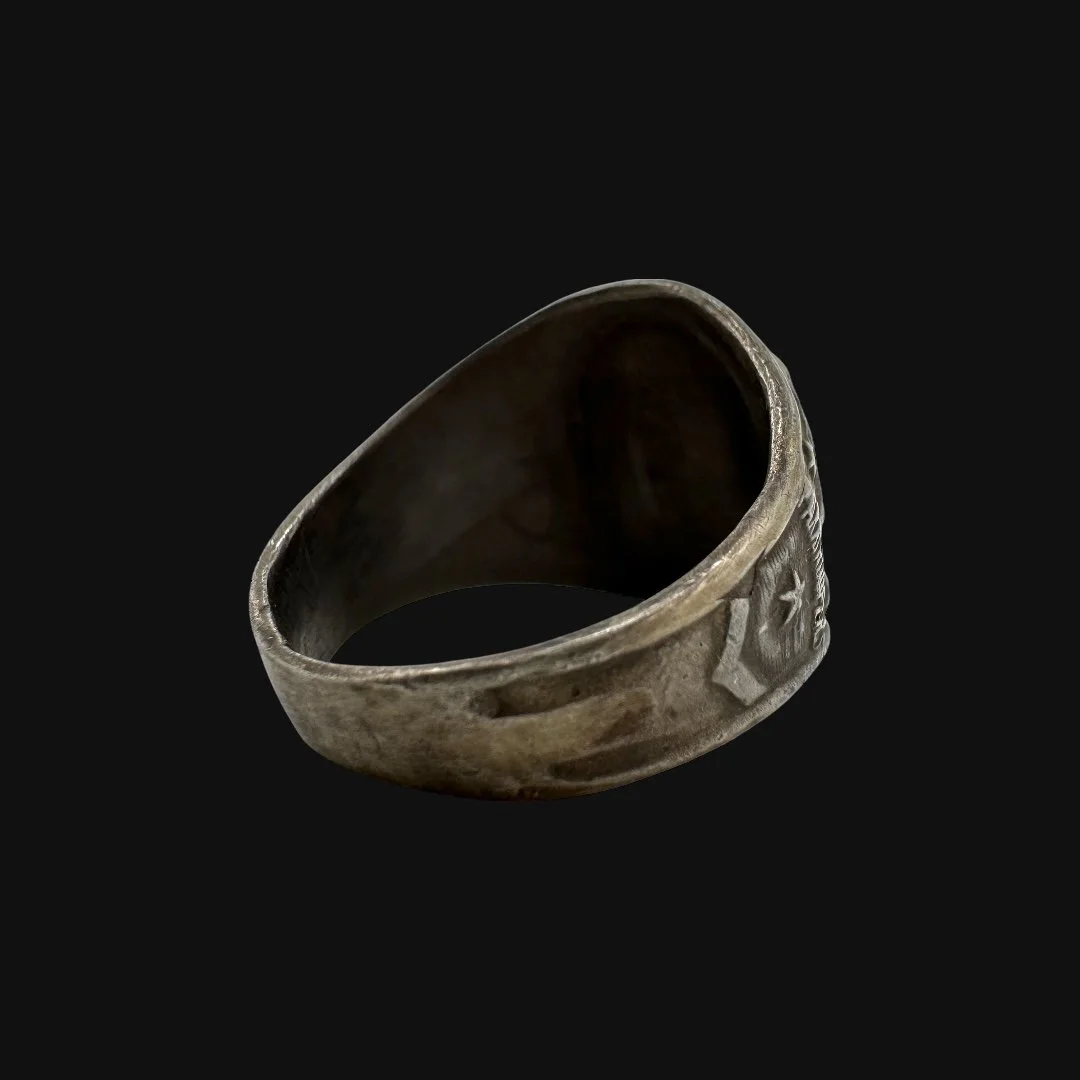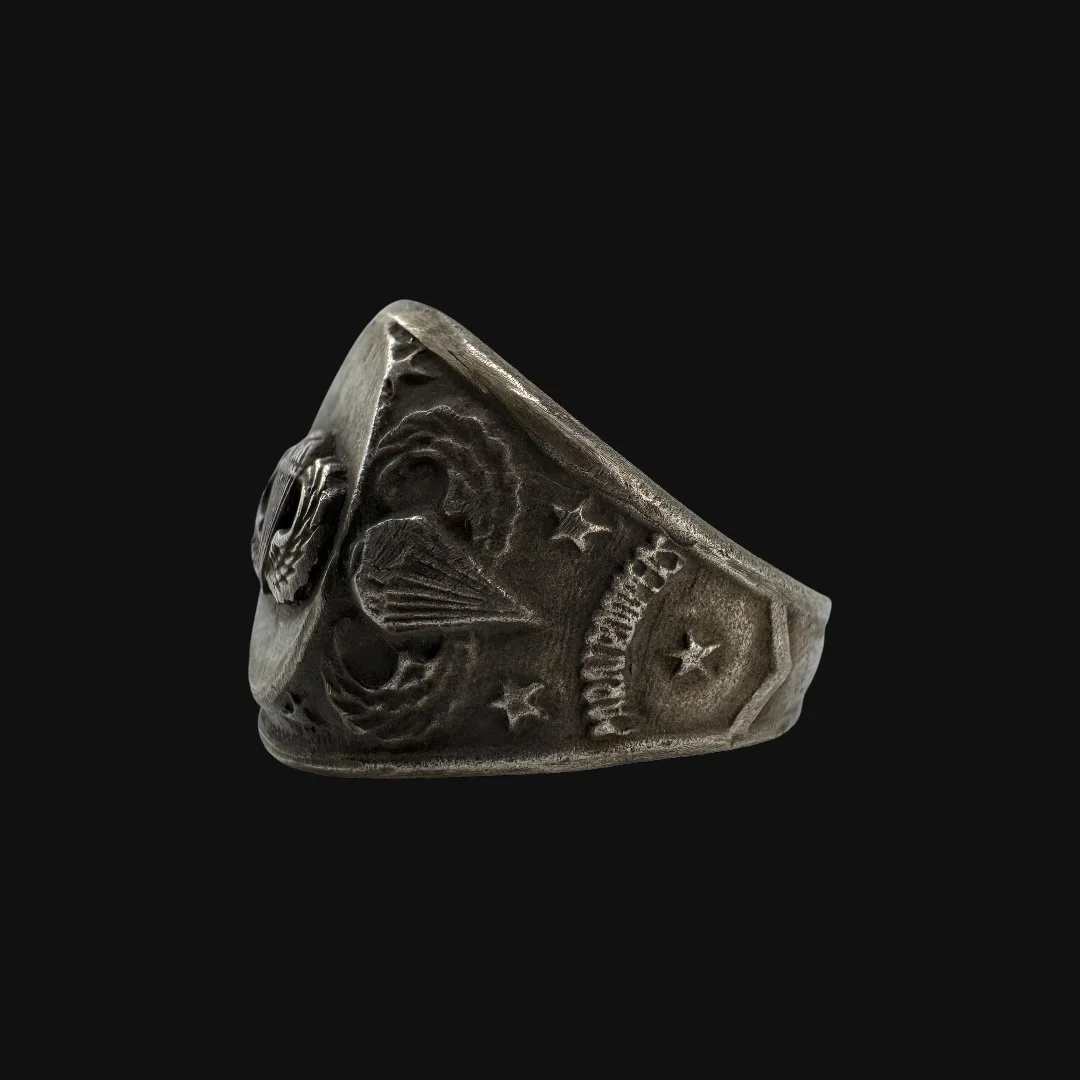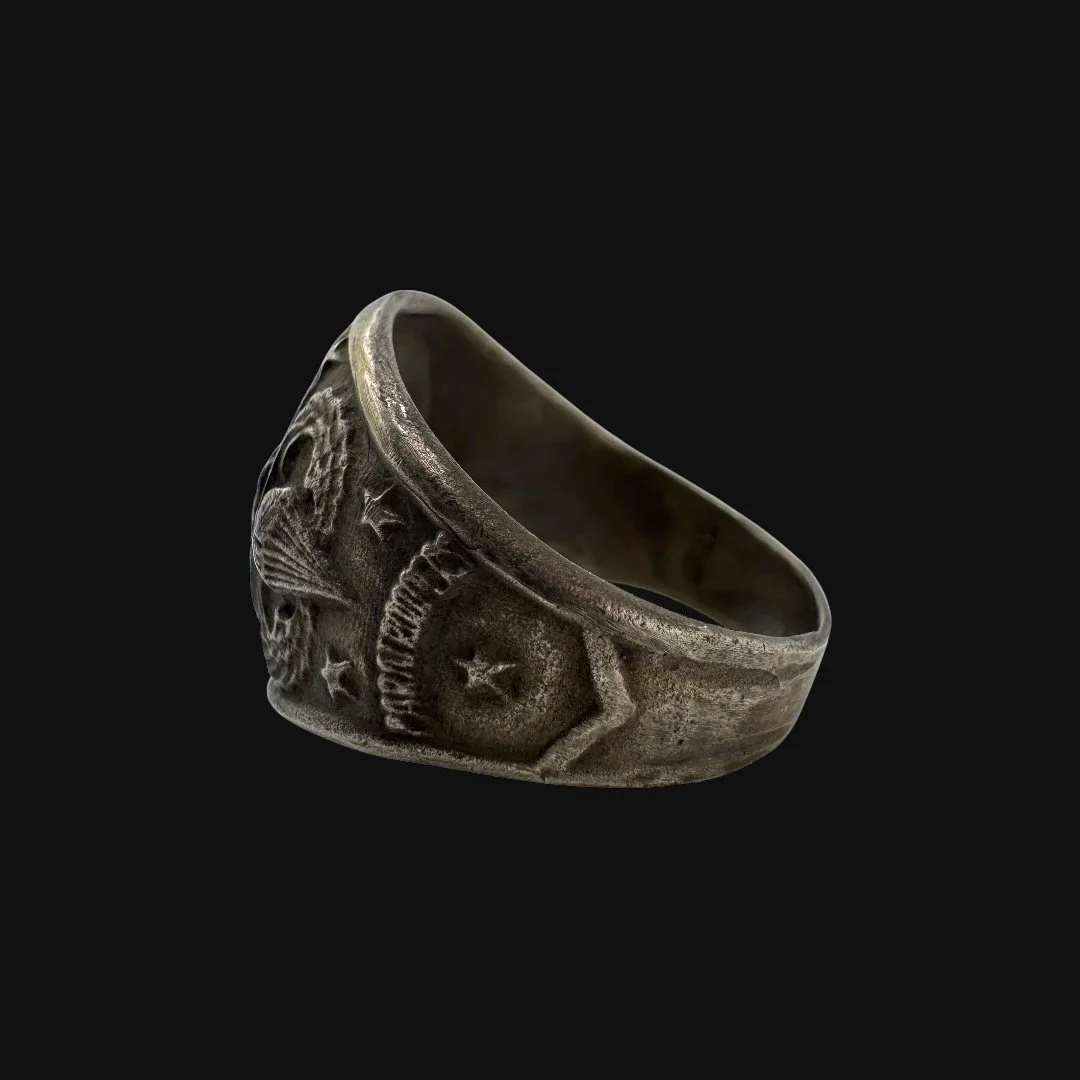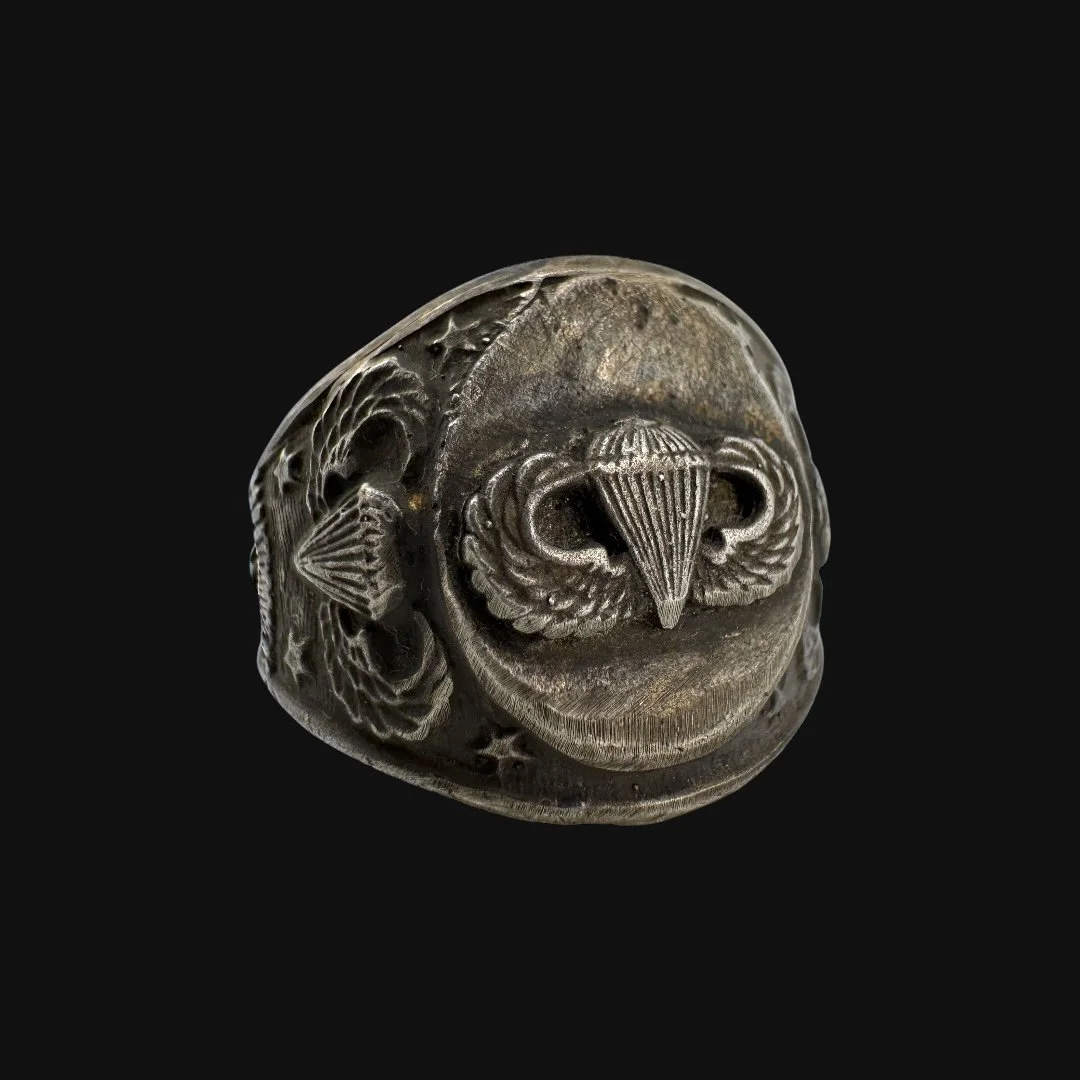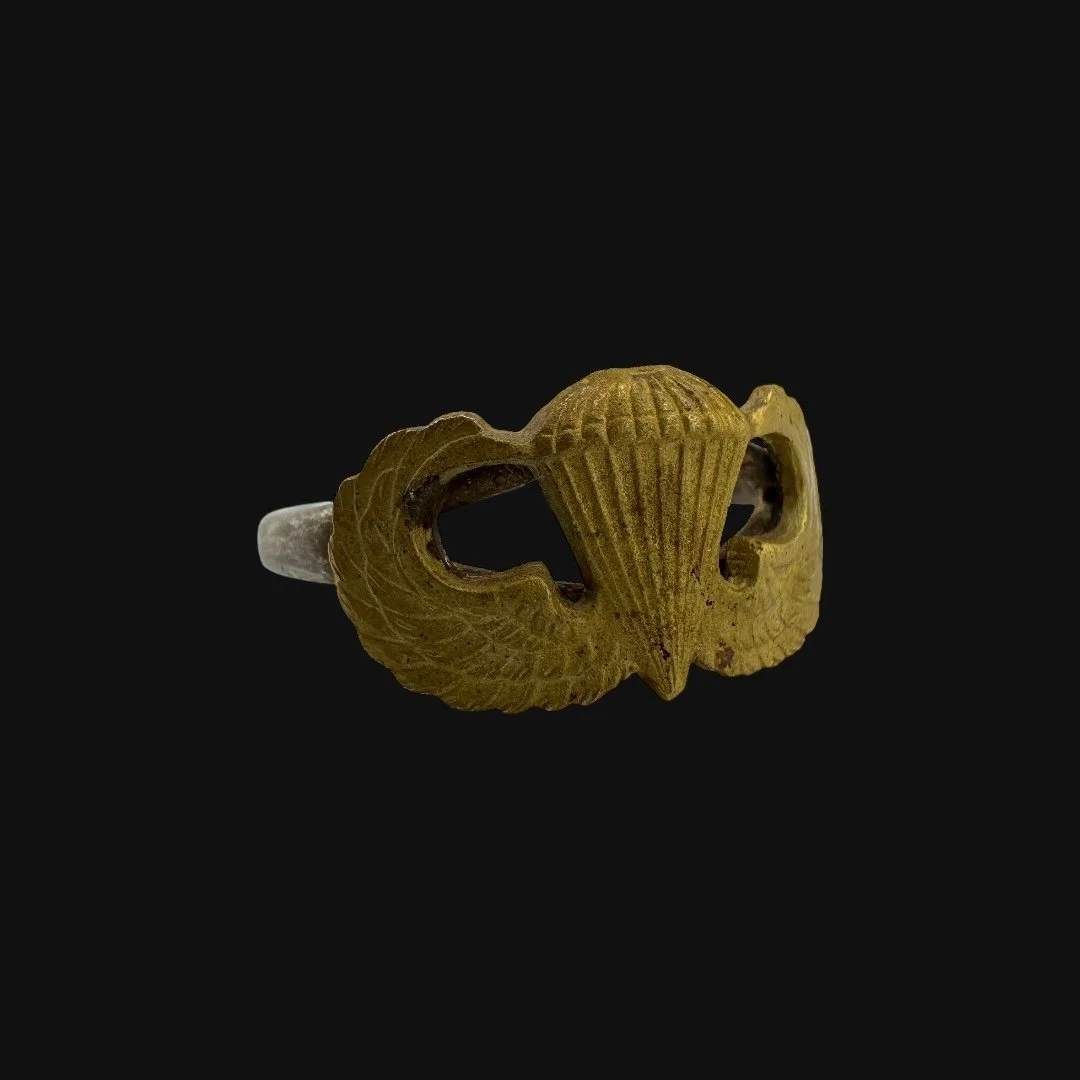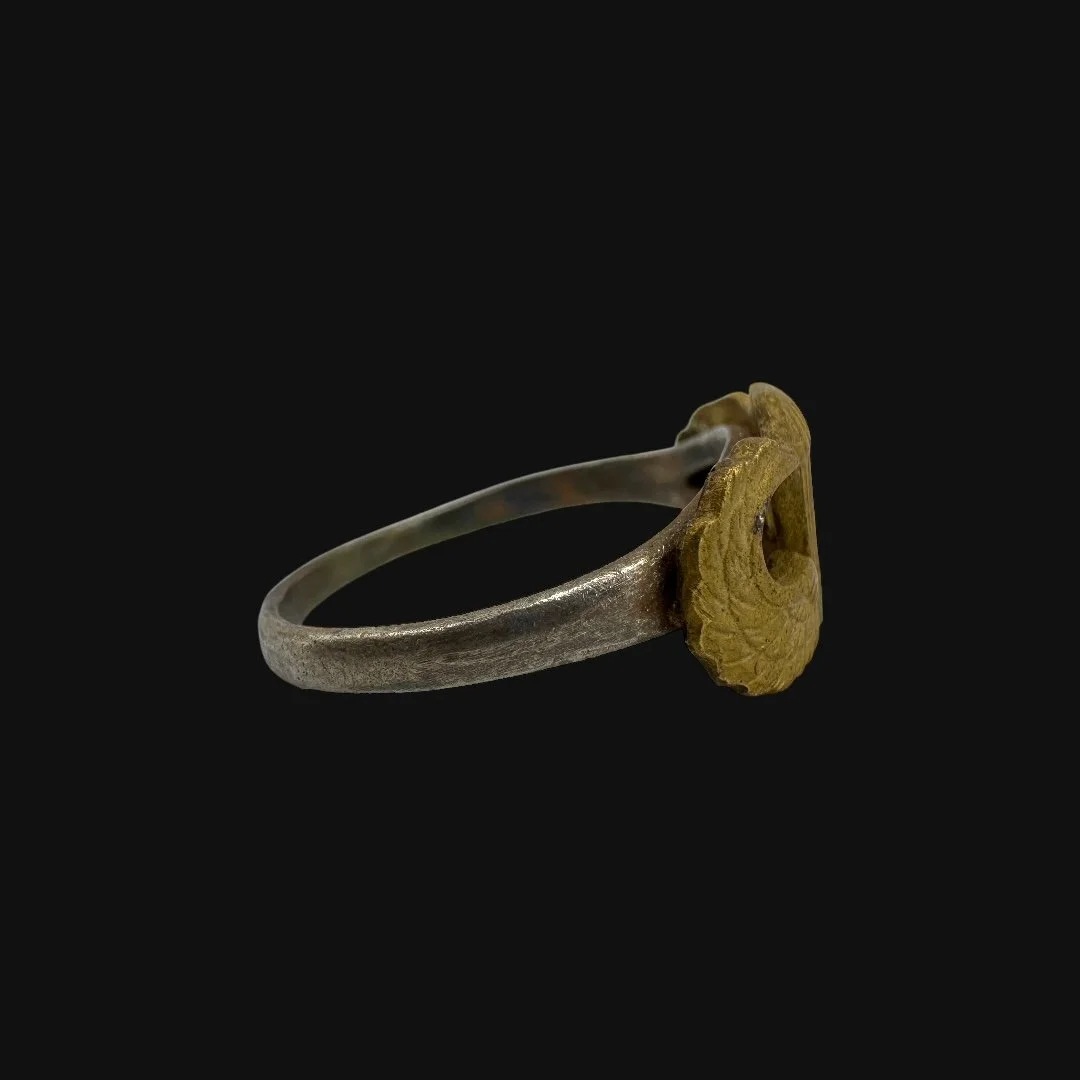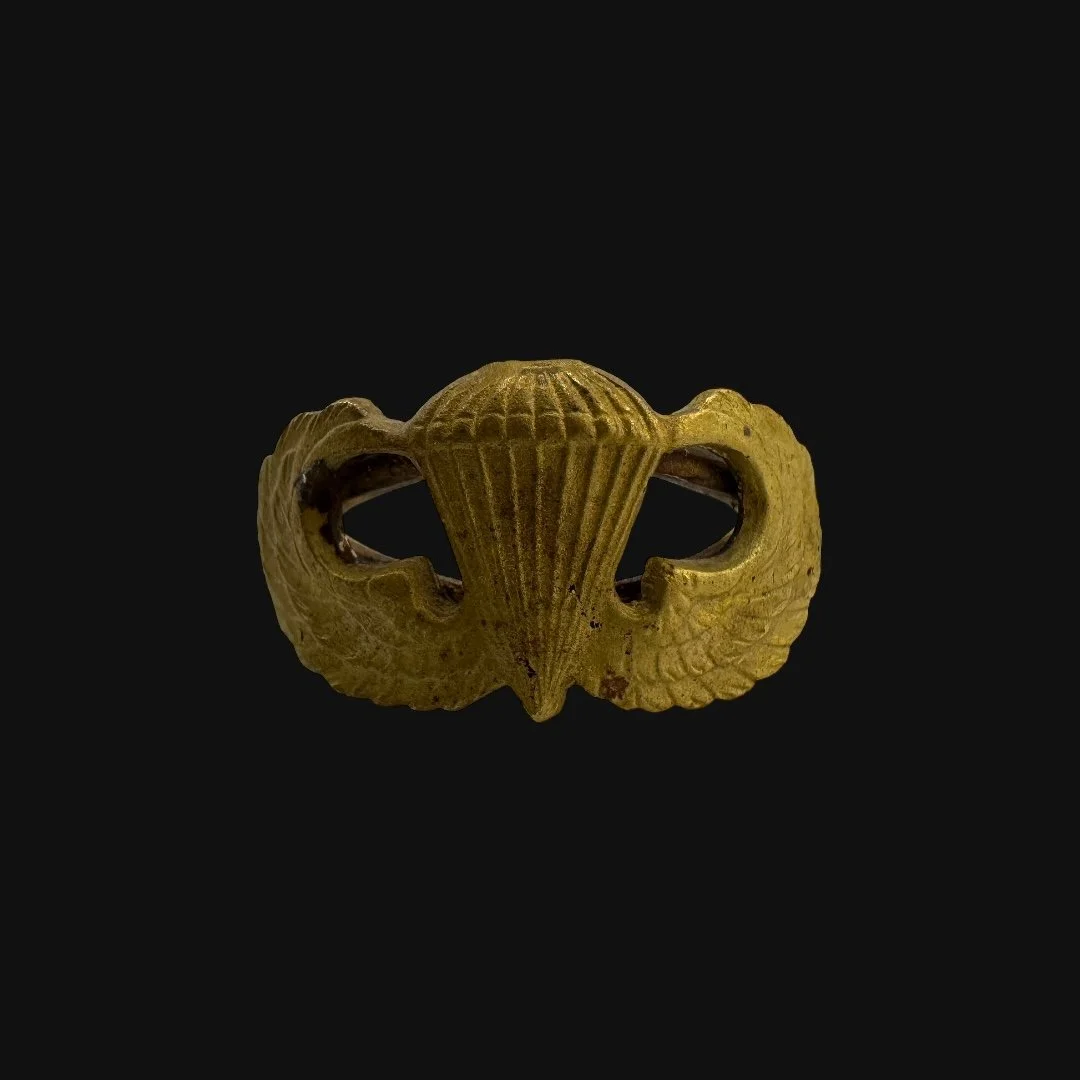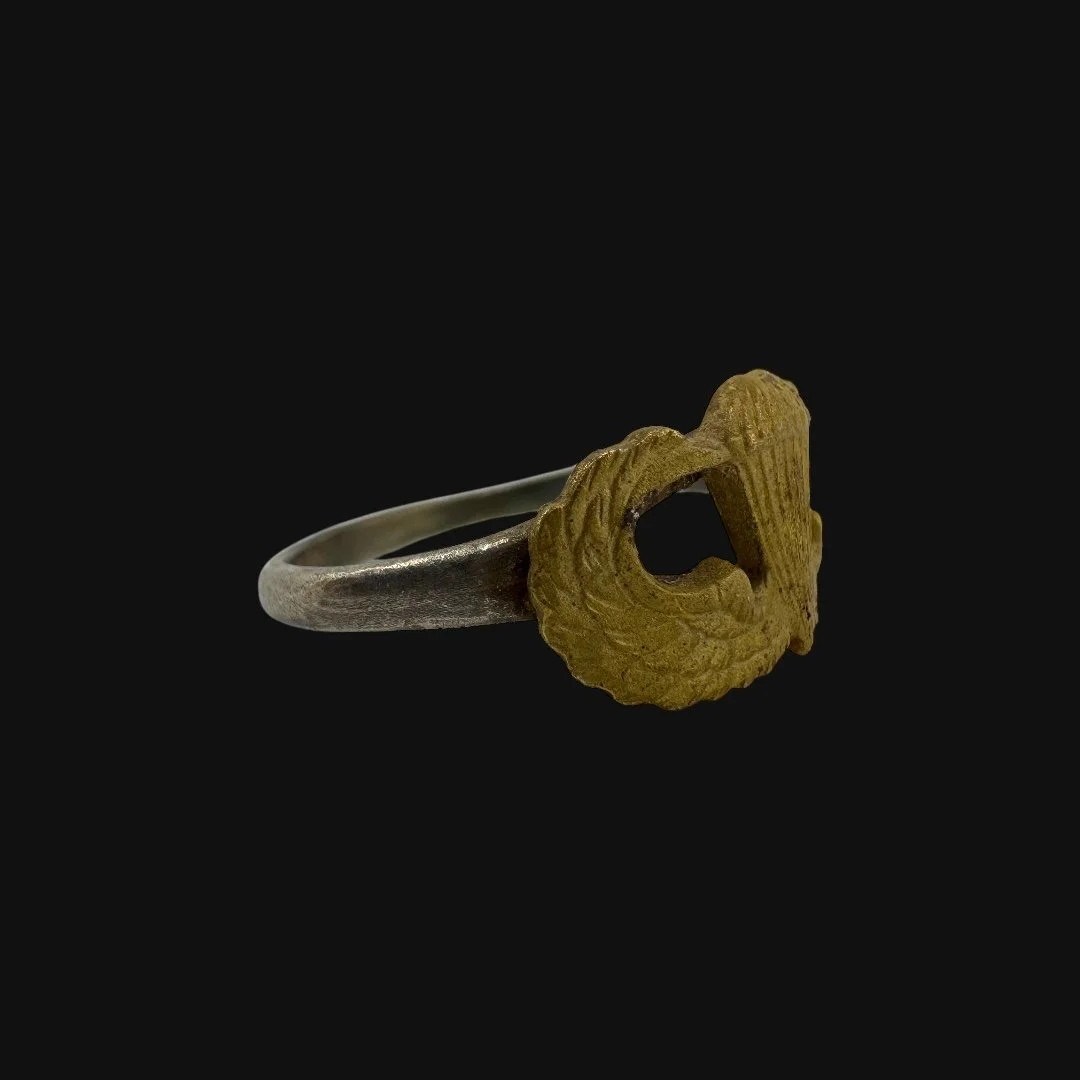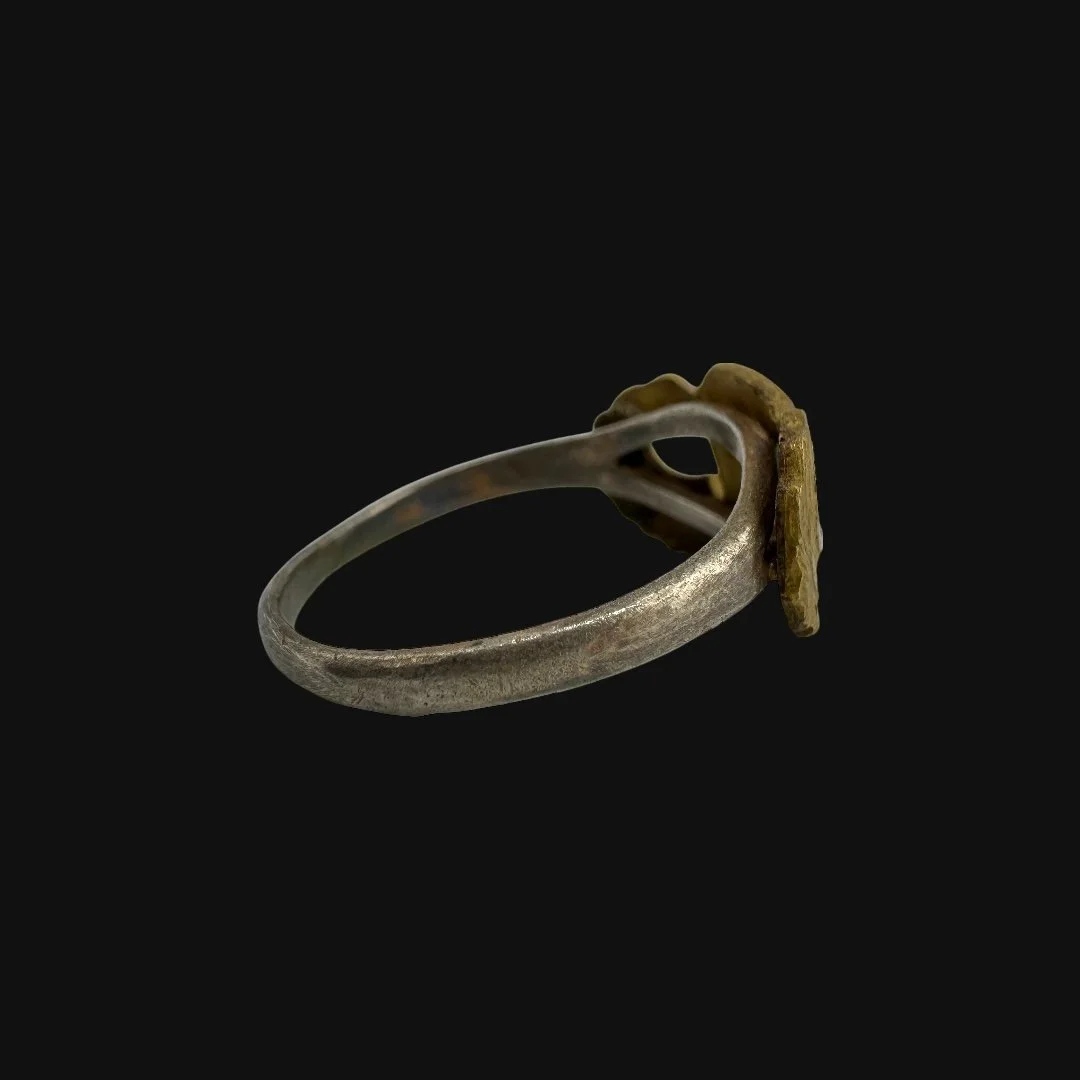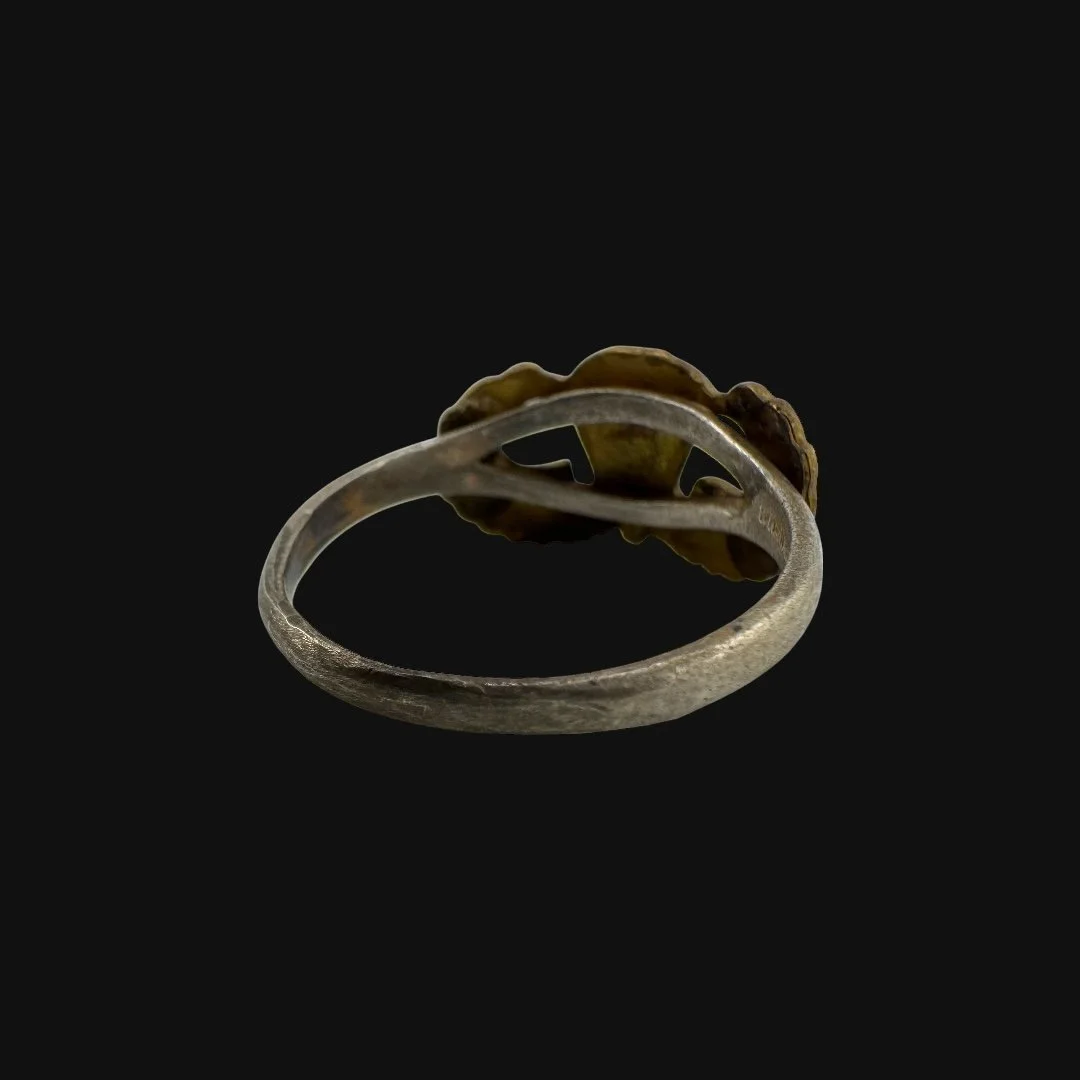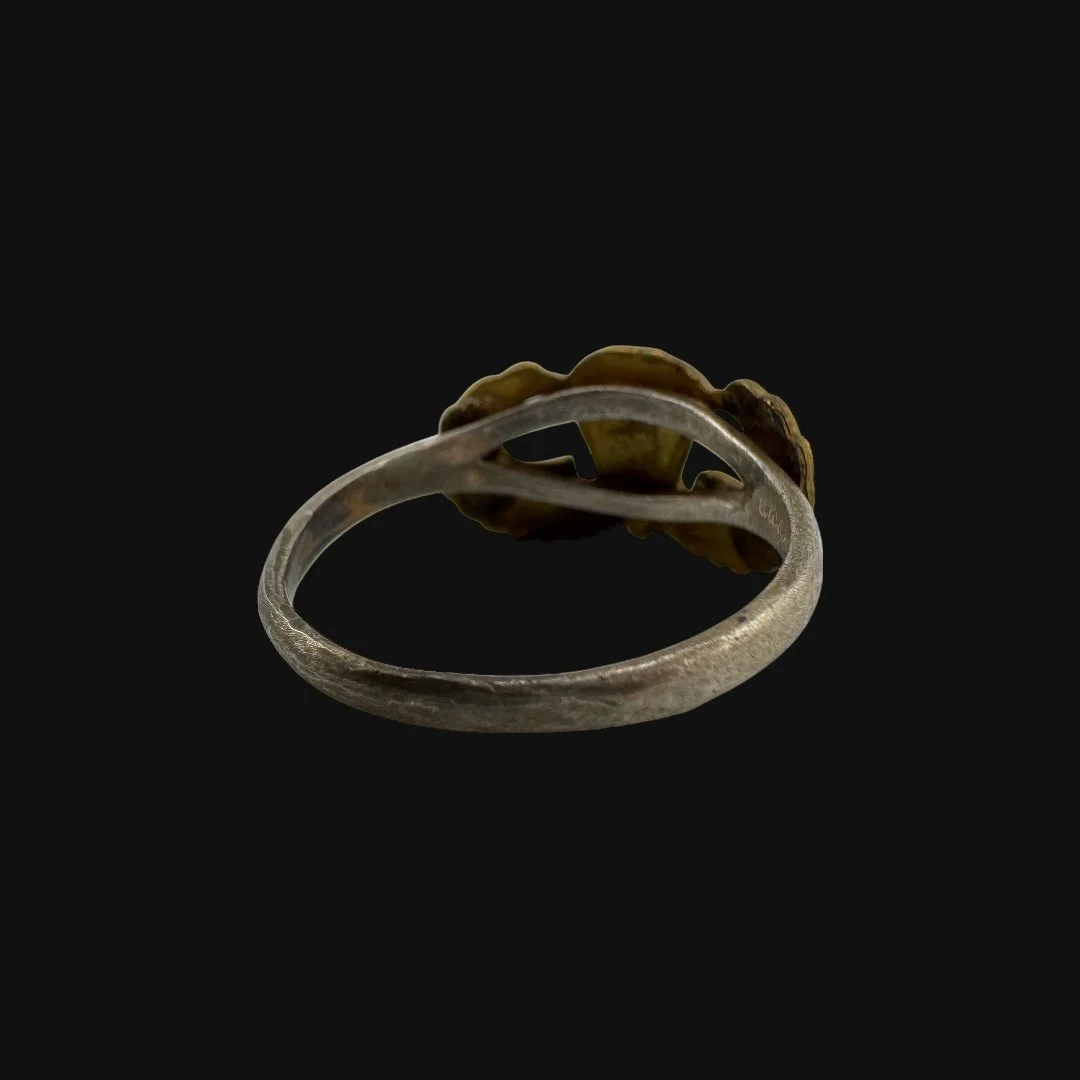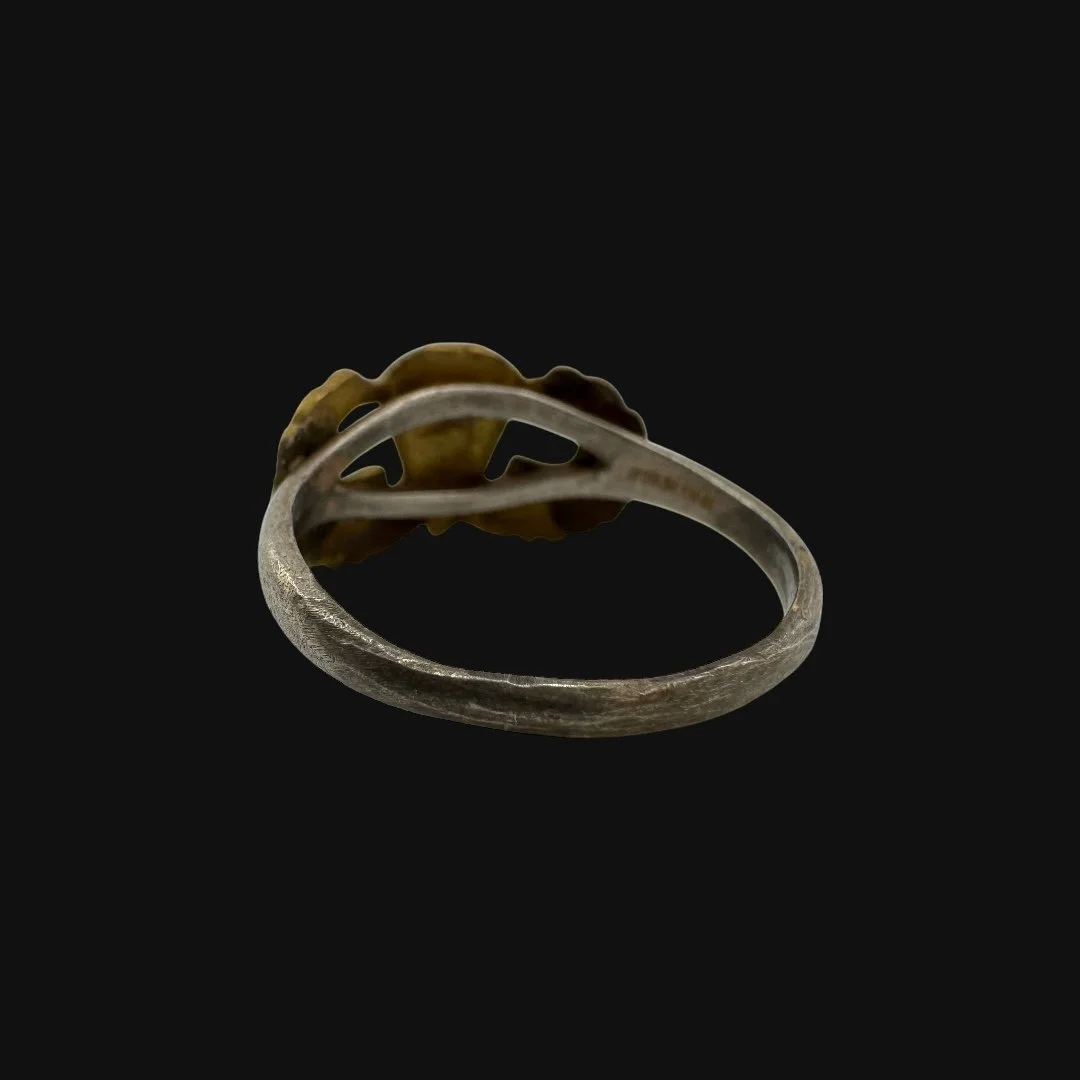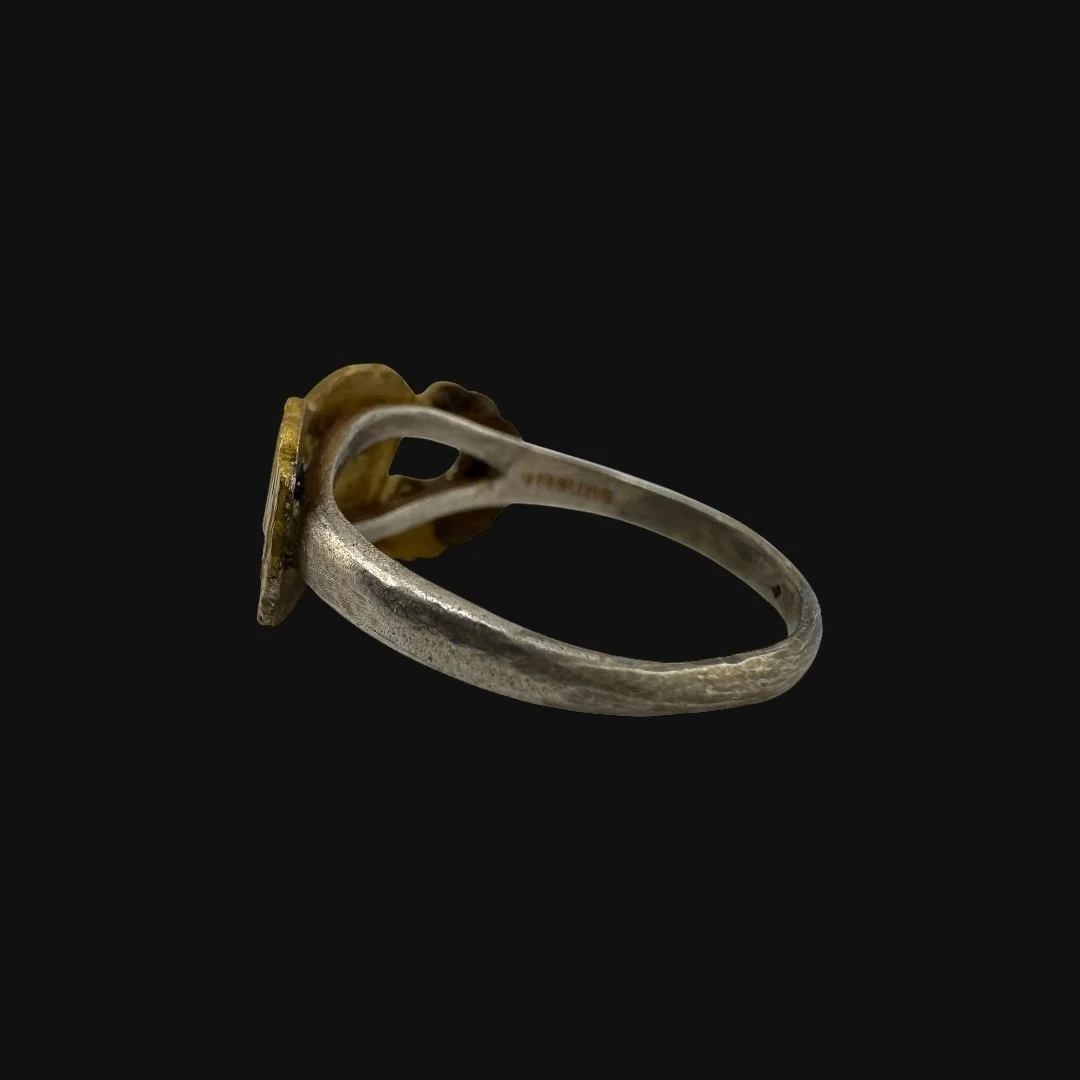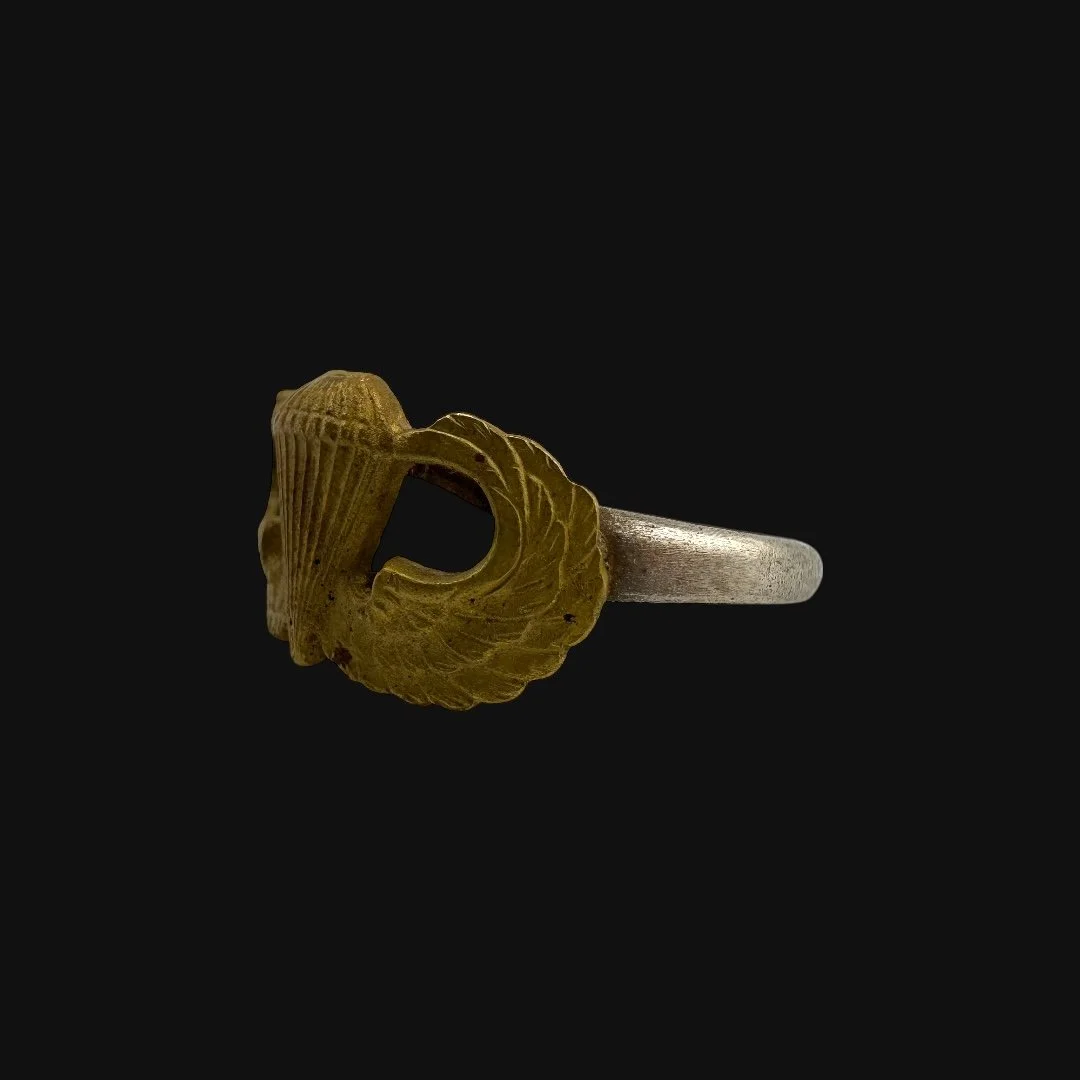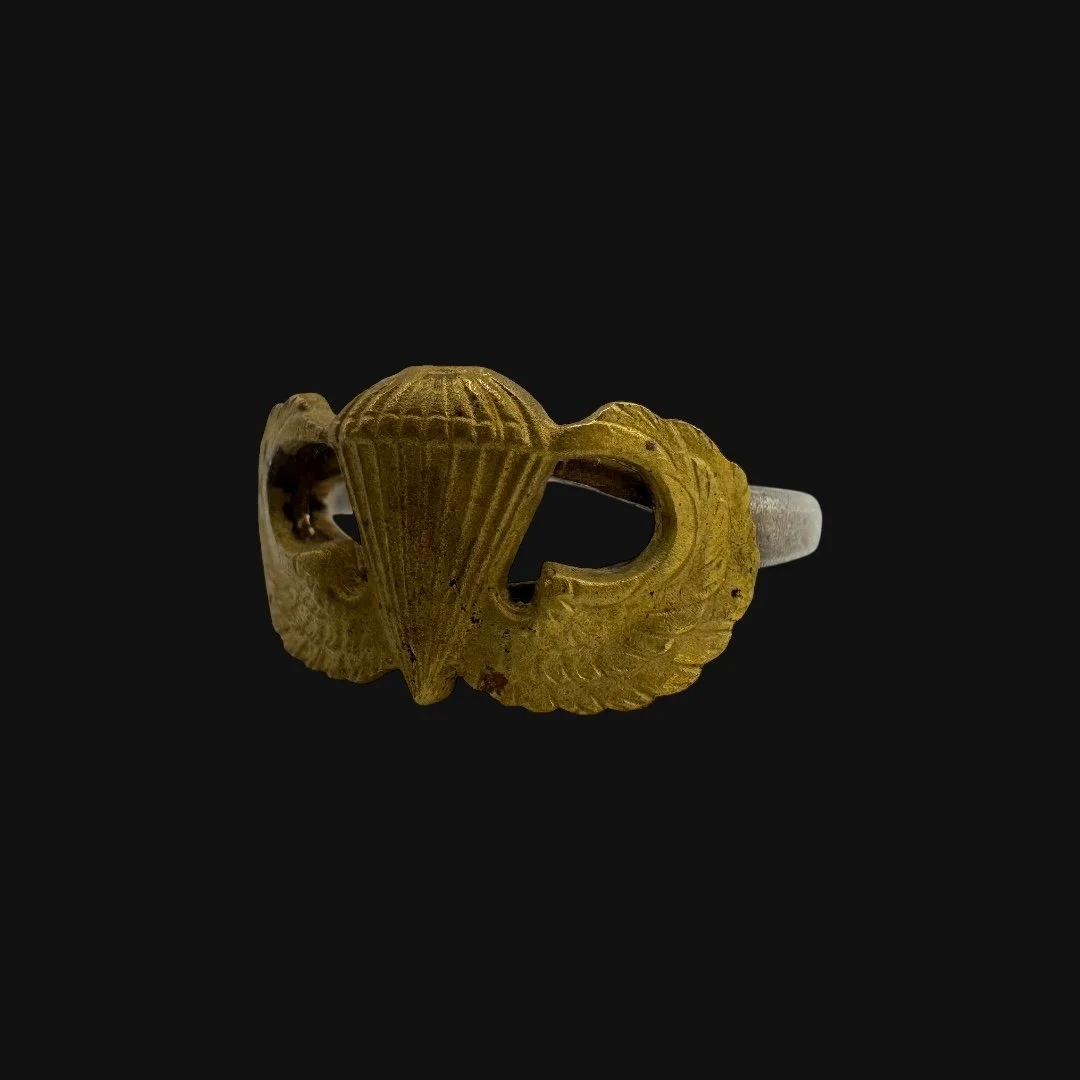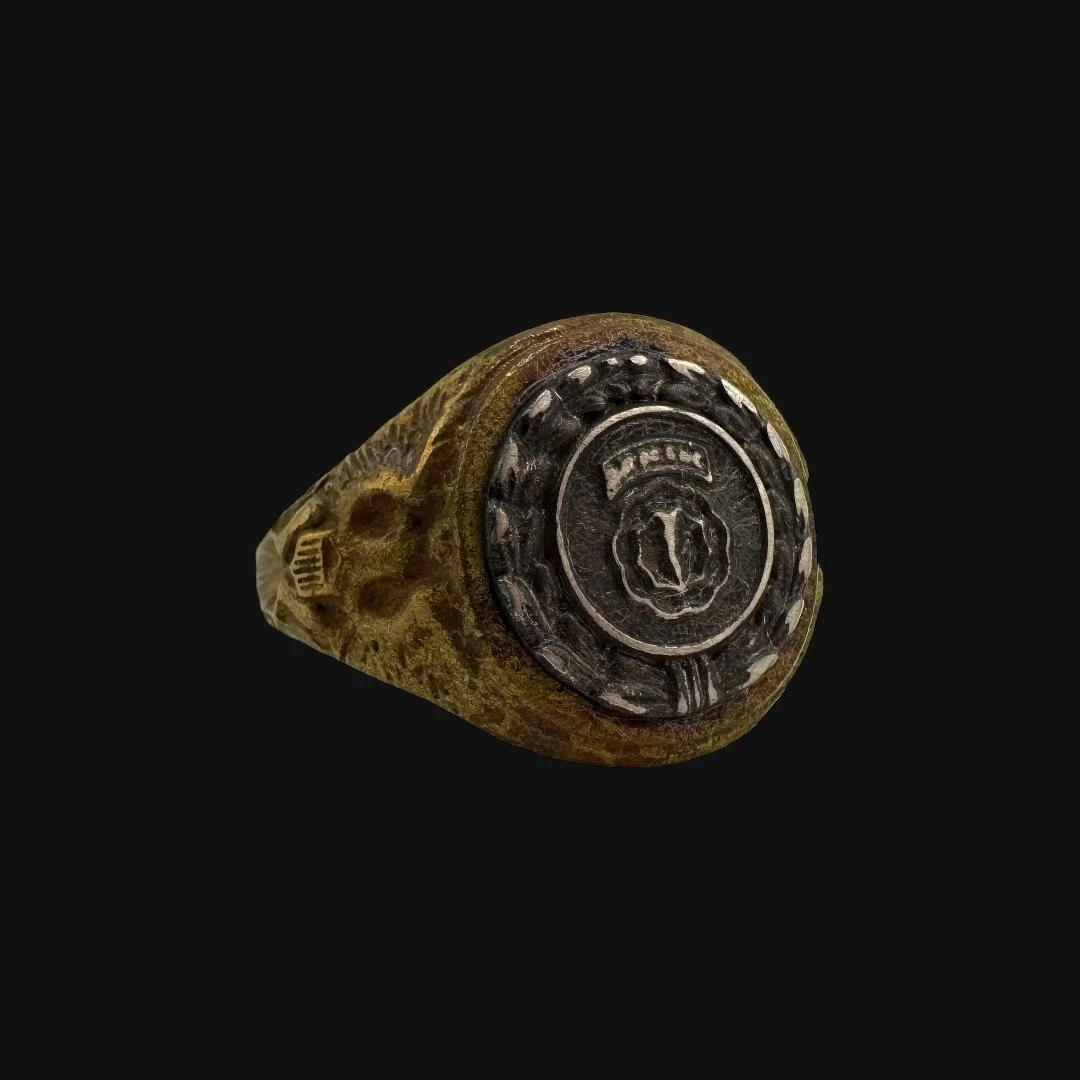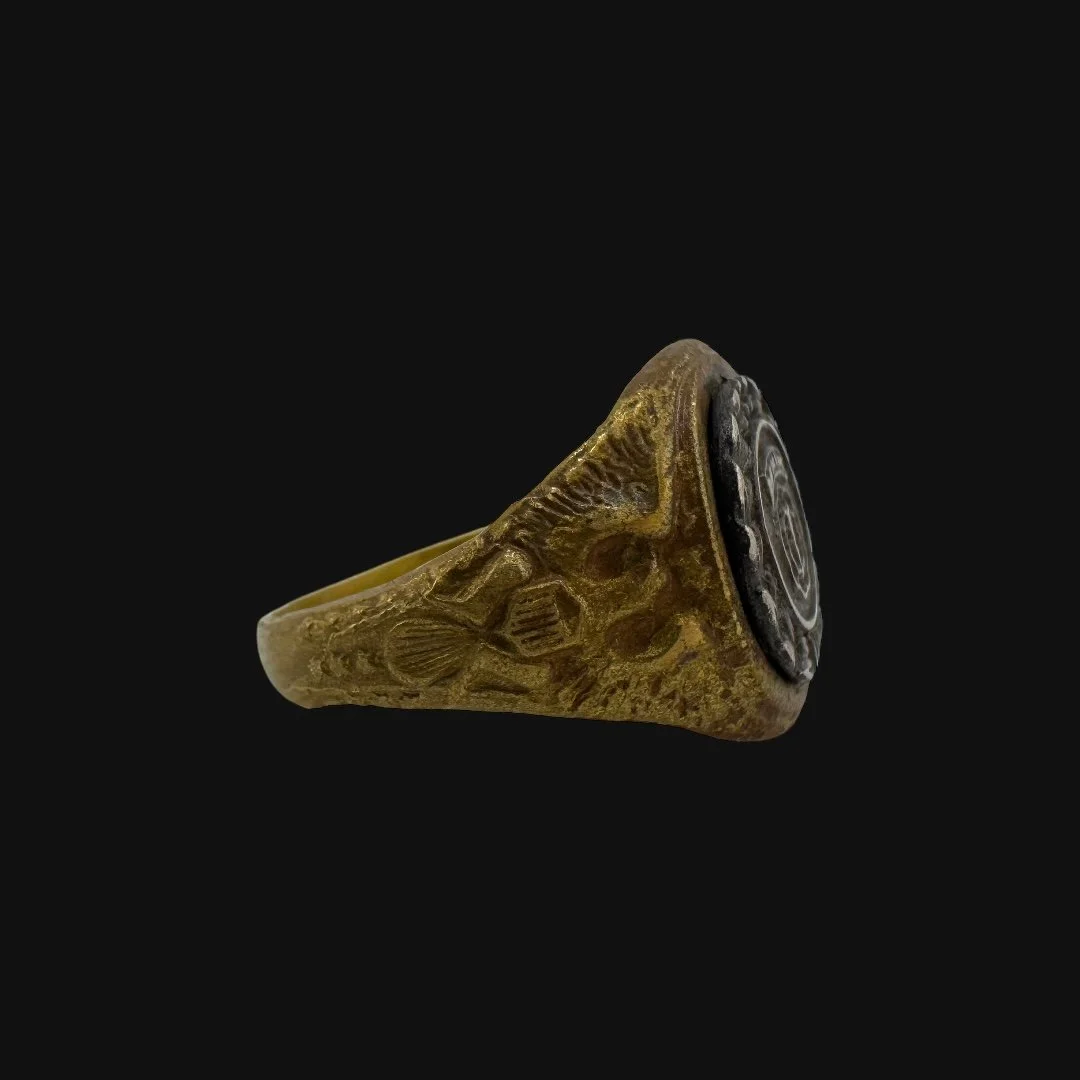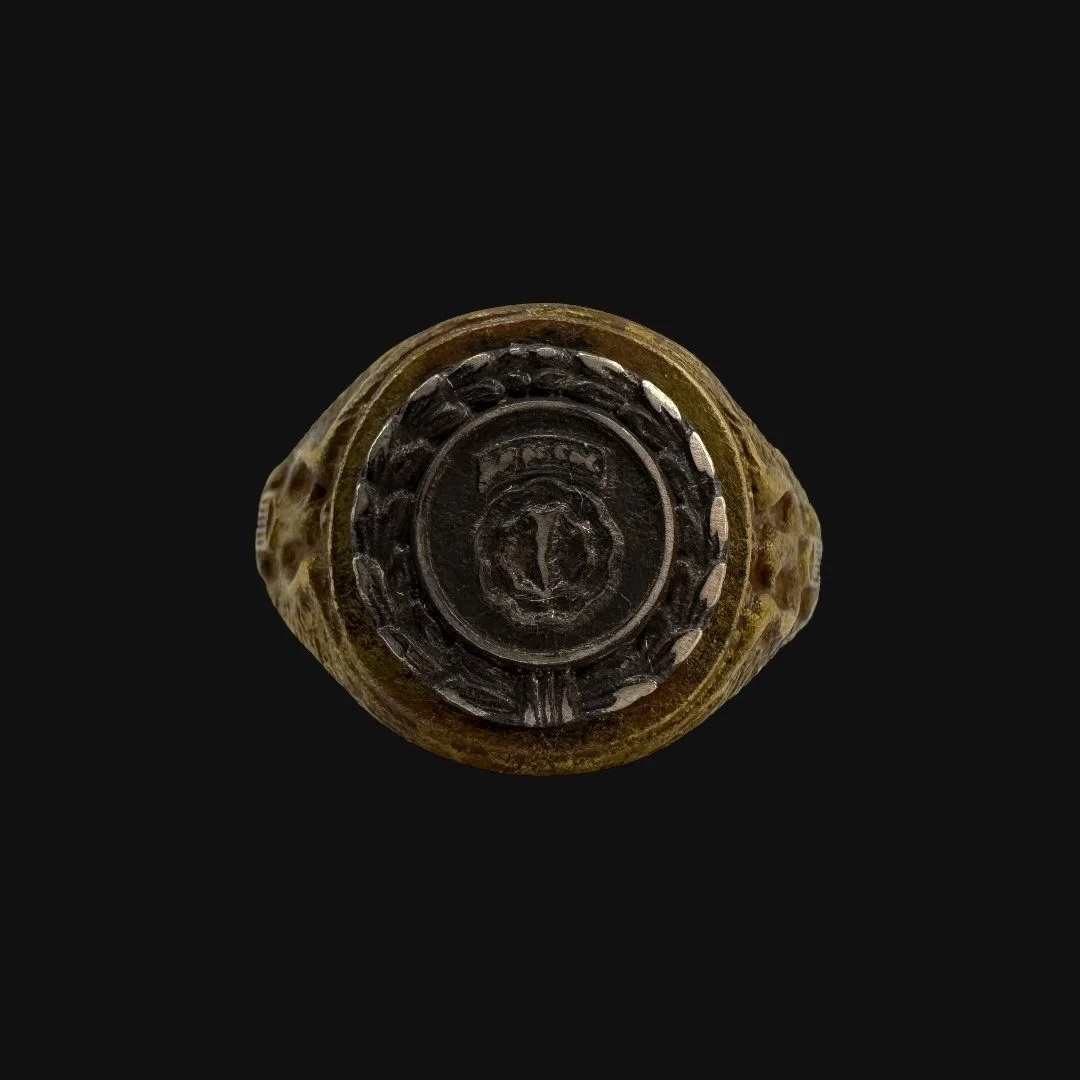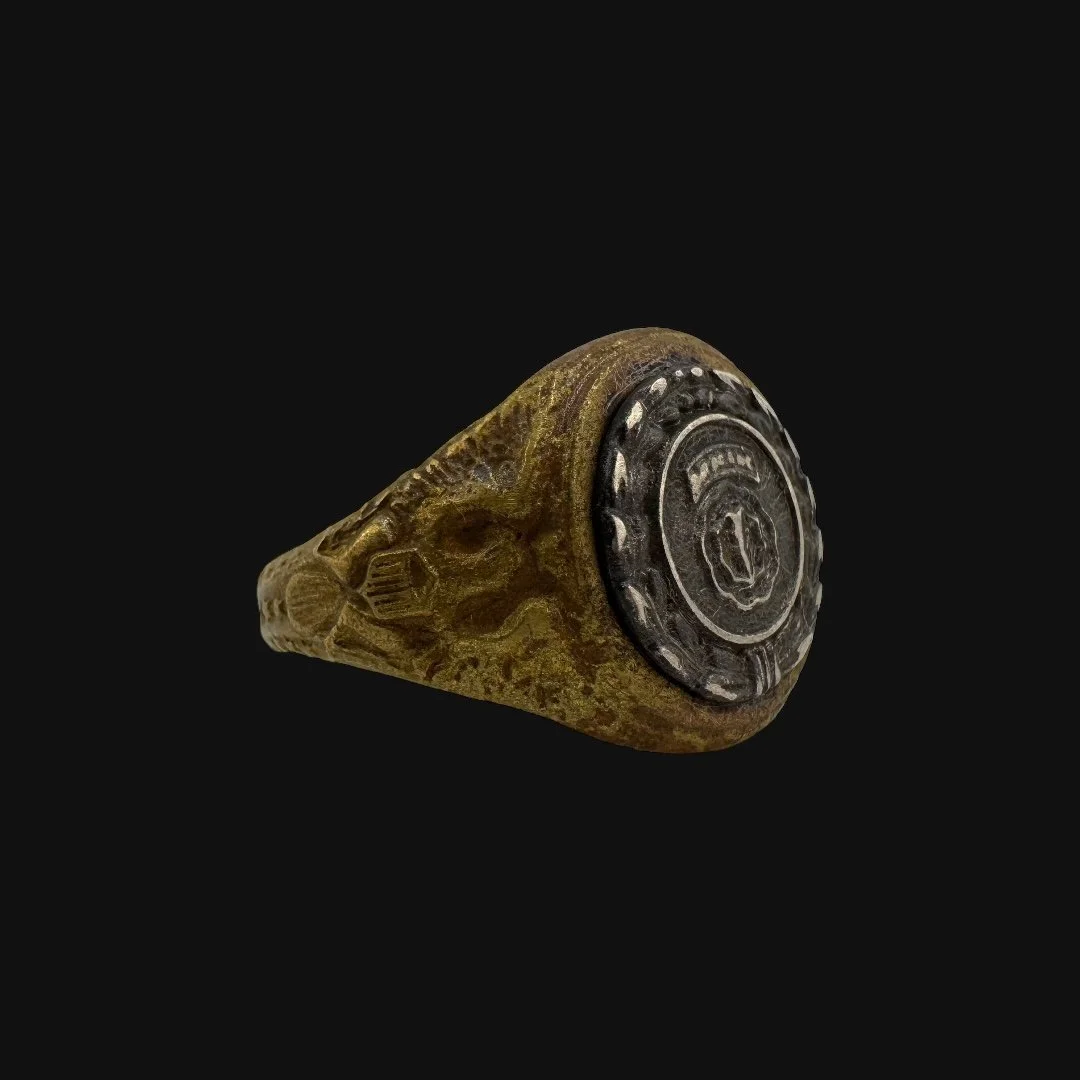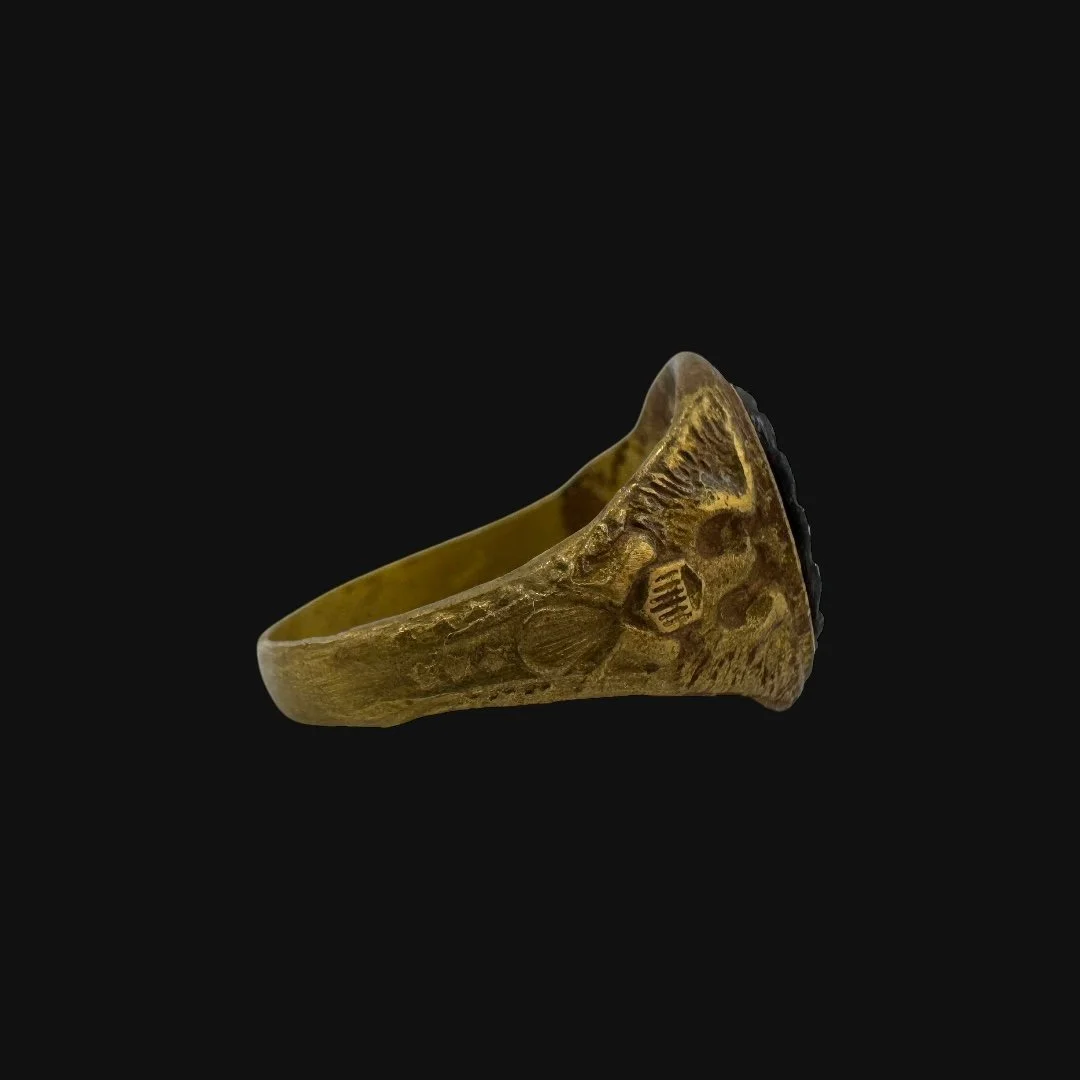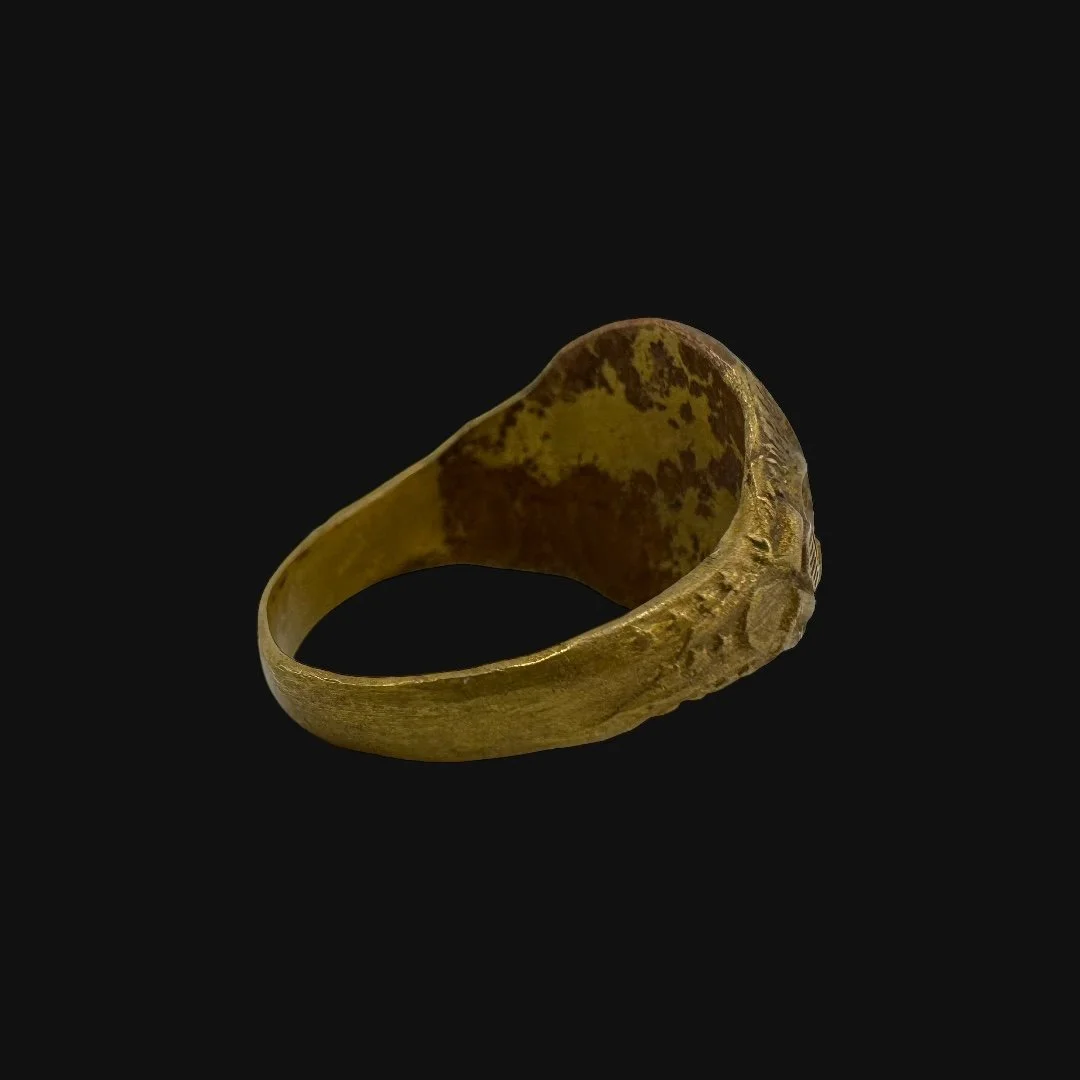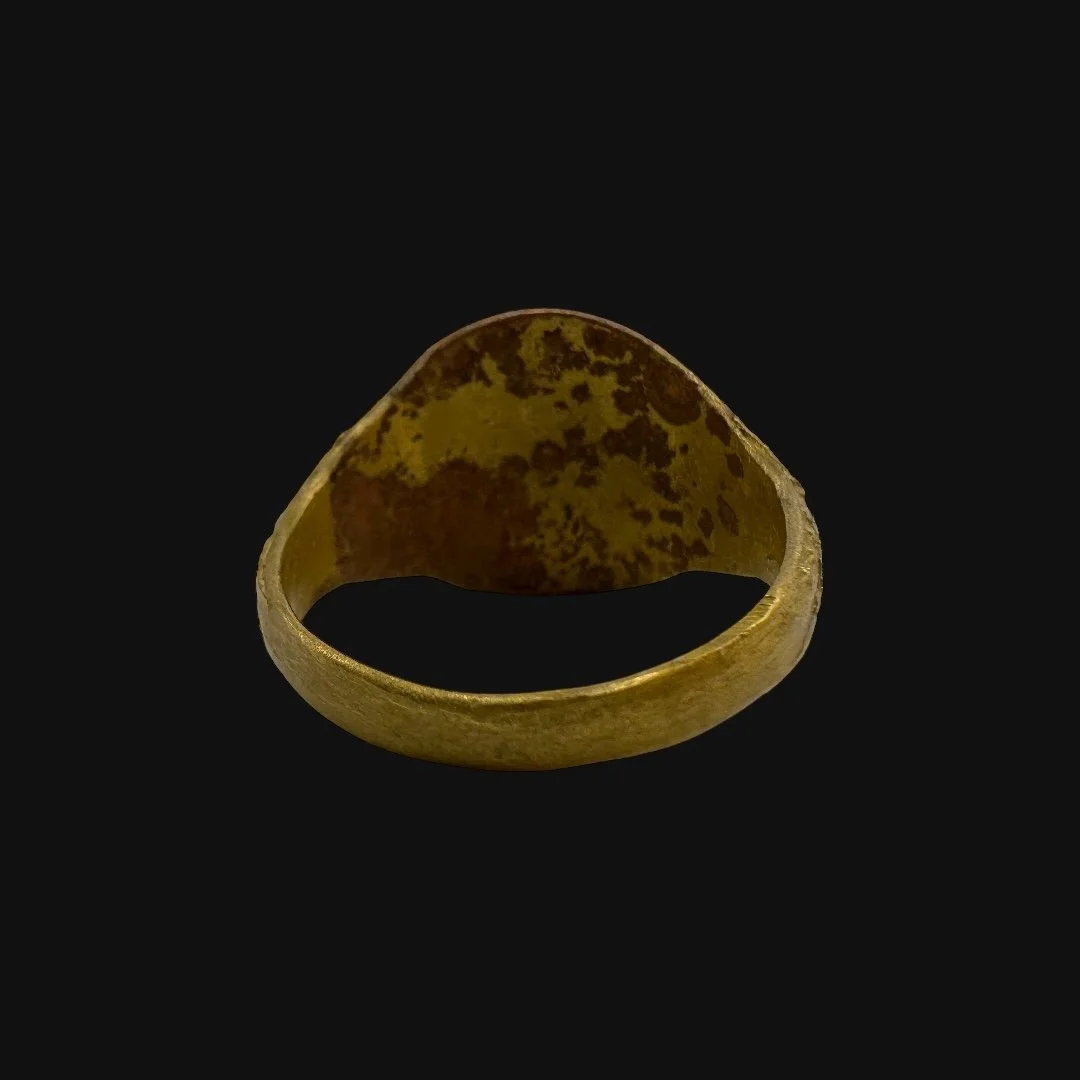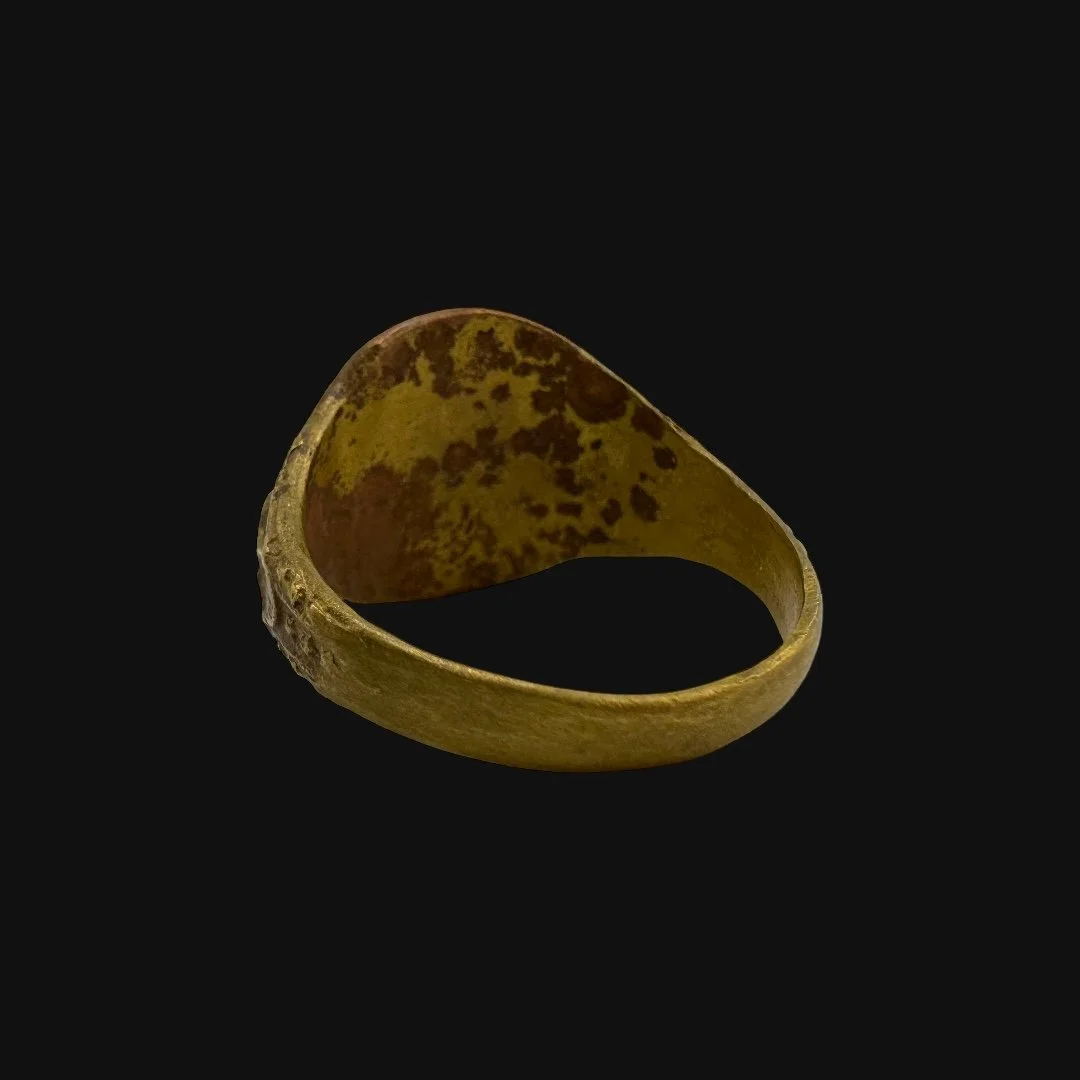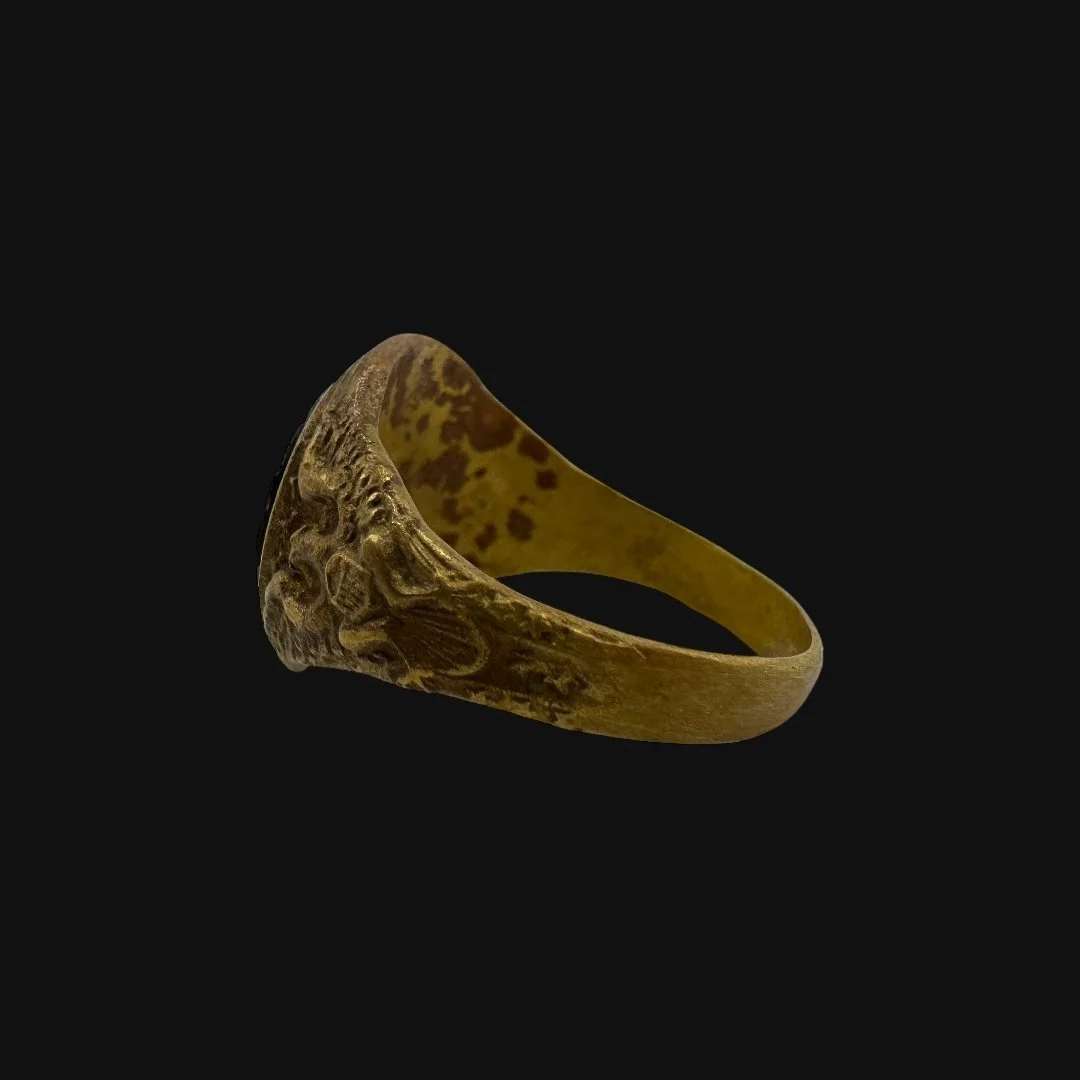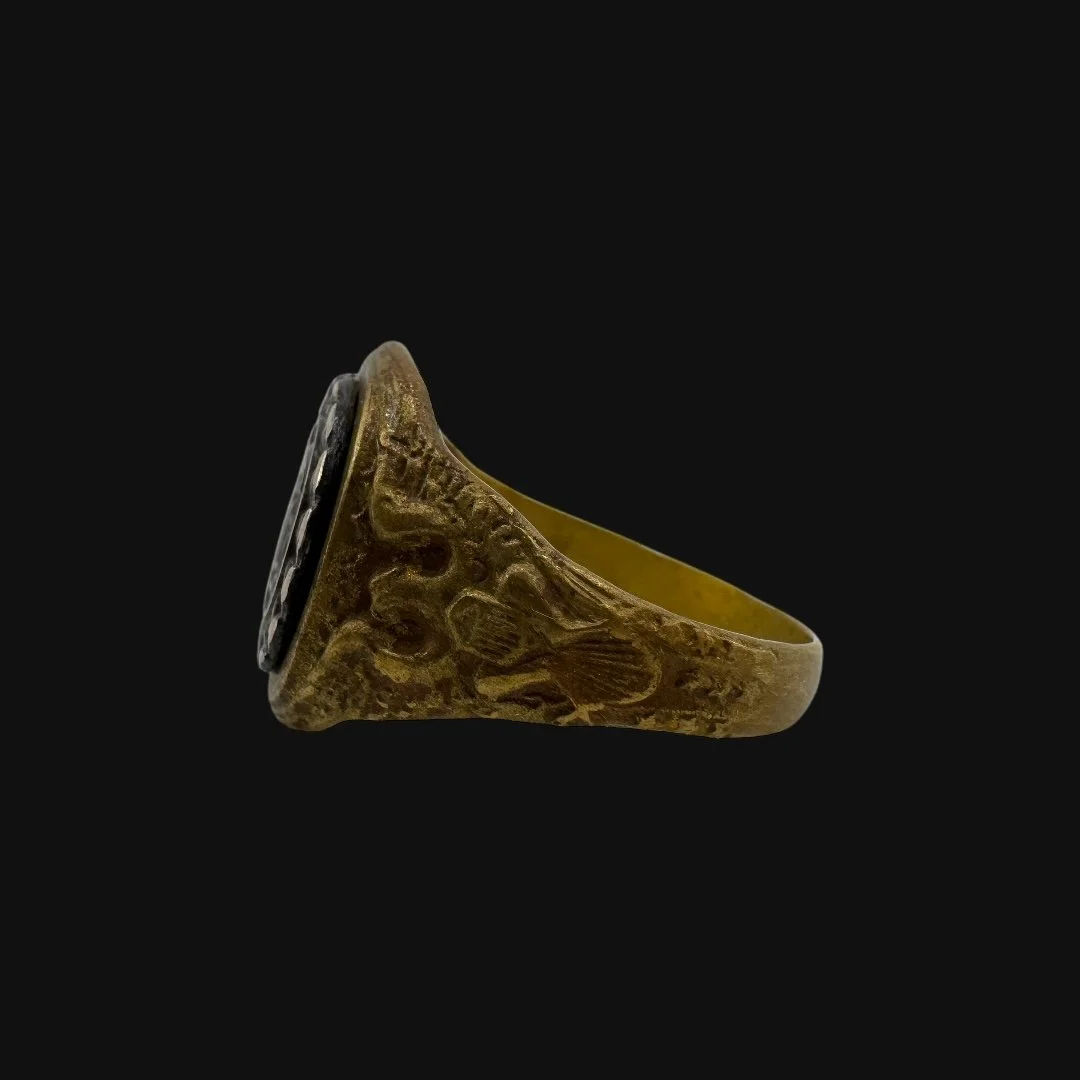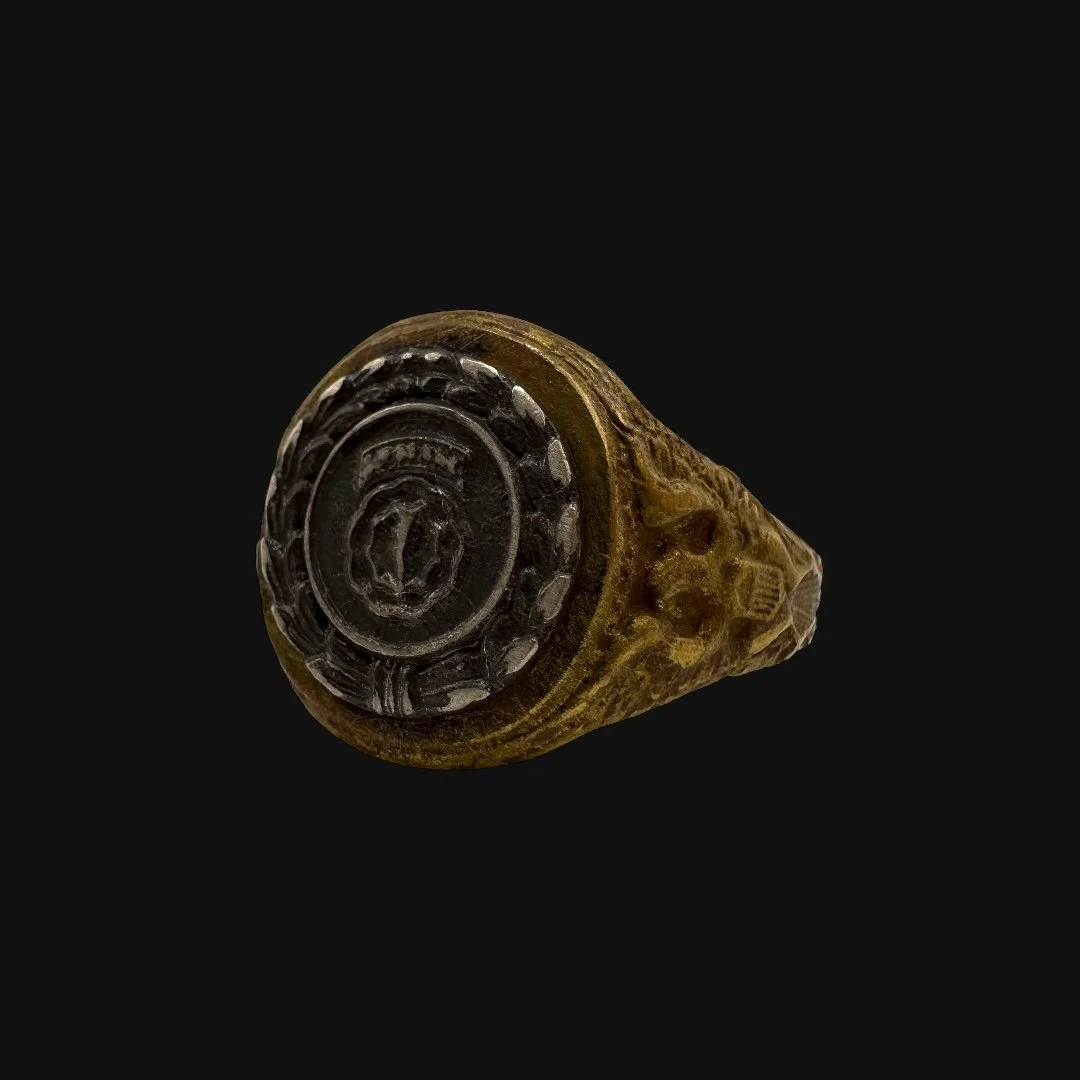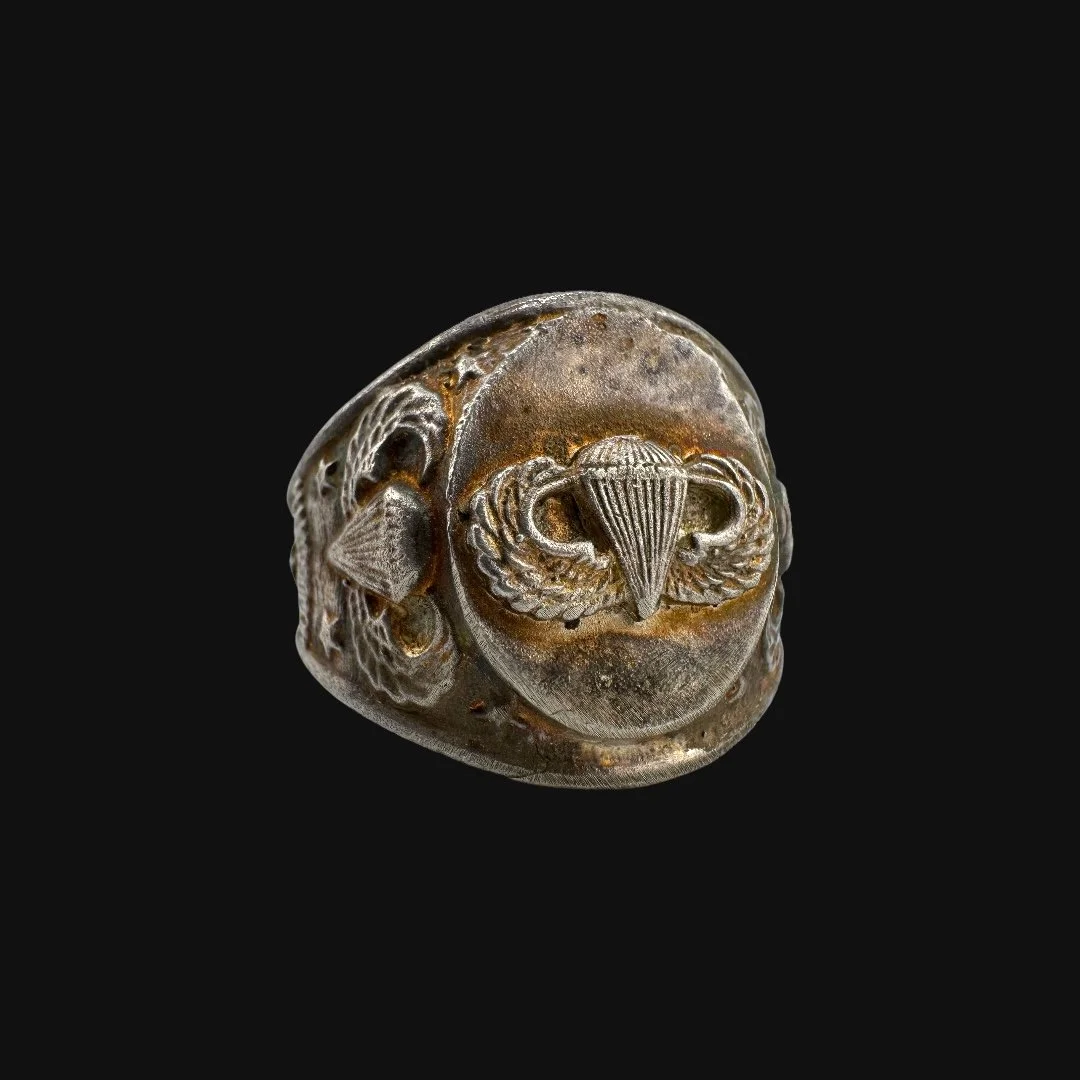 Image 1 of 13
Image 1 of 13

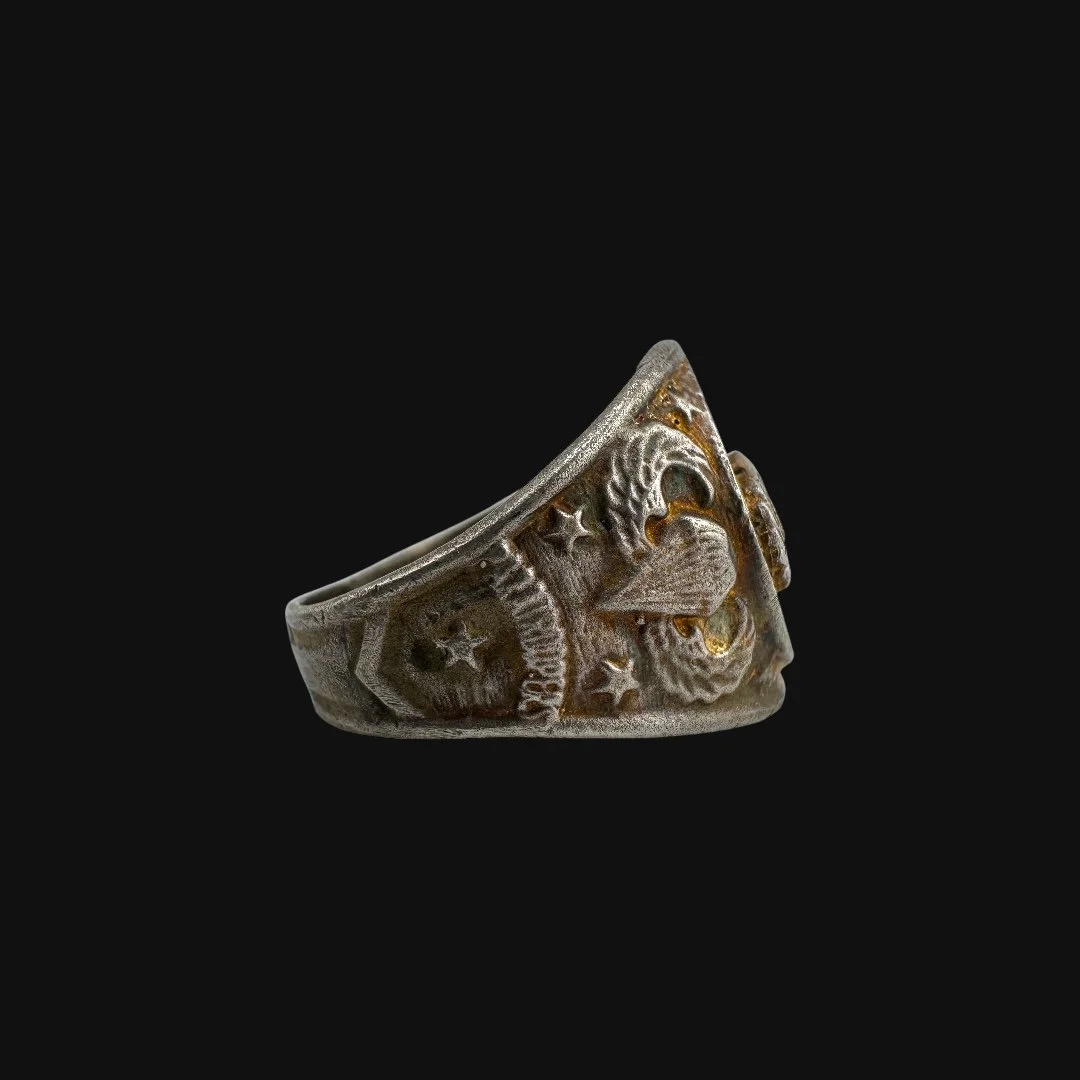 Image 2 of 13
Image 2 of 13

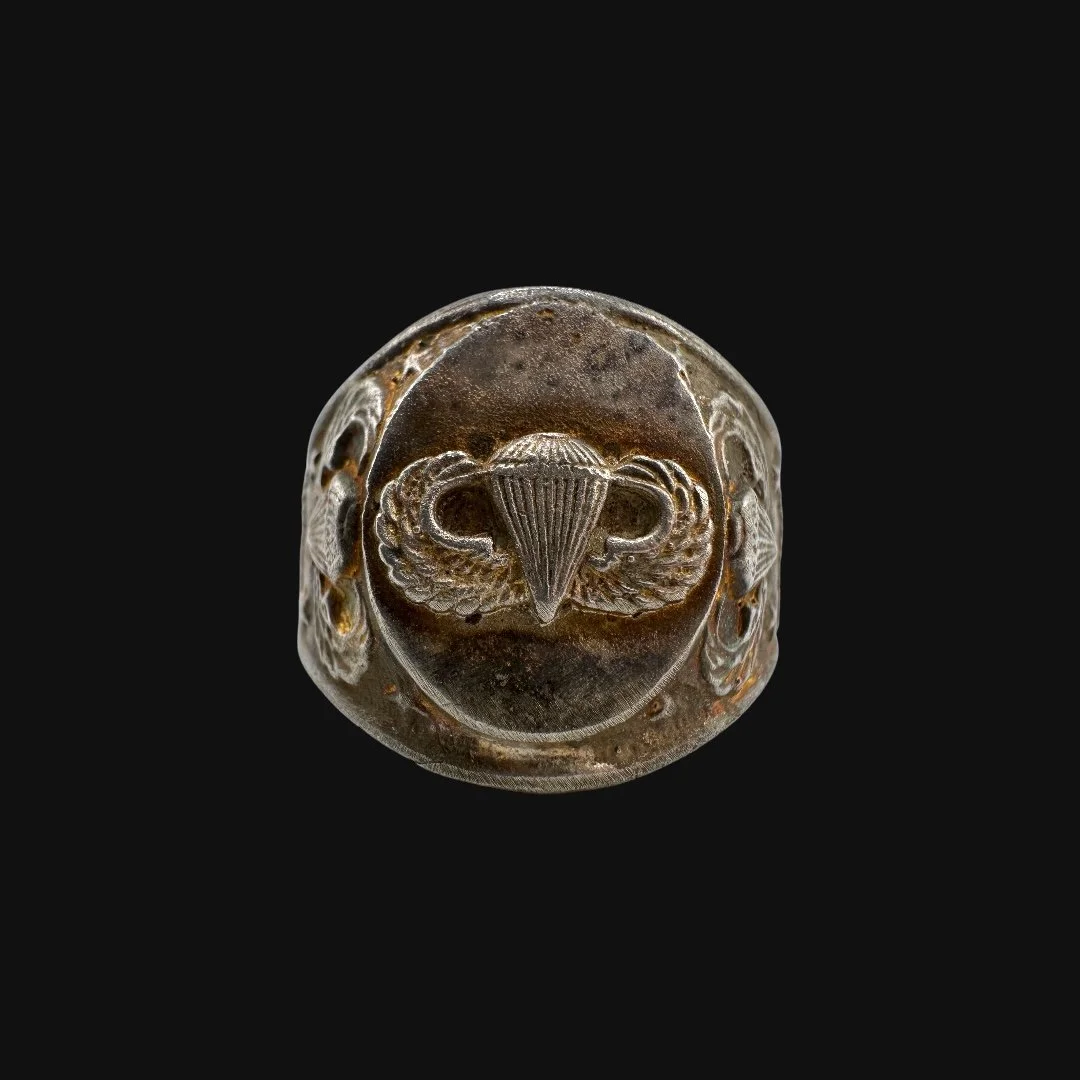 Image 3 of 13
Image 3 of 13

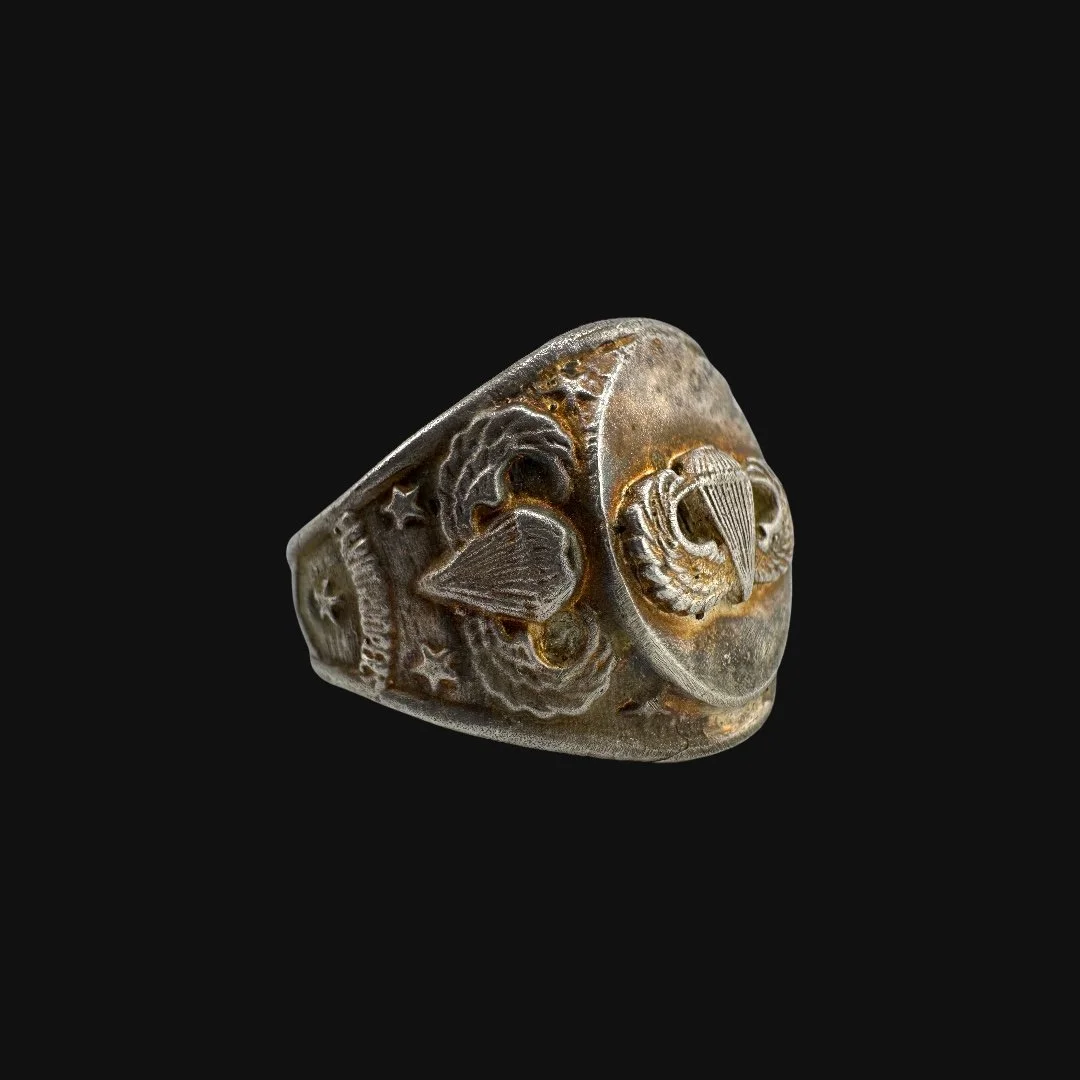 Image 4 of 13
Image 4 of 13

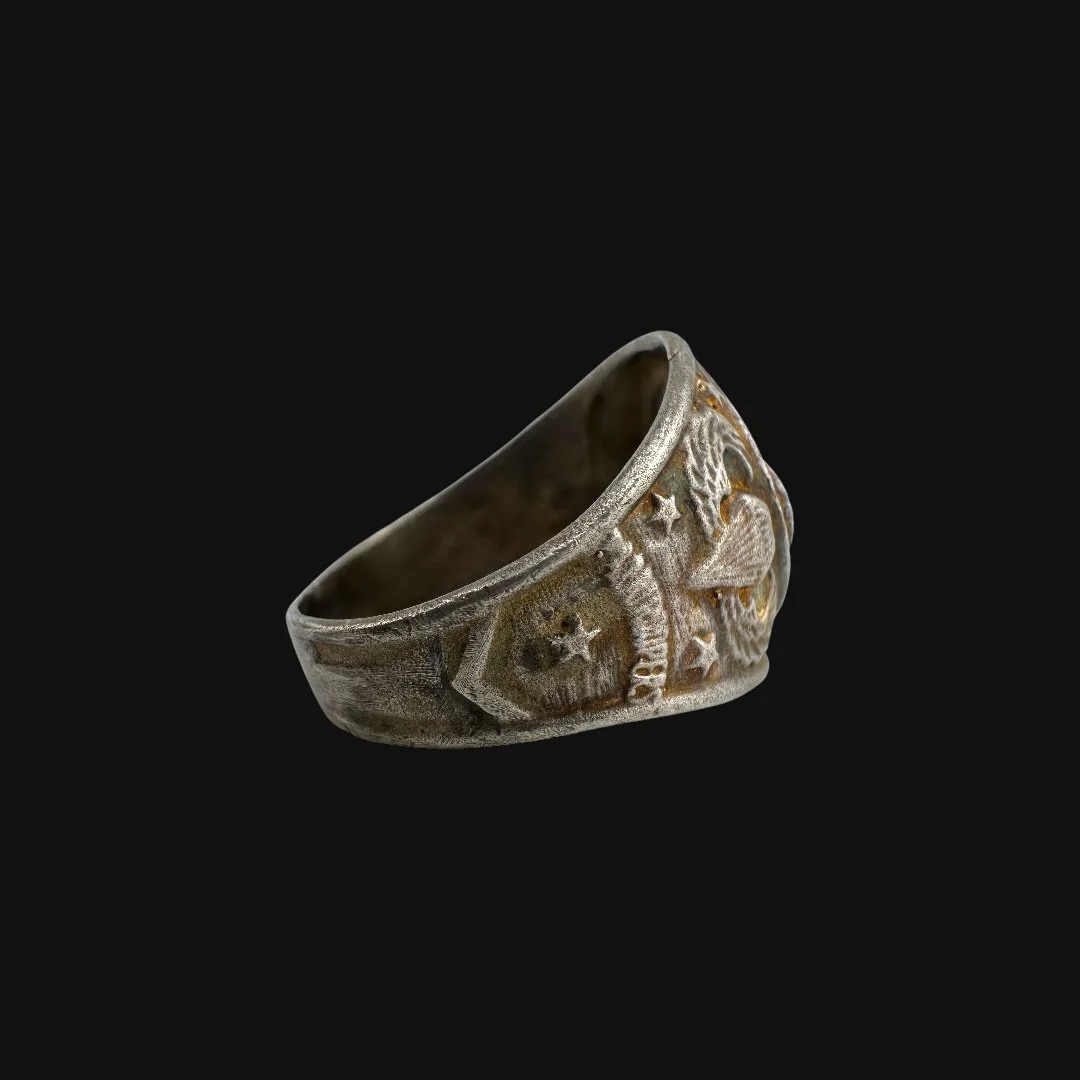 Image 5 of 13
Image 5 of 13

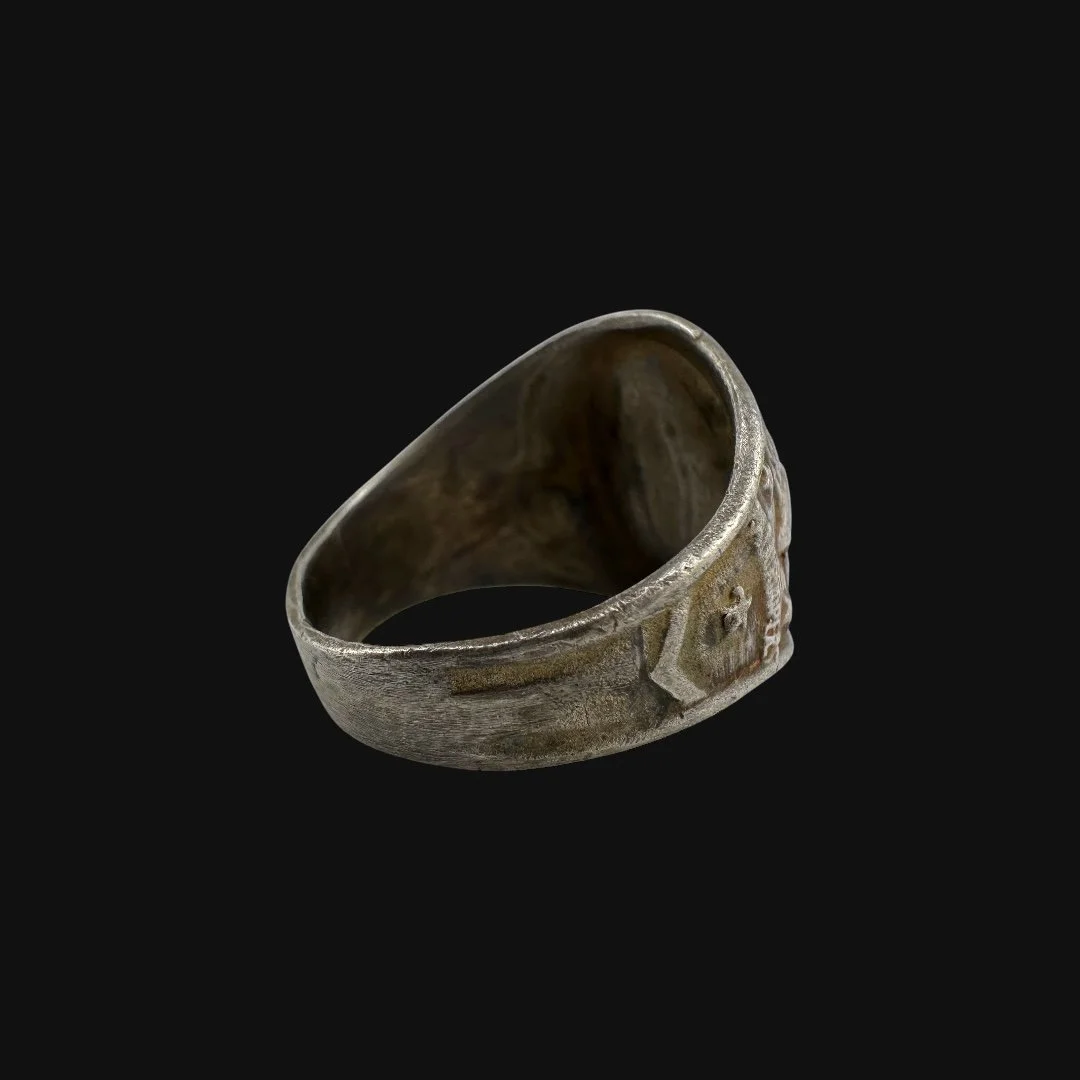 Image 6 of 13
Image 6 of 13

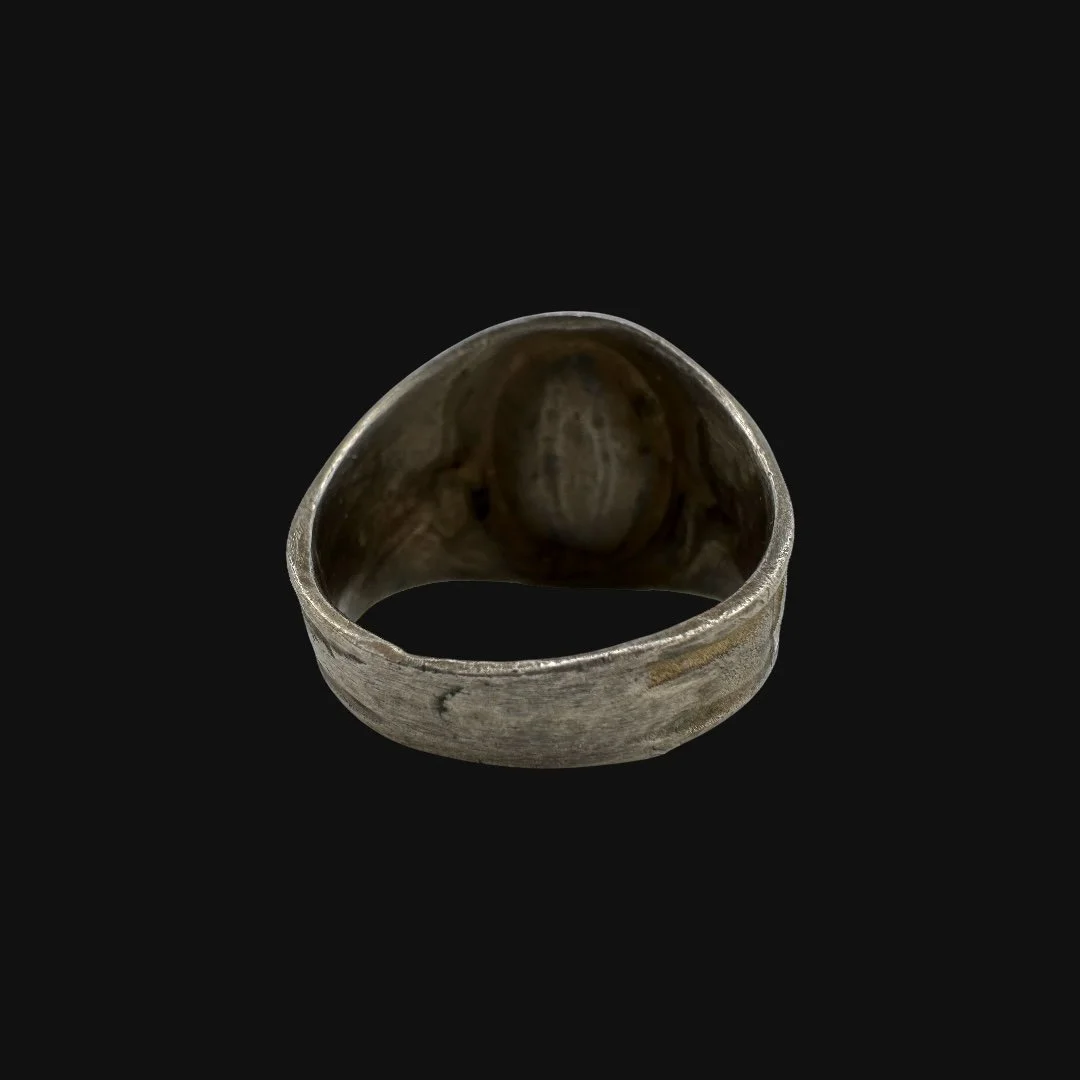 Image 7 of 13
Image 7 of 13

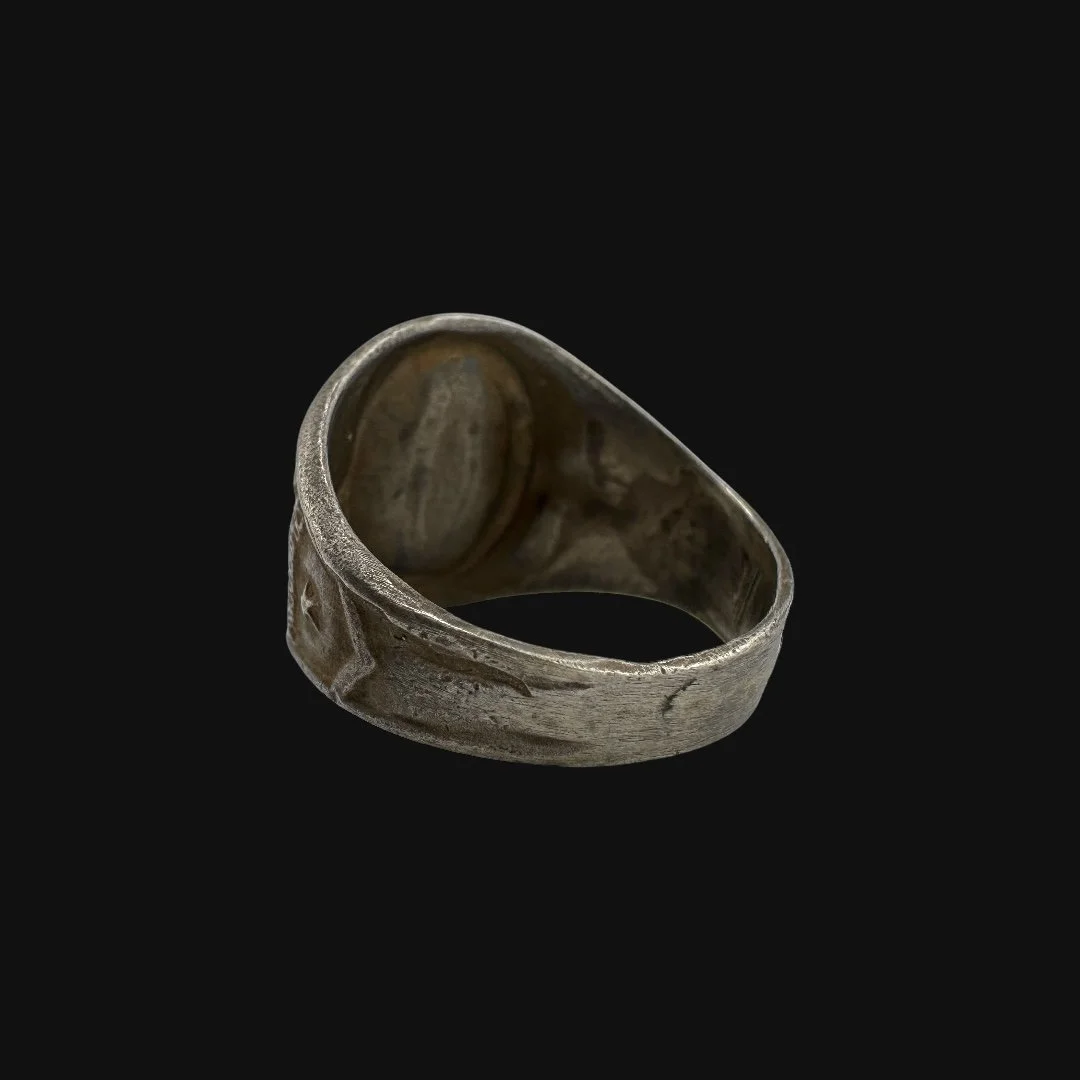 Image 8 of 13
Image 8 of 13

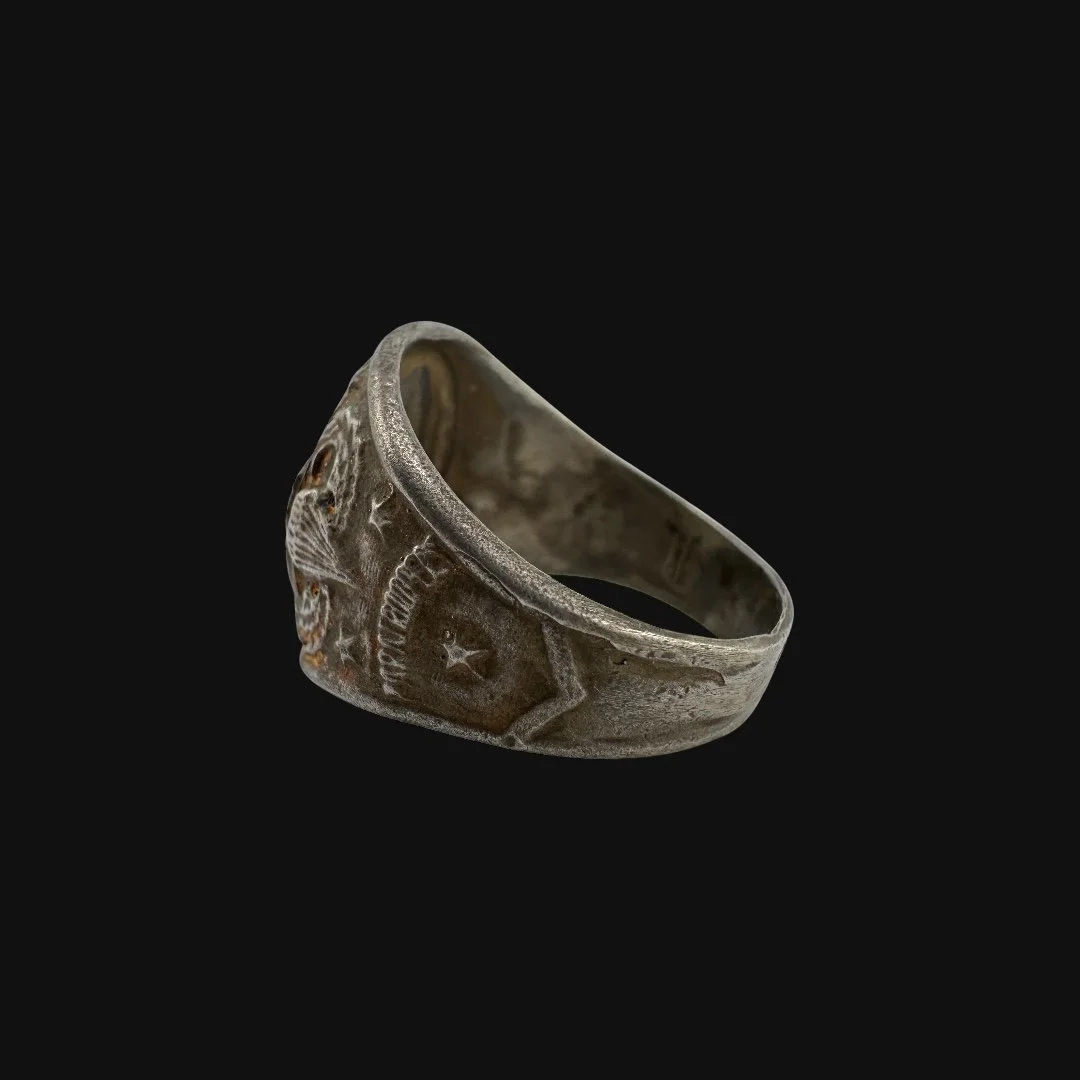 Image 9 of 13
Image 9 of 13

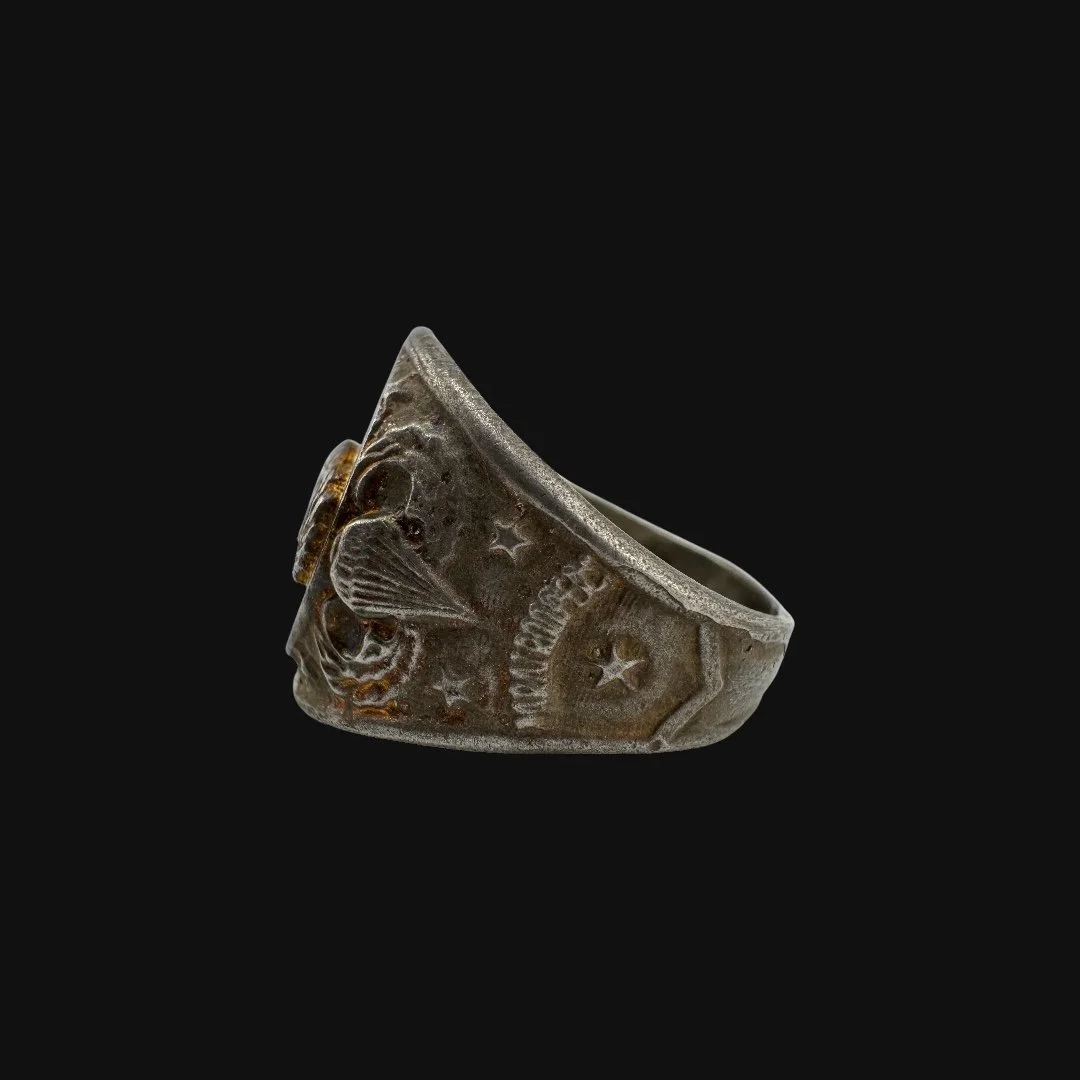 Image 10 of 13
Image 10 of 13

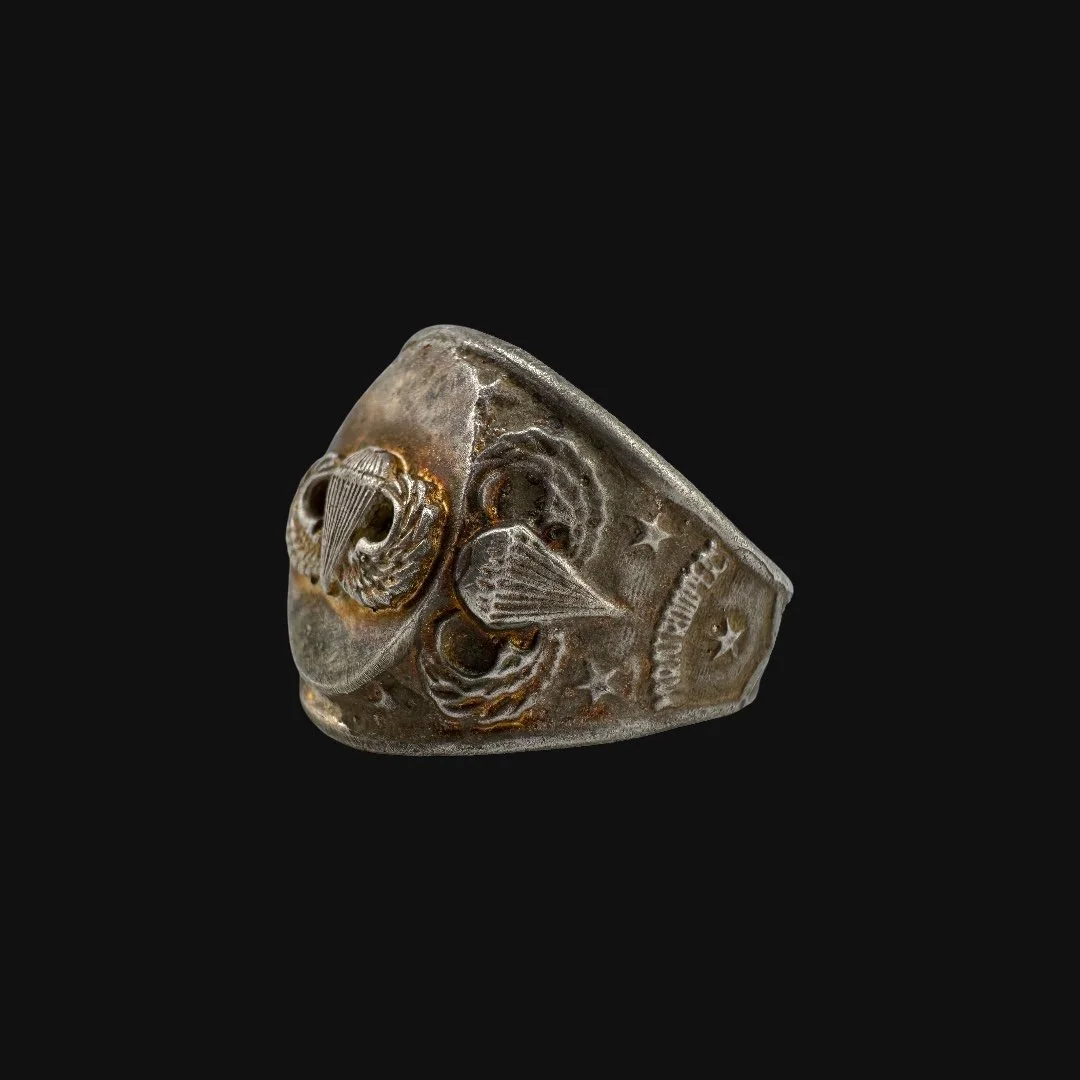 Image 11 of 13
Image 11 of 13

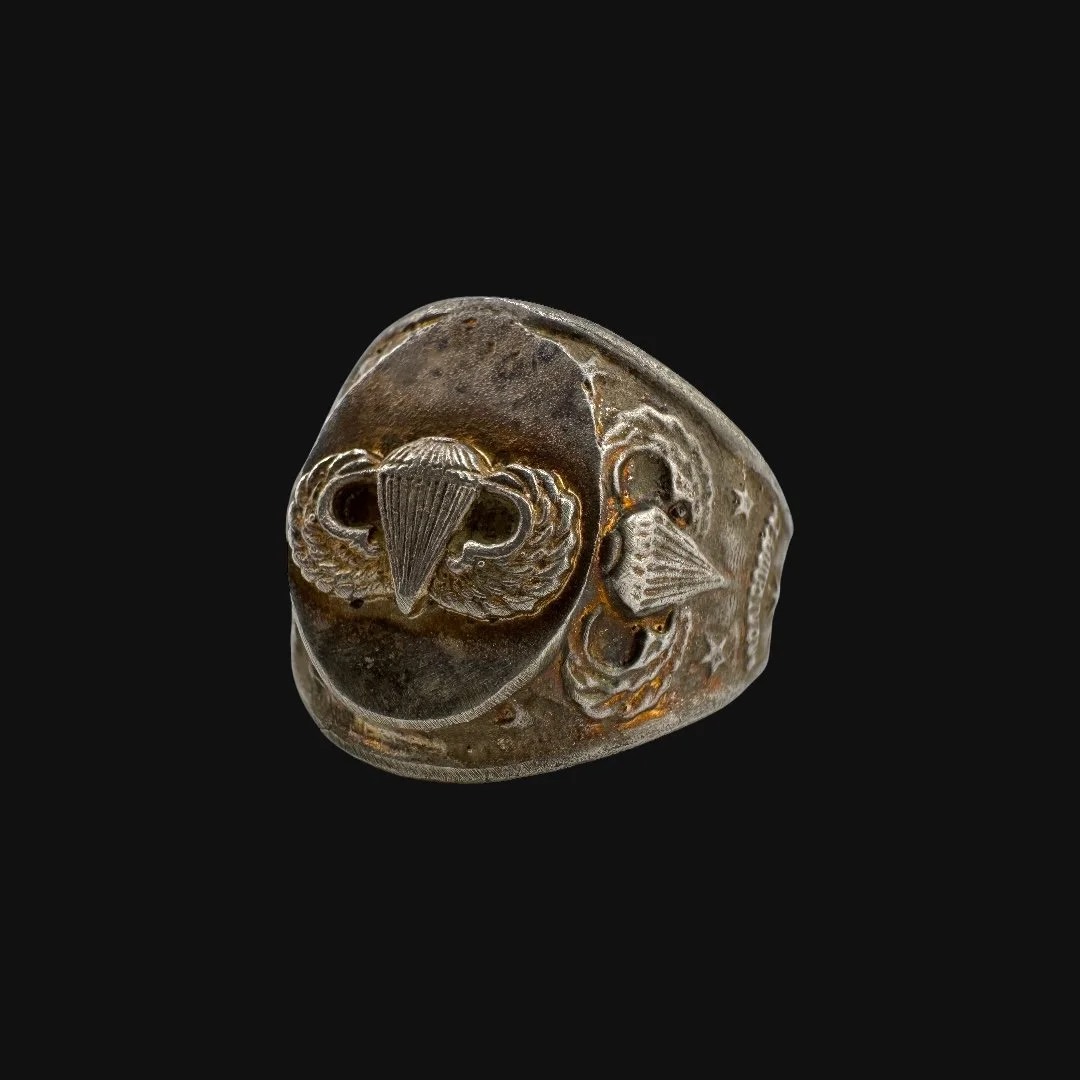 Image 12 of 13
Image 12 of 13

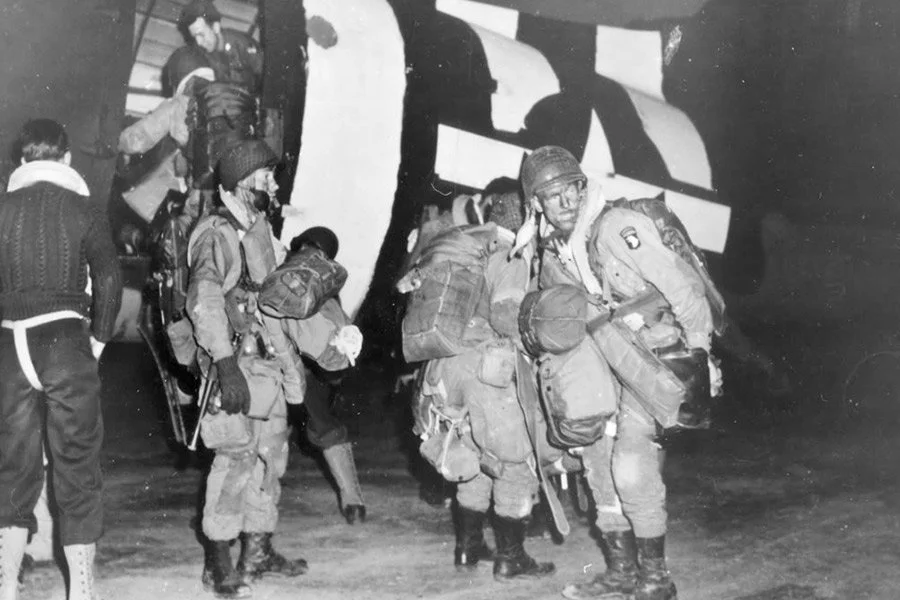 Image 13 of 13
Image 13 of 13














Original WWII U.S. Airborne Paratrooper “Jump Wings” Ring – 101st & 82nd Airborne Divisions – European Theater (Size 11)
Comes with a hand-signed C.O.A. and a full historical research write-up
From: World War II
Branch: U.S. Army
Division: 101st Airborne & 82nd Airborne Divisions
Dated: 1944-1945
Ring Size: 11 (US)
Material: Sterling Silver
Theater: European Theater
Wearable History Collection:
This authentic 1944-1945 WWII-era ring, preserved in its original and unaltered condition, combines exceptional craftsmanship with lasting durability, making it fully suitable for modern wear today. As part of our exclusive World War II “Wearable History Ring Collection,” it offers the rare opportunity to own and wear a genuine piece of World War II. Both a timeless accessory and a tangible link to the past, this truly one-of-a-kind ring stands as a wearable tribute to the courage and sacrifice of a generation.
Historical Significance to the 101st & 82nd Airborne Divisions:
This exceptionally rare and original piece of history is a World War II U.S. Airborne Paratrooper Parachutist’s Badge (“Jump Wings”) ring, a tangible piece of history from one of the most elite fighting forces of the war. The design is based on the original Parachute Badge created during WWII by Captain William P. Yarborough of the 501st Parachute Battalion, later a Lieutenant General. The badge was awarded only to those who successfully completed the grueling Airborne jump school, marking them as members of the United States’ first generation of paratroopers.
The soldier who wore this ring served in the storied ranks of the 101st and 82nd Airborne Divisions. These elite paratroopers carved their place in history through some of the most daring and critical missions of World War II. Their combat journey began in July 1943 with Operation Husky, the Allied invasion of Sicily, where nighttime jumps scattered across the island disrupted enemy defenses and helped secure a vital foothold in the Mediterranean. Soon after came Operation Avalanche, the September 1943 invasion of mainland Italy at Salerno, where elements of the divisions provided reinforcement and secured key positions against determined German counterattacks.
In the early hours of June 6, 1944, both divisions made their legendary combat jumps during Operation Neptune, the airborne phase of the Normandy D-Day landings. Dropping behind enemy lines under heavy fire, they seized bridges, cut off German reinforcements, and secured approaches to Utah Beach. Just months later, in September 1944, they took part in Operation Market Garden, the bold but costly attempt to capture key bridges in the Netherlands and open the road into Germany. The 101st held critical bridges and towns such as Eindhoven and Veghel, while the 82nd fought for the high ground at Nijmegen.
That winter, they faced one of their greatest trials in the Ardennes during the Battle of the Bulge. Surrounded in Bastogne and elsewhere, the 101st held firm against overwhelming German assaults, while the 82nd fought fiercely along the northern shoulder of the German advance. Finally, in April 1945, they participated in Operation Varsity, the massive airborne crossing of the Rhine, helping to drive deep into the heart of Germany in the final push toward Allied victory.
From the scorching heat of Sicily to the frozen forests of Belgium, the 101st and 82nd Airborne Divisions proved time and again that they were more than soldiers. They were the tip of the spear, striking deep behind enemy lines and changing the course of the war through skill, bravery, and unbreakable will.
The Legacy Within This Ring:
Unlike standard-issue military insignia, this ring was a privately commissioned piece, handcrafted in sterling silver for an Airborne paratrooper. Such rings allowed these elite soldiers to proudly display their parachutist’s badge in a wearable form, serving as both a personal keepsake and a symbol of their accomplishment and camaraderie. Today, this ring stands not only as a remarkable collectible but as a preserved fragment of Airborne heritage. A wearable tribute to the skill, courage, and sacrifice of the men who leapt into history from the skies of WWII.
Comes with a hand-signed C.O.A. and a full historical research write-up
From: World War II
Branch: U.S. Army
Division: 101st Airborne & 82nd Airborne Divisions
Dated: 1944-1945
Ring Size: 11 (US)
Material: Sterling Silver
Theater: European Theater
Wearable History Collection:
This authentic 1944-1945 WWII-era ring, preserved in its original and unaltered condition, combines exceptional craftsmanship with lasting durability, making it fully suitable for modern wear today. As part of our exclusive World War II “Wearable History Ring Collection,” it offers the rare opportunity to own and wear a genuine piece of World War II. Both a timeless accessory and a tangible link to the past, this truly one-of-a-kind ring stands as a wearable tribute to the courage and sacrifice of a generation.
Historical Significance to the 101st & 82nd Airborne Divisions:
This exceptionally rare and original piece of history is a World War II U.S. Airborne Paratrooper Parachutist’s Badge (“Jump Wings”) ring, a tangible piece of history from one of the most elite fighting forces of the war. The design is based on the original Parachute Badge created during WWII by Captain William P. Yarborough of the 501st Parachute Battalion, later a Lieutenant General. The badge was awarded only to those who successfully completed the grueling Airborne jump school, marking them as members of the United States’ first generation of paratroopers.
The soldier who wore this ring served in the storied ranks of the 101st and 82nd Airborne Divisions. These elite paratroopers carved their place in history through some of the most daring and critical missions of World War II. Their combat journey began in July 1943 with Operation Husky, the Allied invasion of Sicily, where nighttime jumps scattered across the island disrupted enemy defenses and helped secure a vital foothold in the Mediterranean. Soon after came Operation Avalanche, the September 1943 invasion of mainland Italy at Salerno, where elements of the divisions provided reinforcement and secured key positions against determined German counterattacks.
In the early hours of June 6, 1944, both divisions made their legendary combat jumps during Operation Neptune, the airborne phase of the Normandy D-Day landings. Dropping behind enemy lines under heavy fire, they seized bridges, cut off German reinforcements, and secured approaches to Utah Beach. Just months later, in September 1944, they took part in Operation Market Garden, the bold but costly attempt to capture key bridges in the Netherlands and open the road into Germany. The 101st held critical bridges and towns such as Eindhoven and Veghel, while the 82nd fought for the high ground at Nijmegen.
That winter, they faced one of their greatest trials in the Ardennes during the Battle of the Bulge. Surrounded in Bastogne and elsewhere, the 101st held firm against overwhelming German assaults, while the 82nd fought fiercely along the northern shoulder of the German advance. Finally, in April 1945, they participated in Operation Varsity, the massive airborne crossing of the Rhine, helping to drive deep into the heart of Germany in the final push toward Allied victory.
From the scorching heat of Sicily to the frozen forests of Belgium, the 101st and 82nd Airborne Divisions proved time and again that they were more than soldiers. They were the tip of the spear, striking deep behind enemy lines and changing the course of the war through skill, bravery, and unbreakable will.
The Legacy Within This Ring:
Unlike standard-issue military insignia, this ring was a privately commissioned piece, handcrafted in sterling silver for an Airborne paratrooper. Such rings allowed these elite soldiers to proudly display their parachutist’s badge in a wearable form, serving as both a personal keepsake and a symbol of their accomplishment and camaraderie. Today, this ring stands not only as a remarkable collectible but as a preserved fragment of Airborne heritage. A wearable tribute to the skill, courage, and sacrifice of the men who leapt into history from the skies of WWII.
